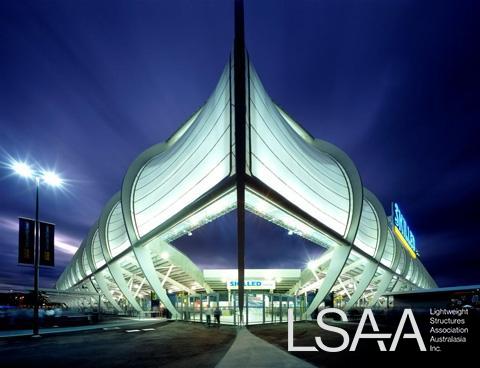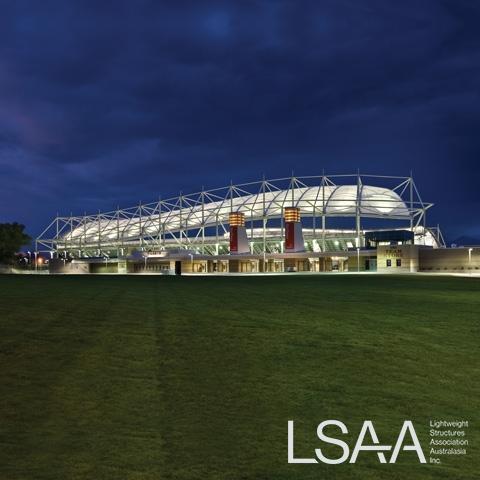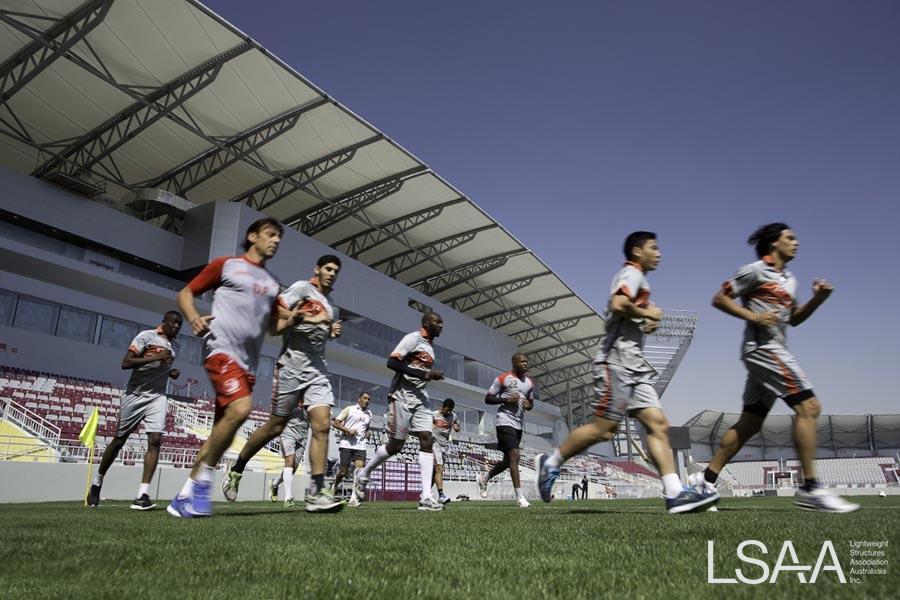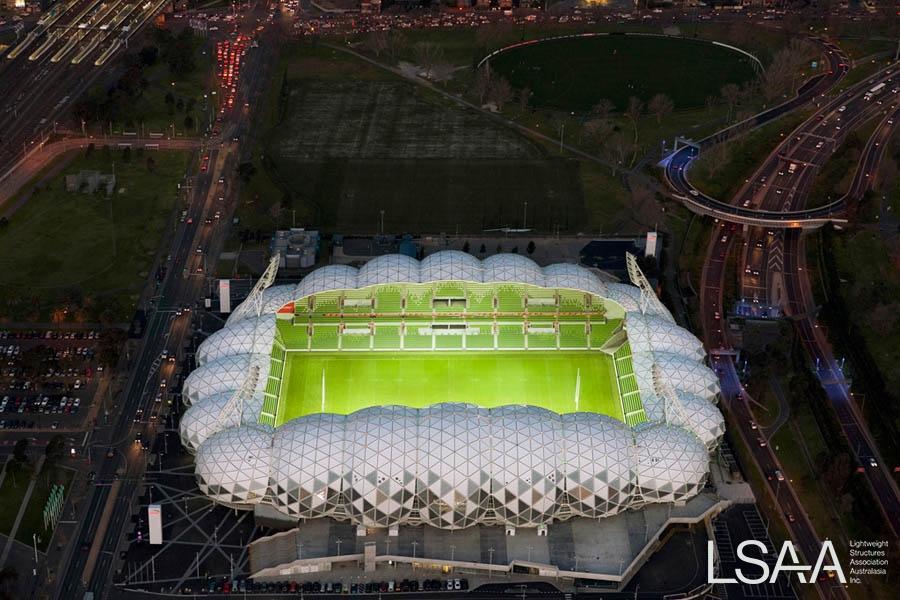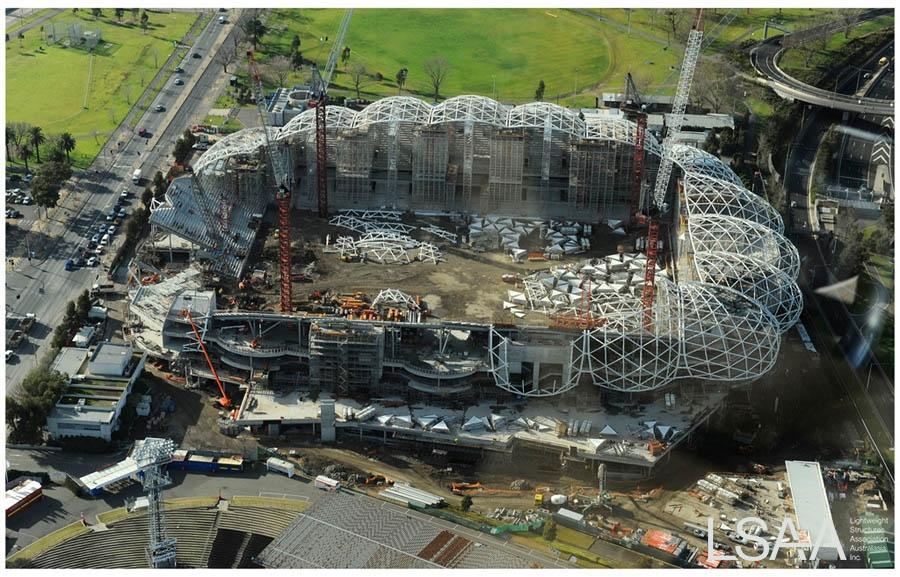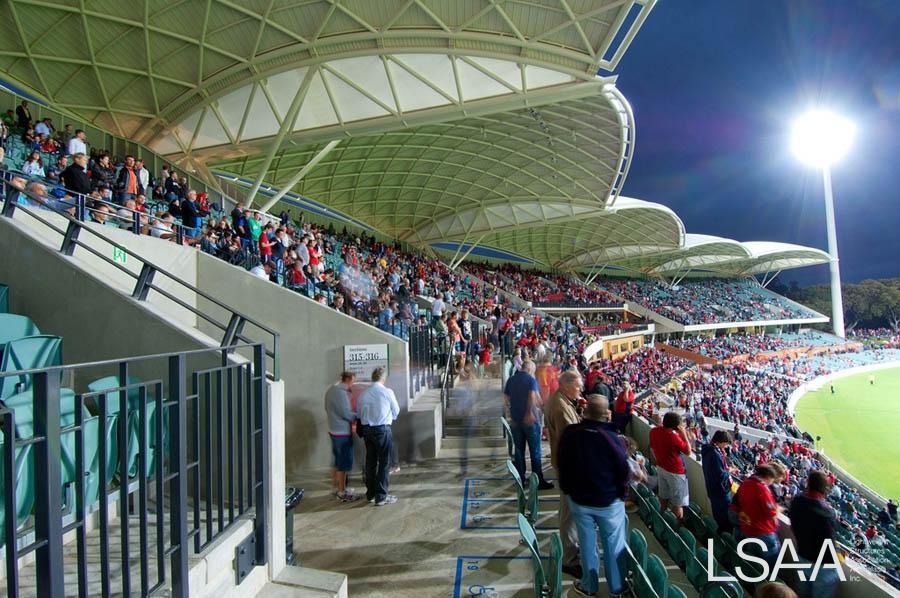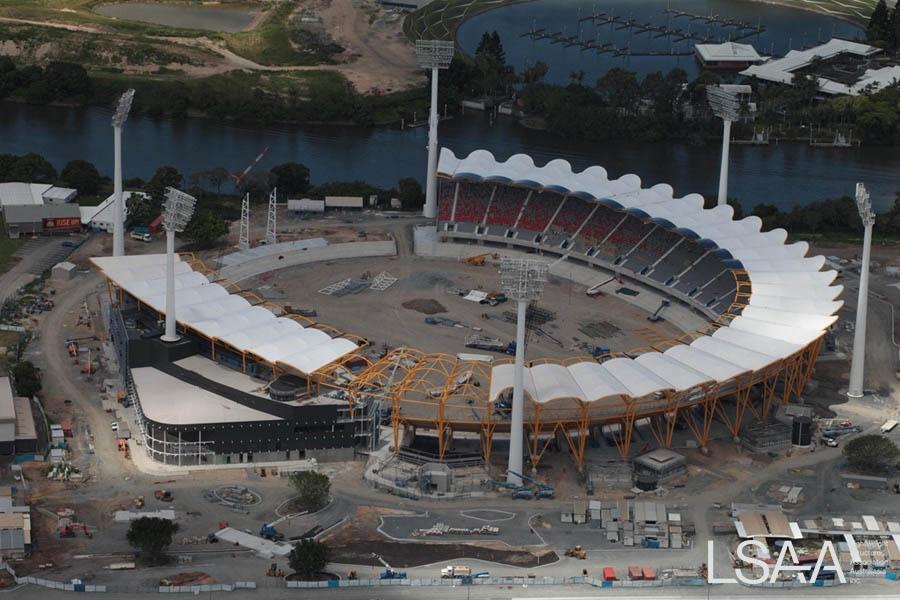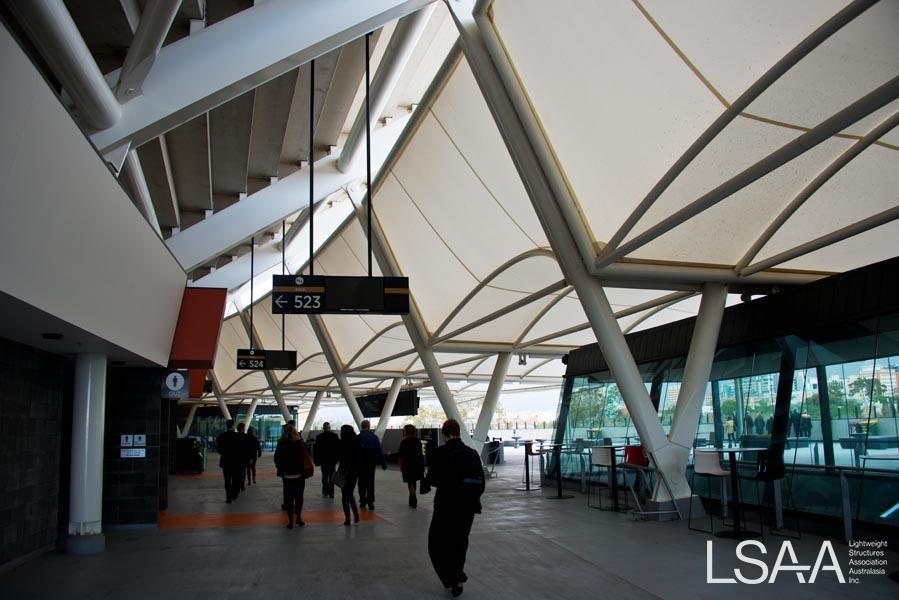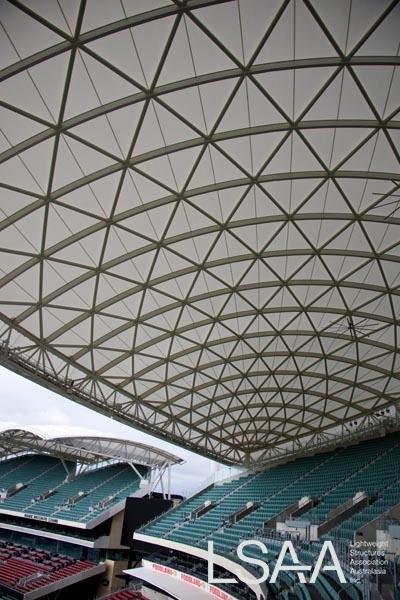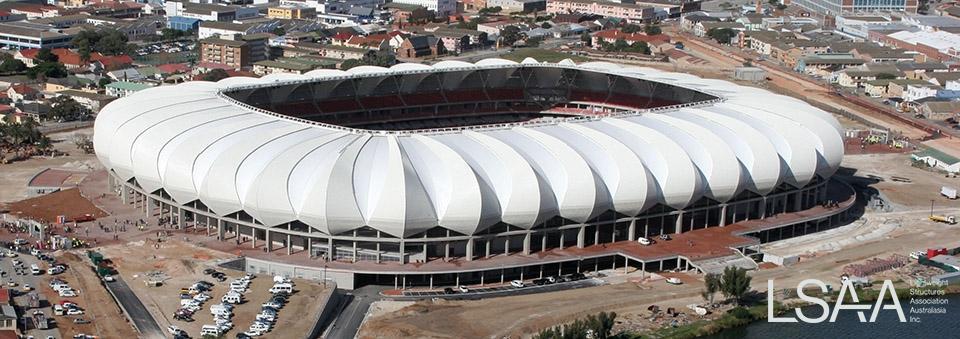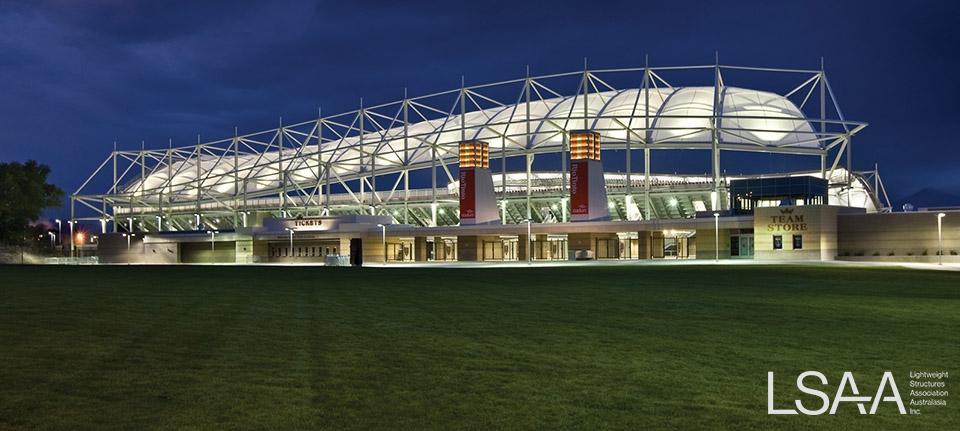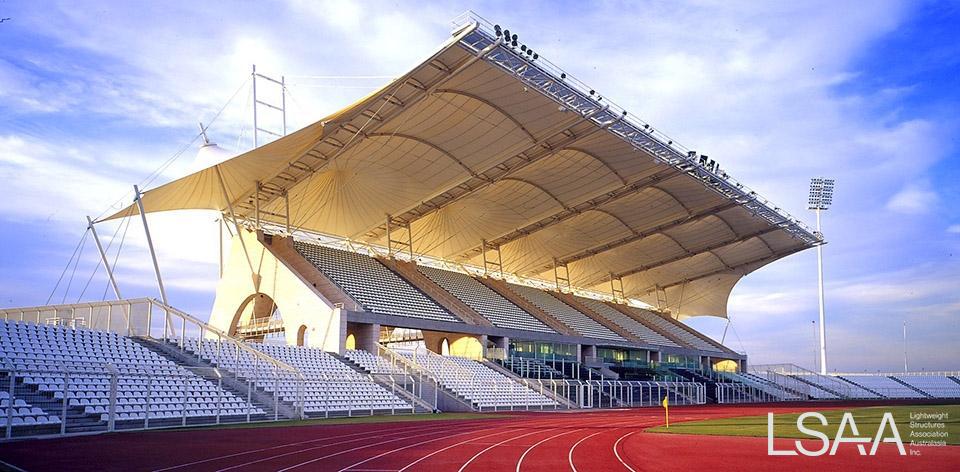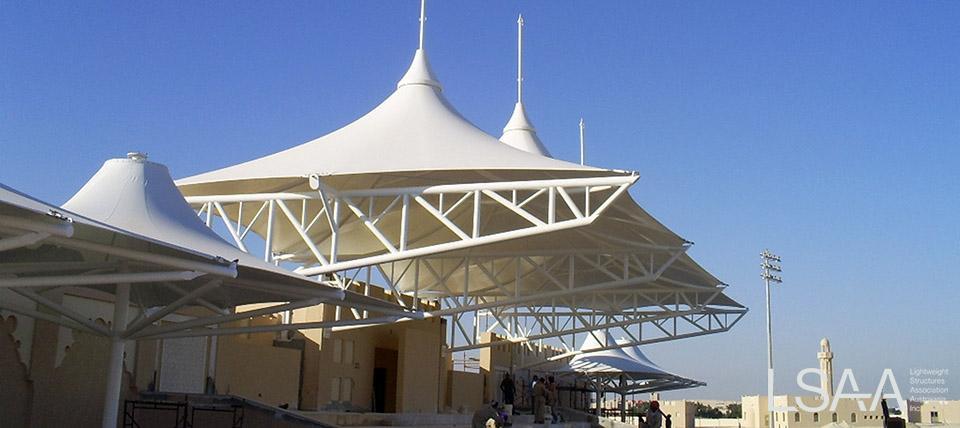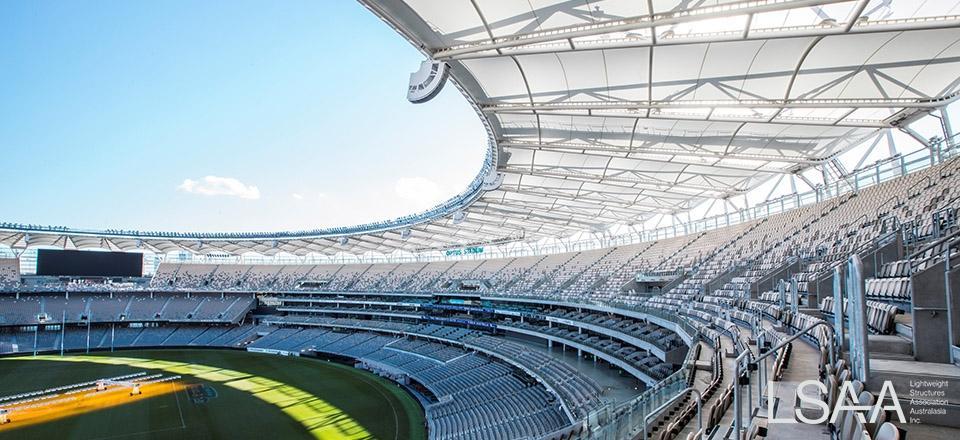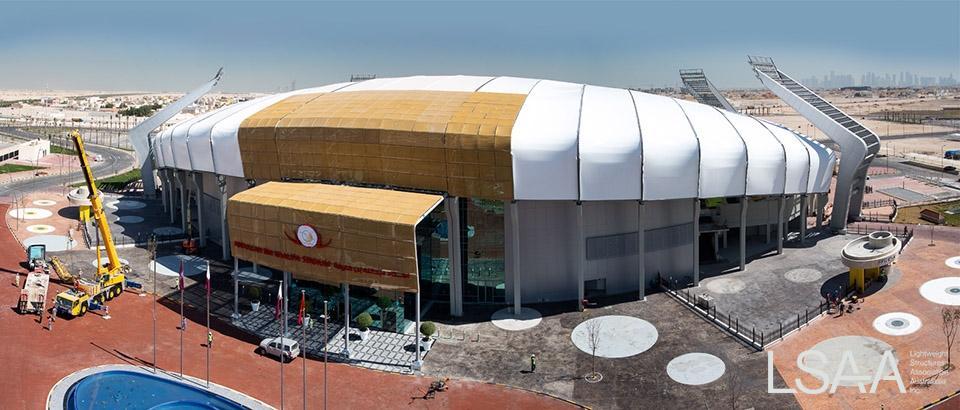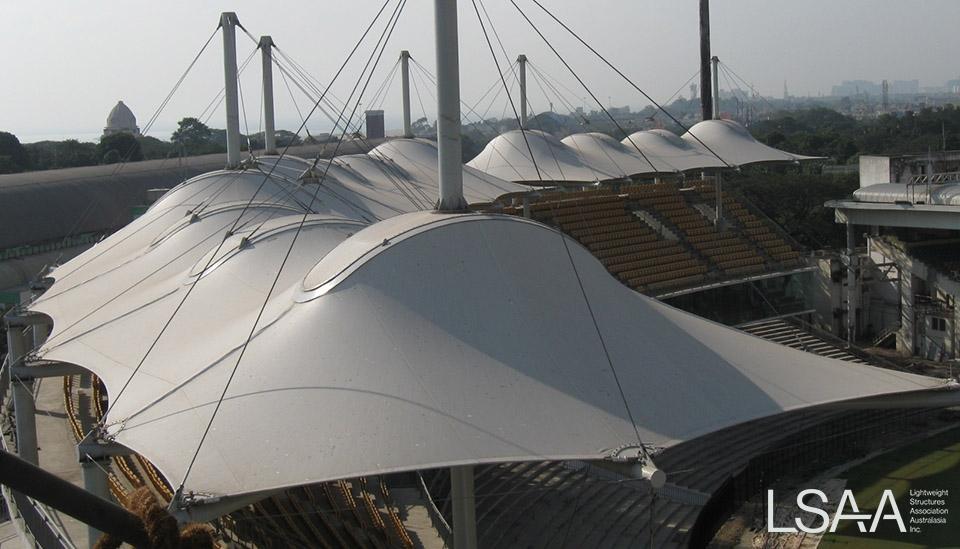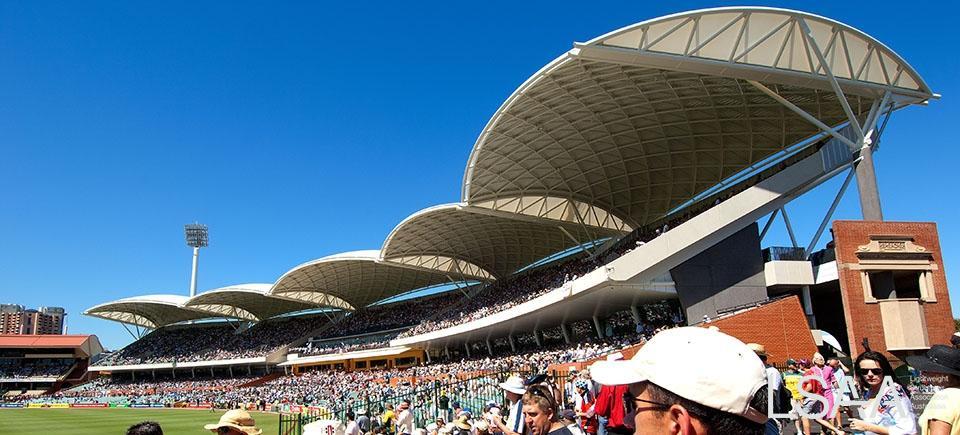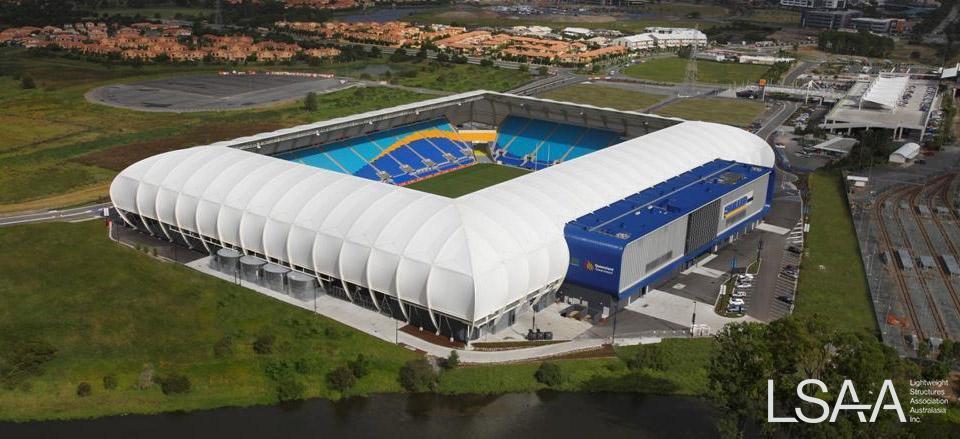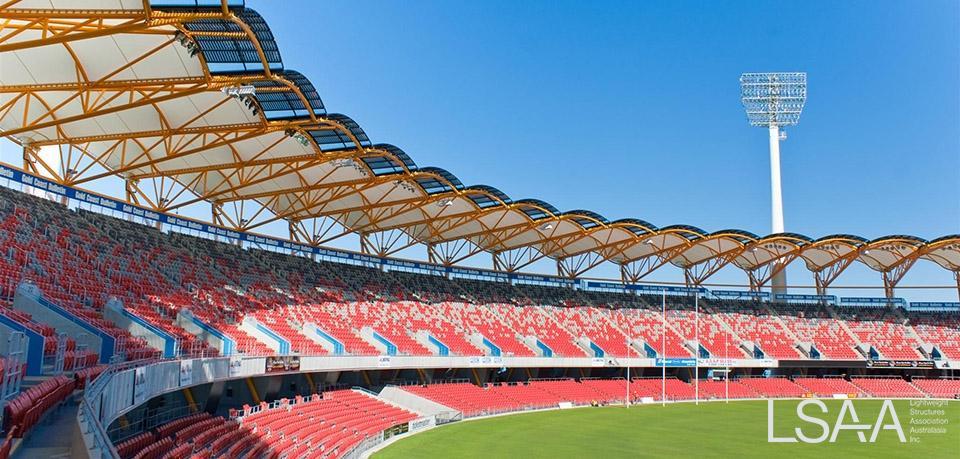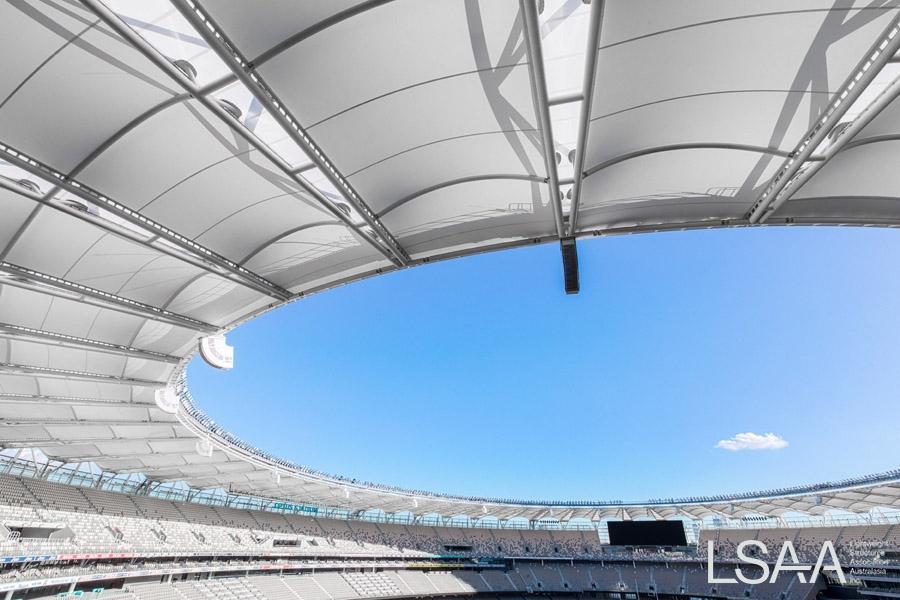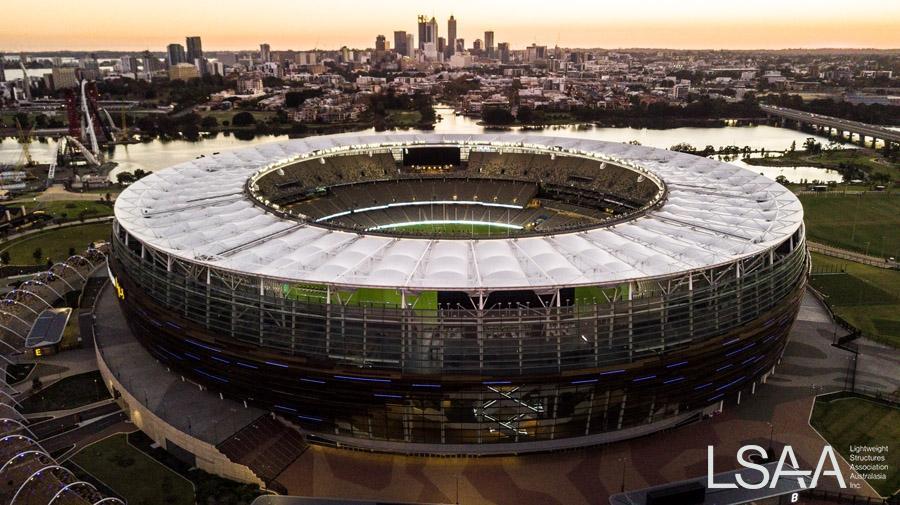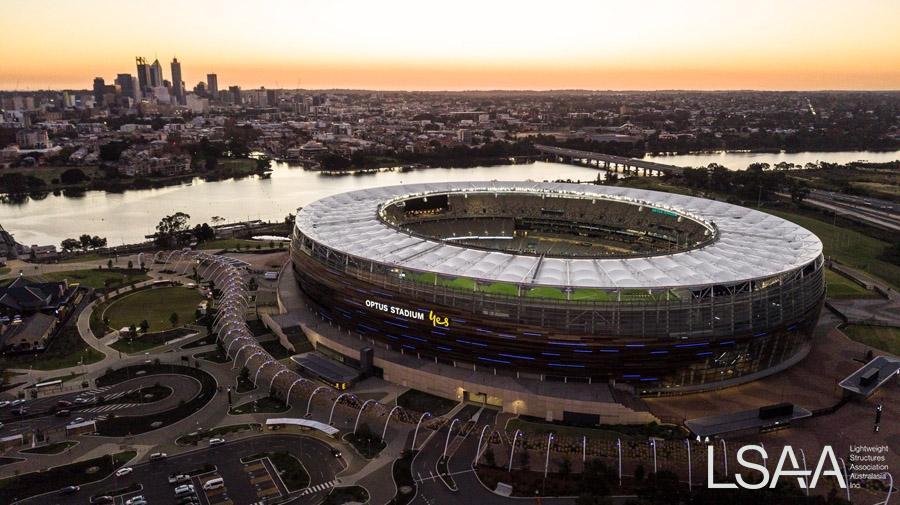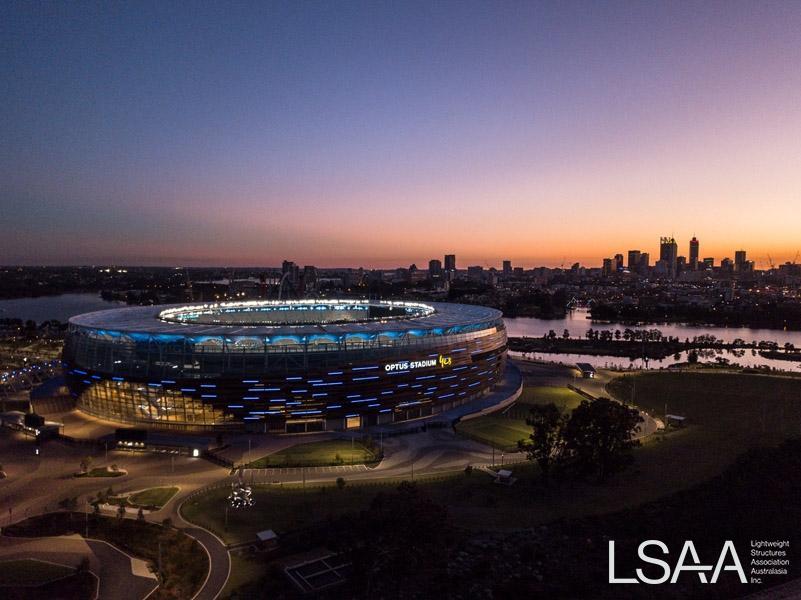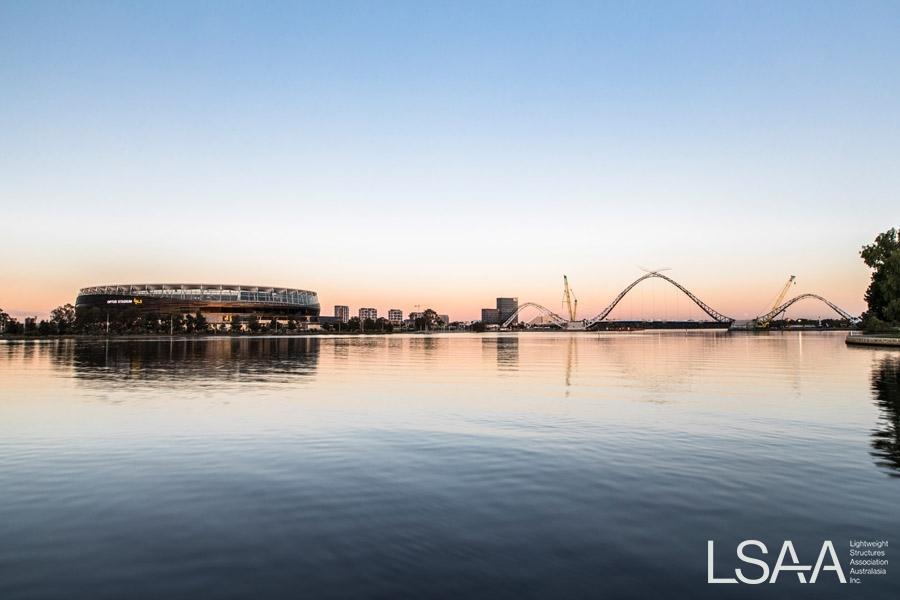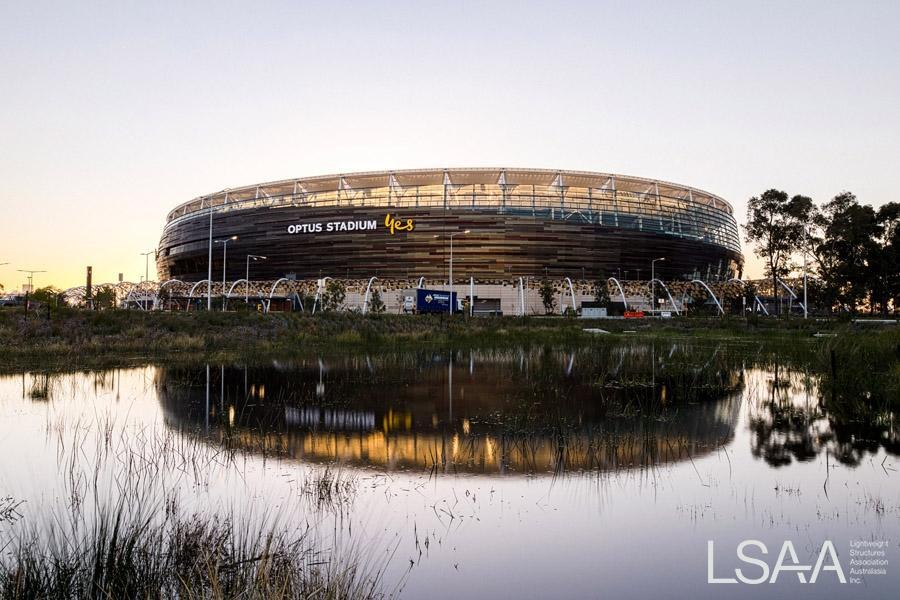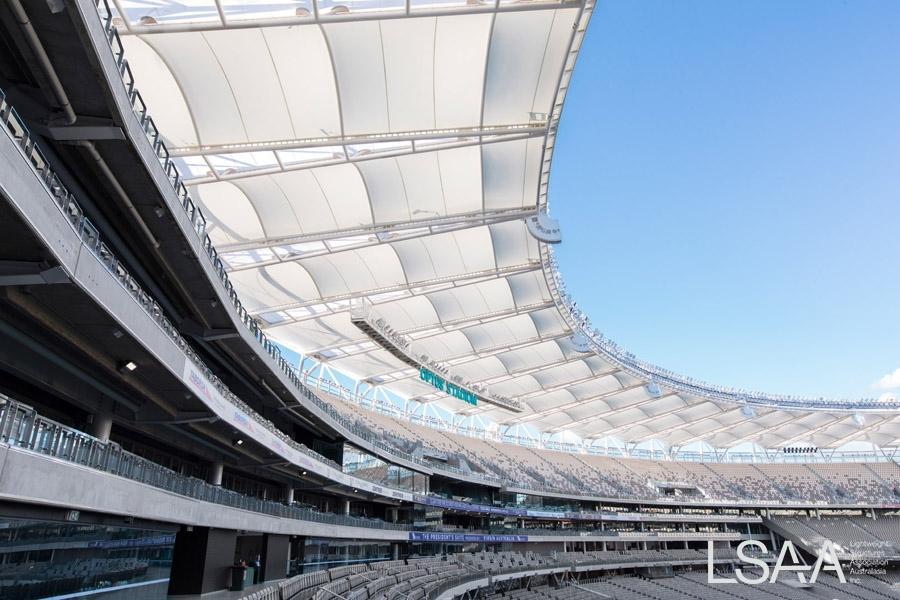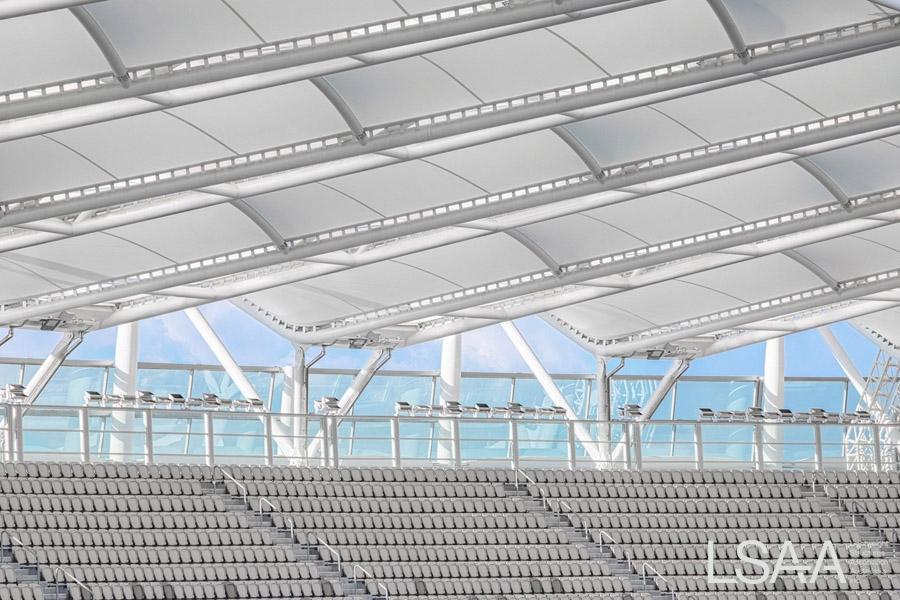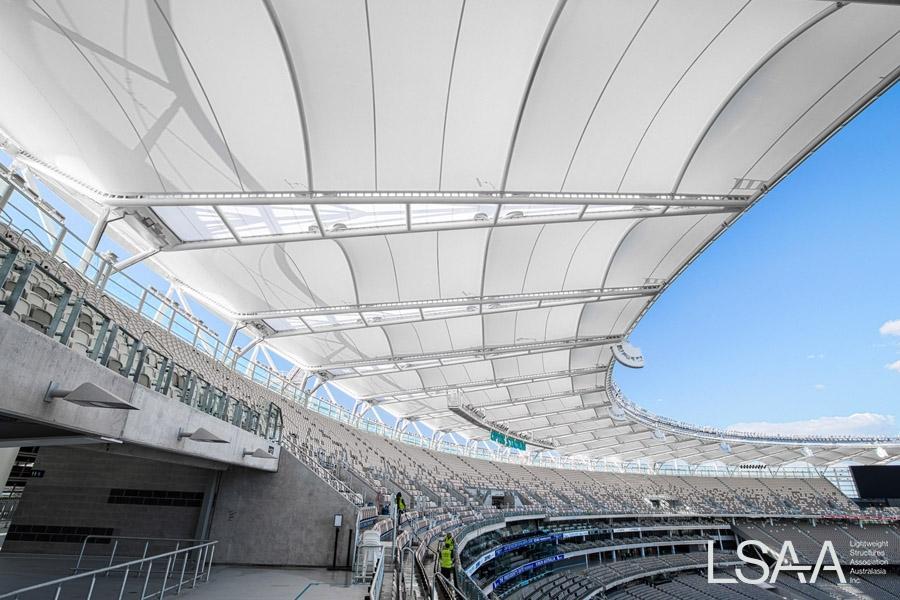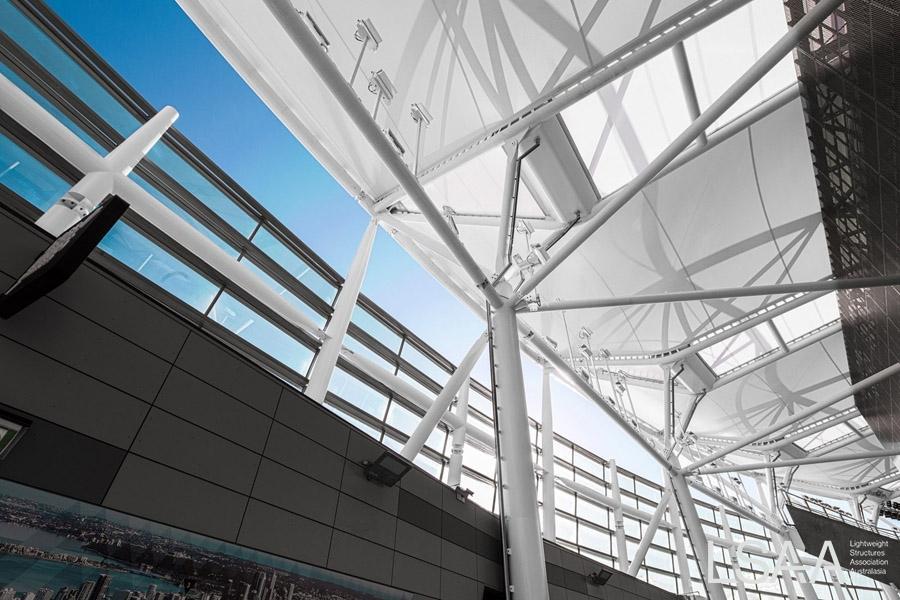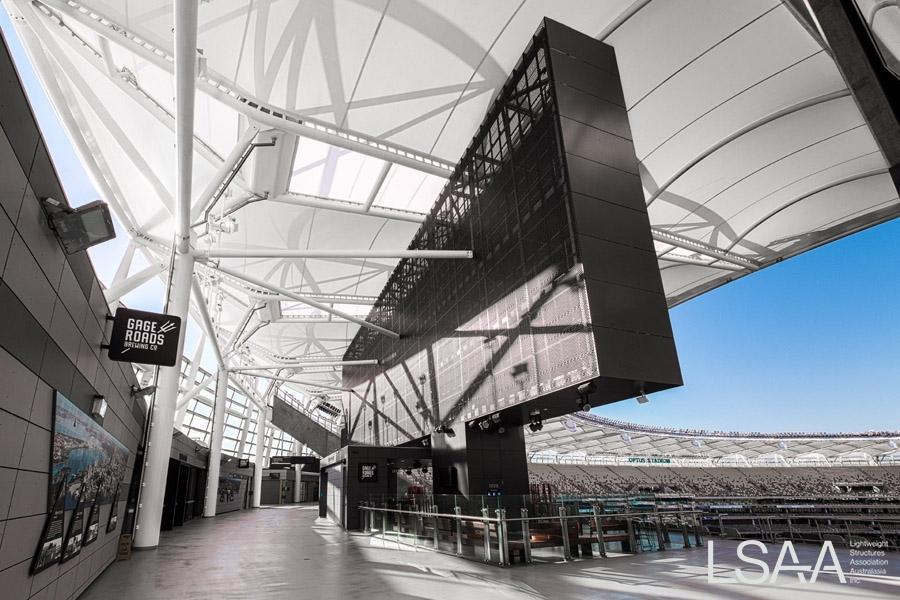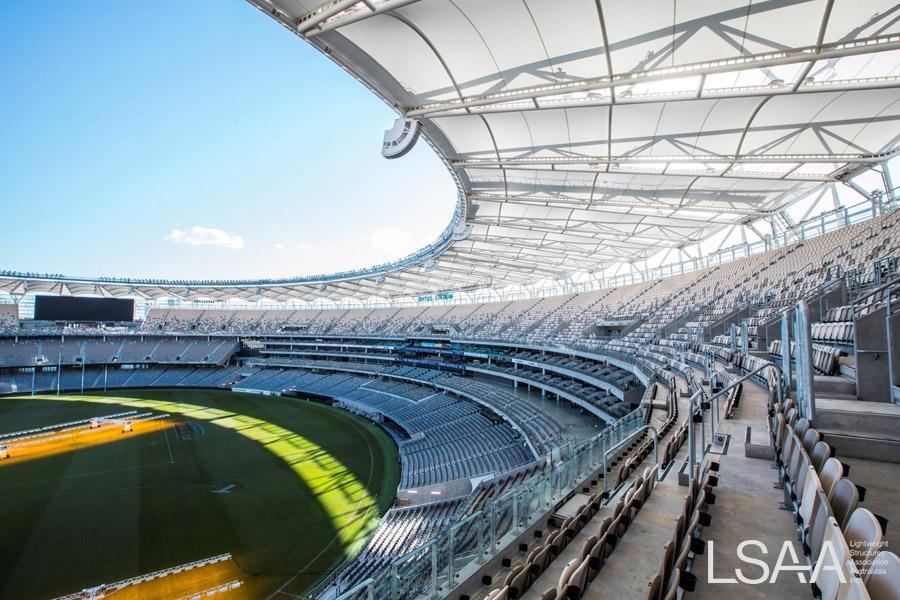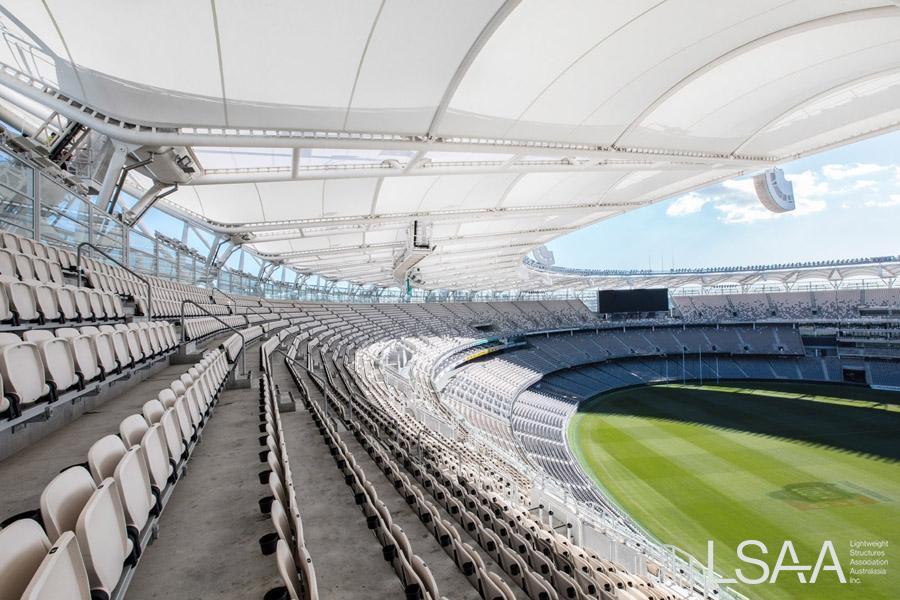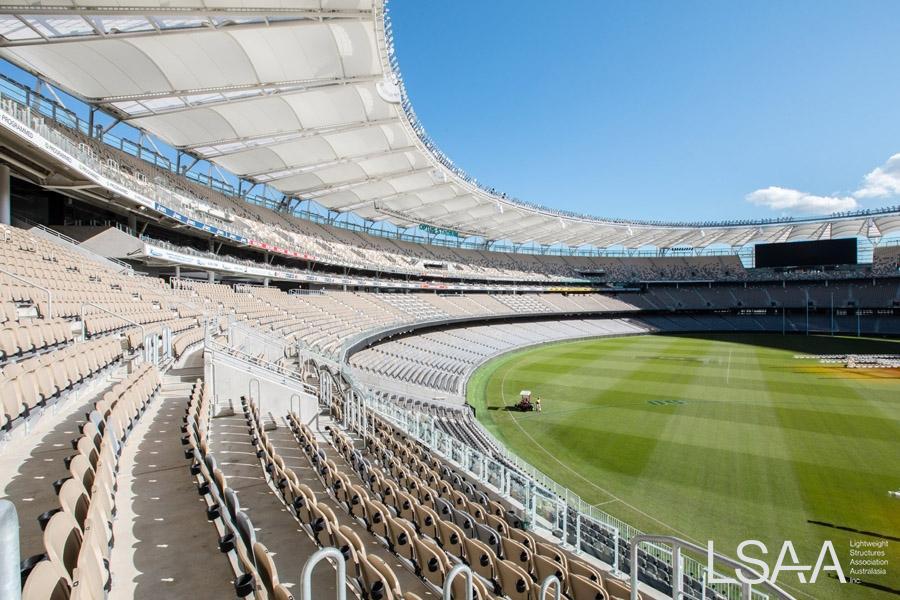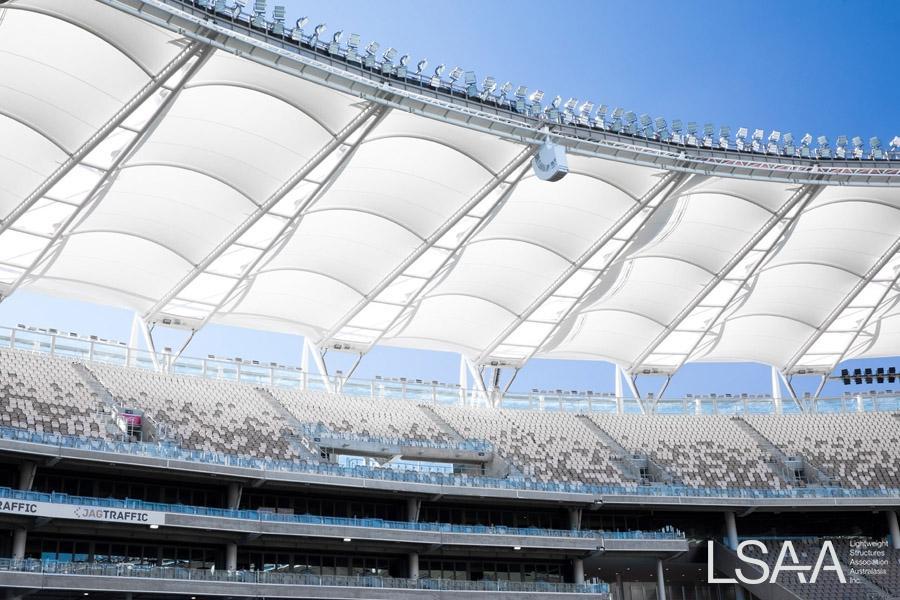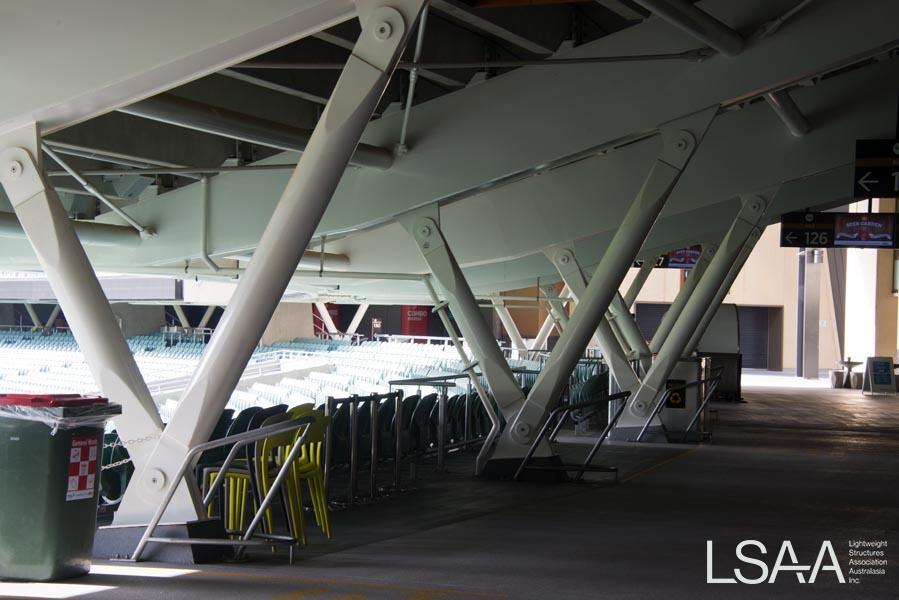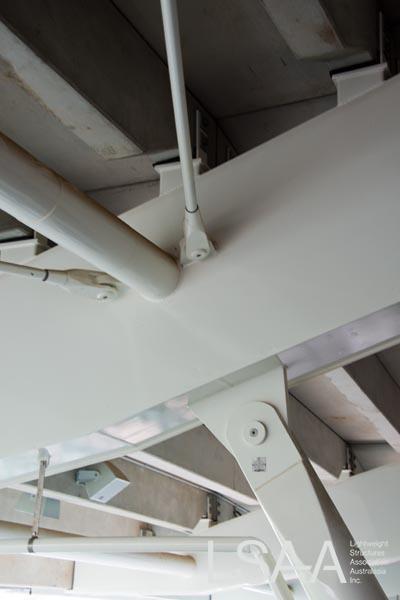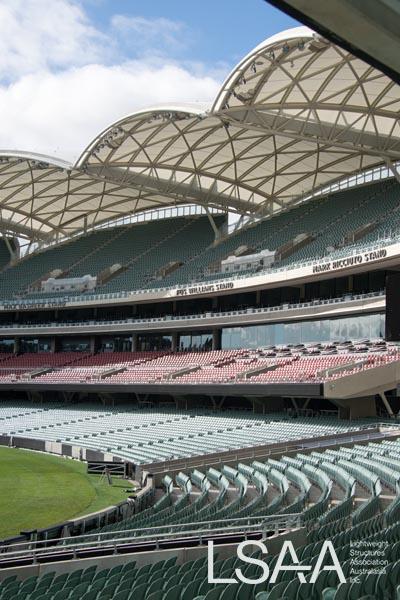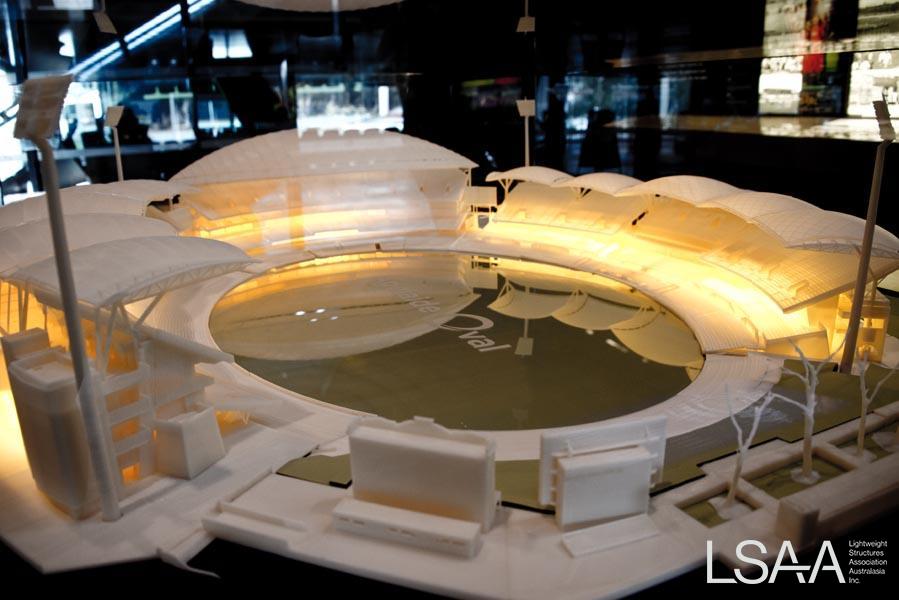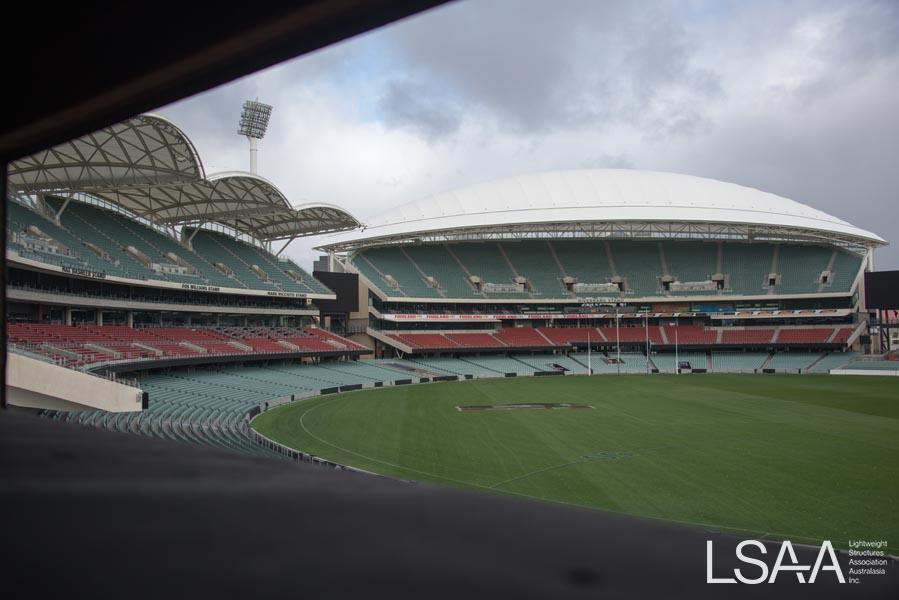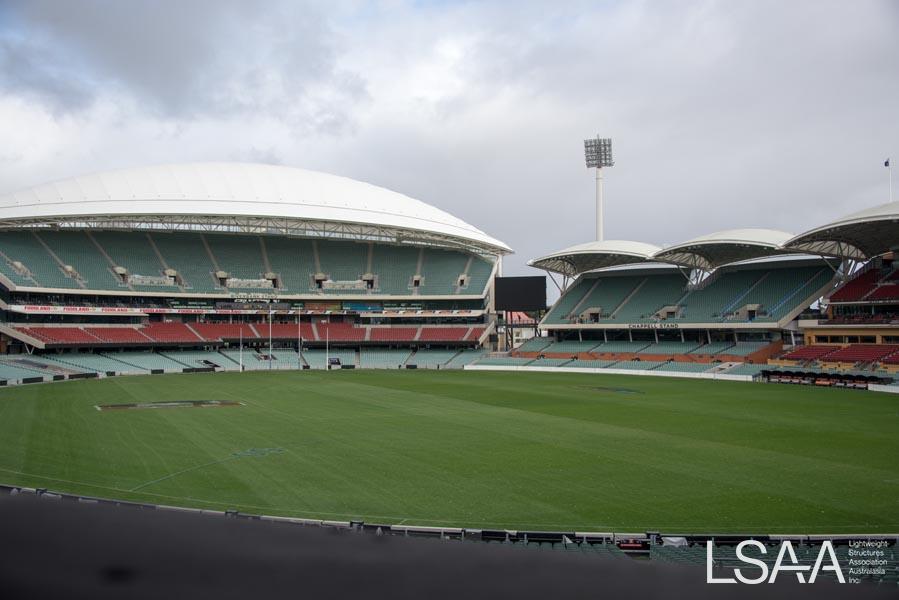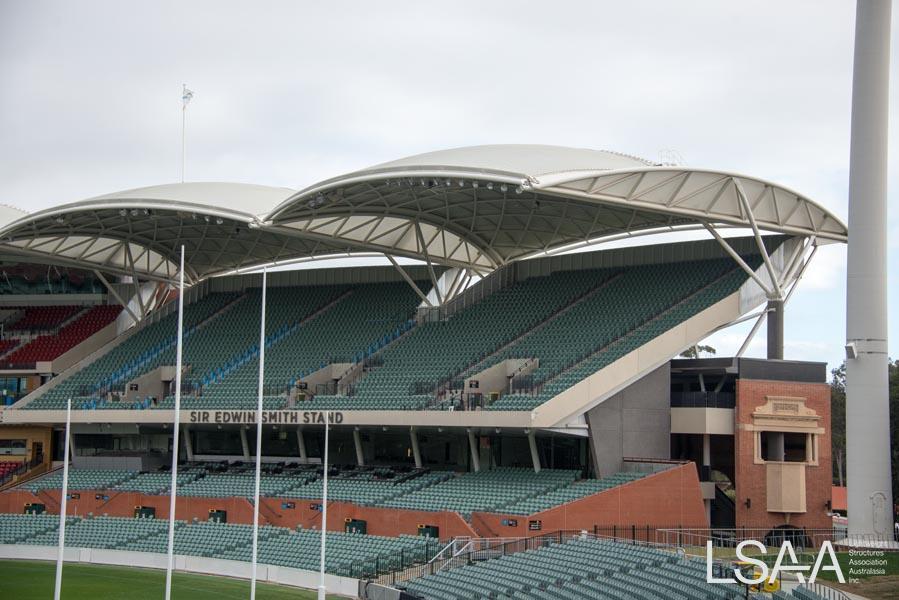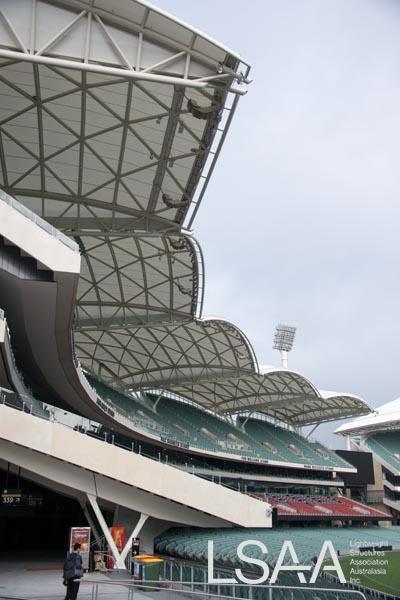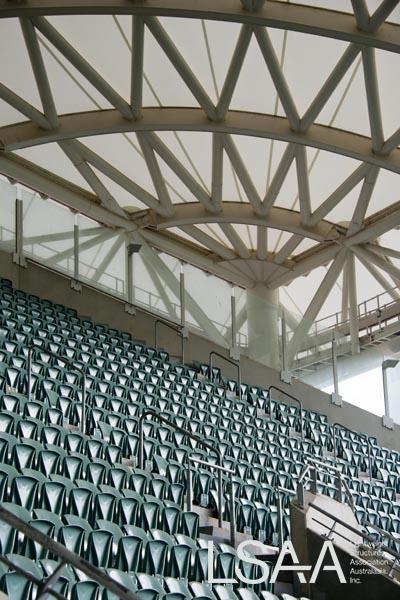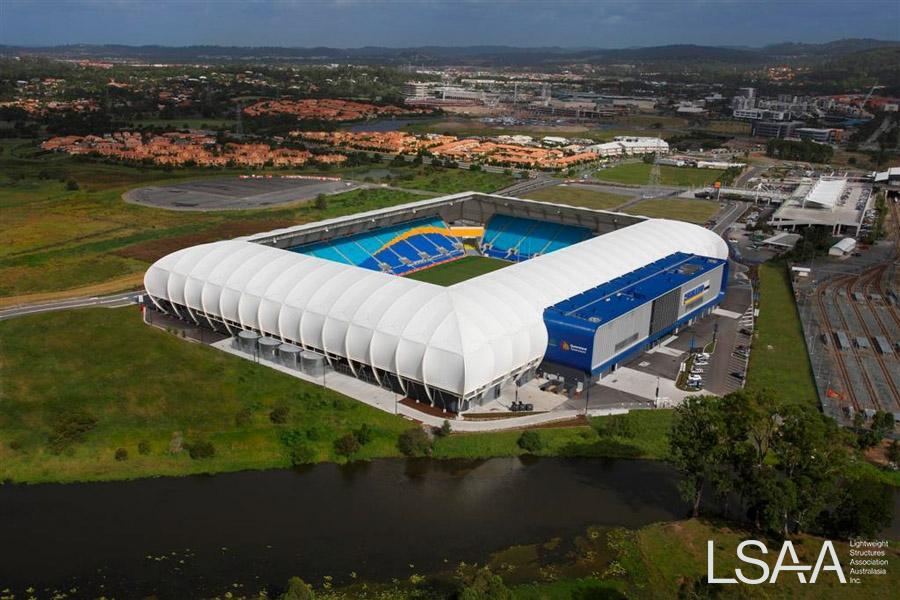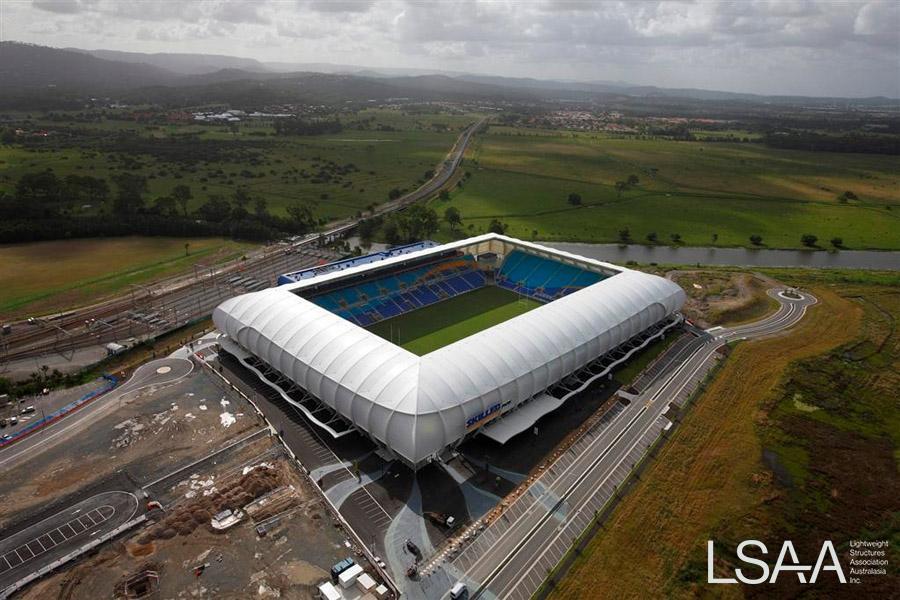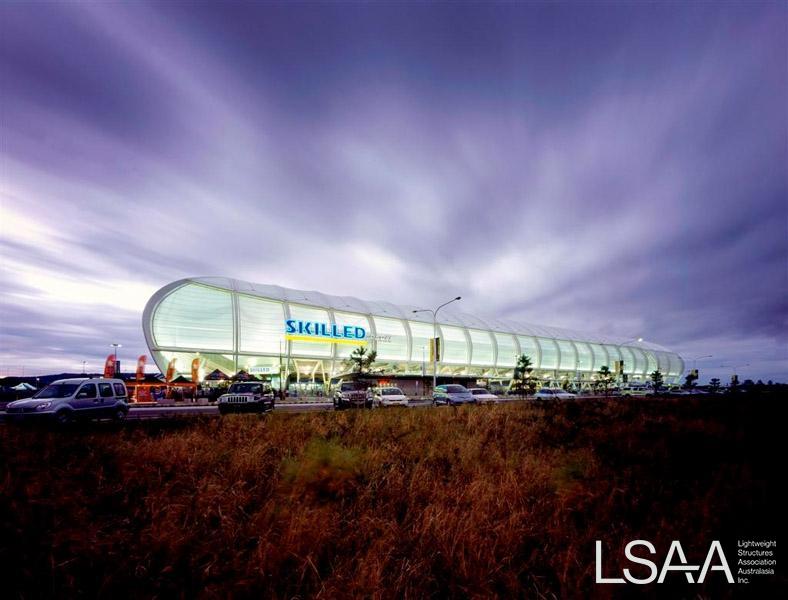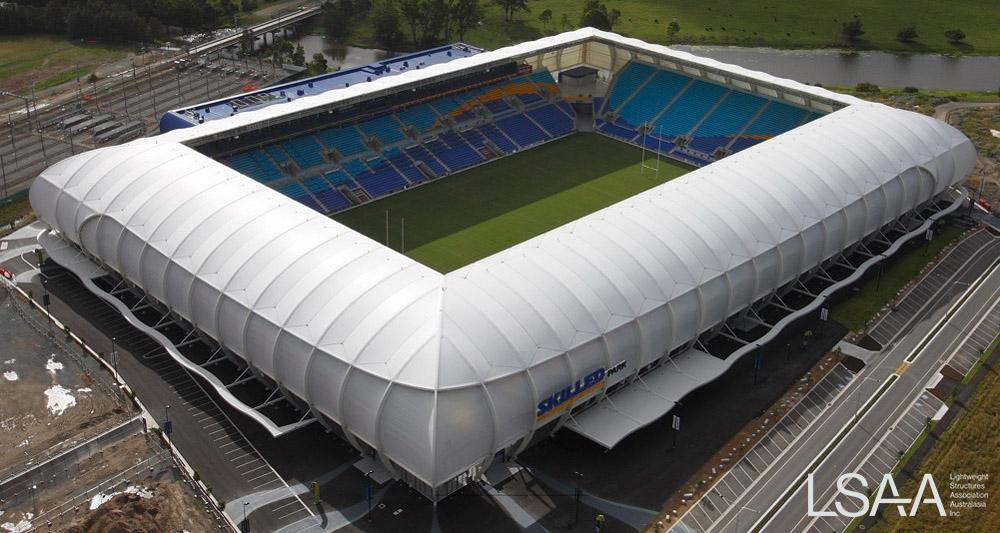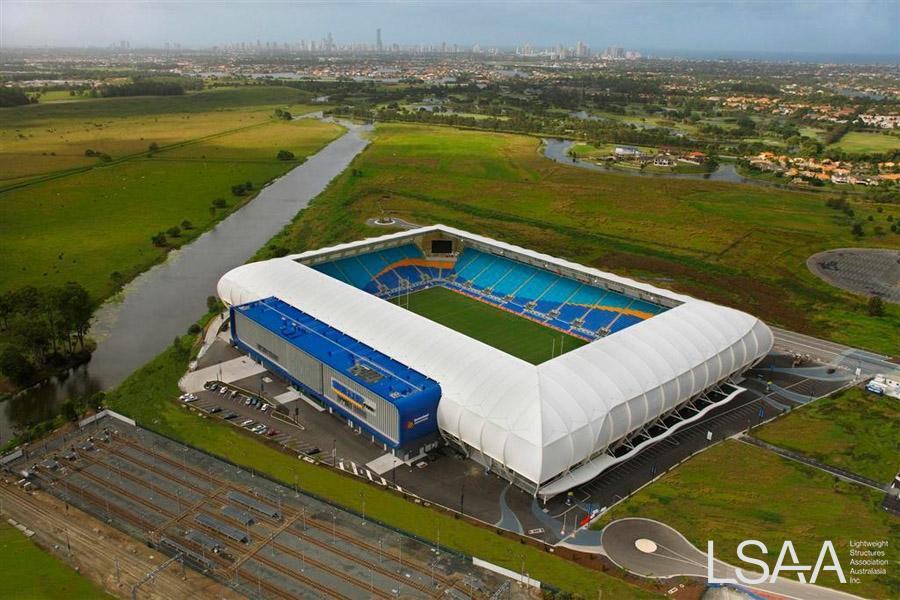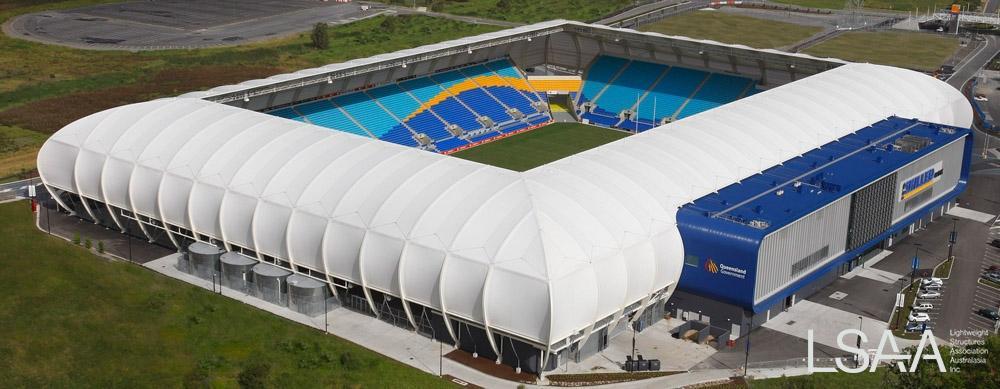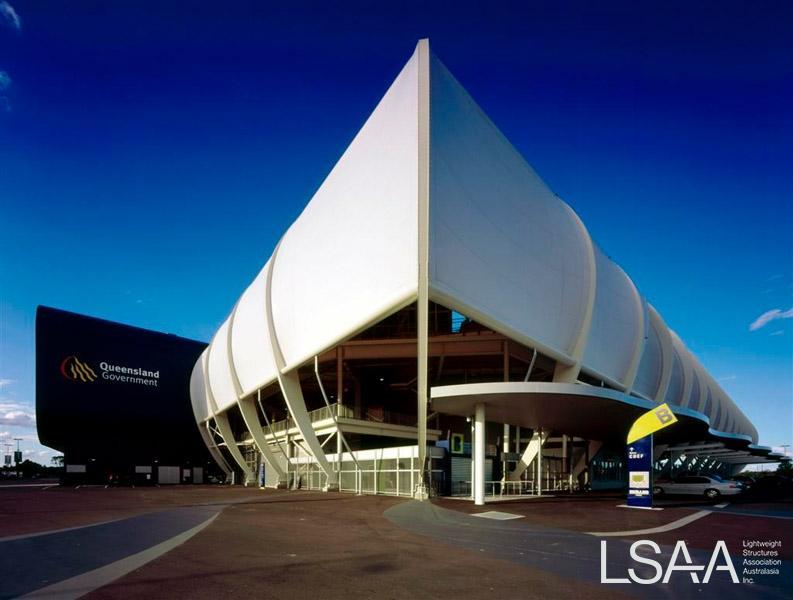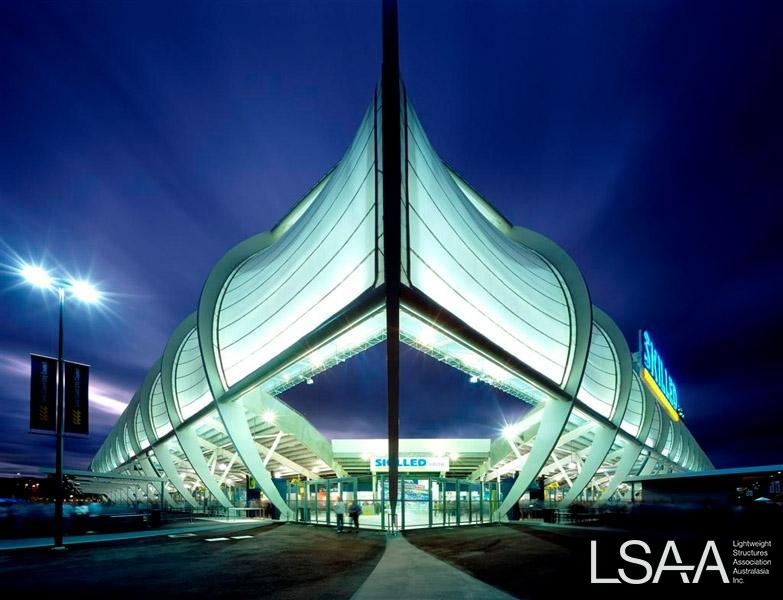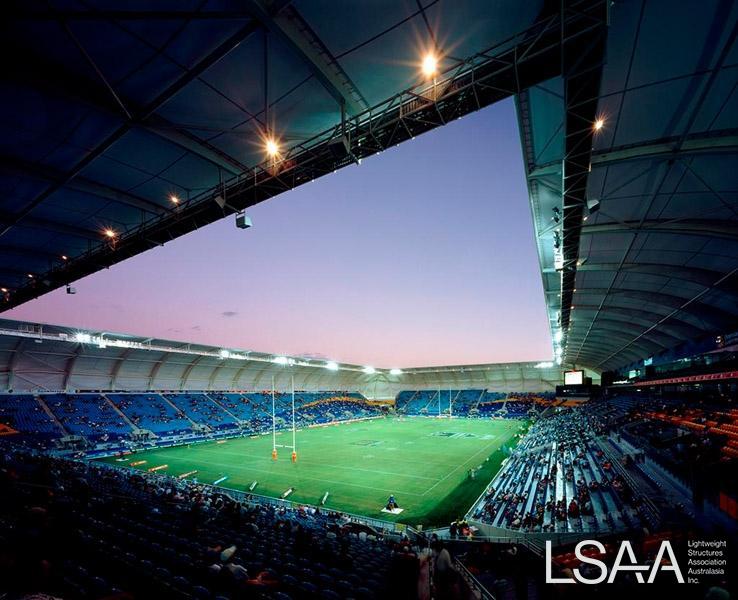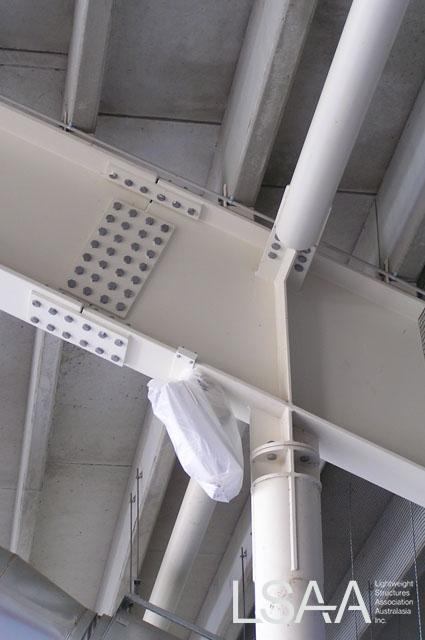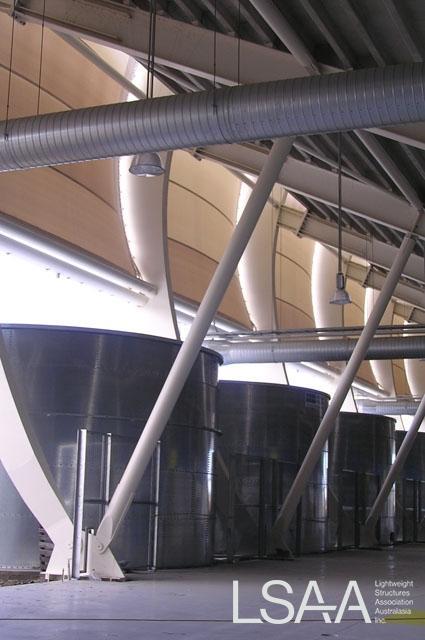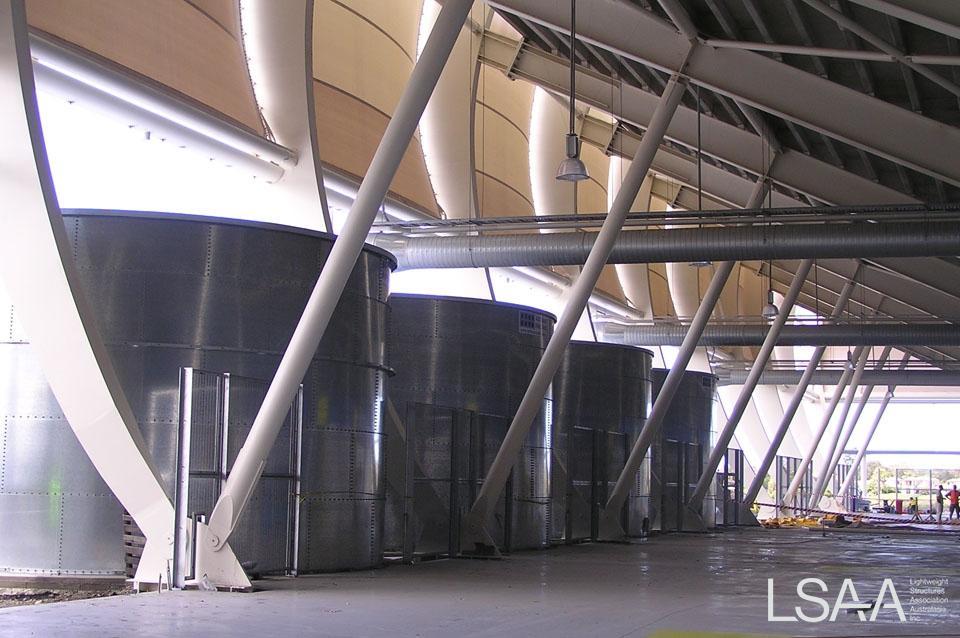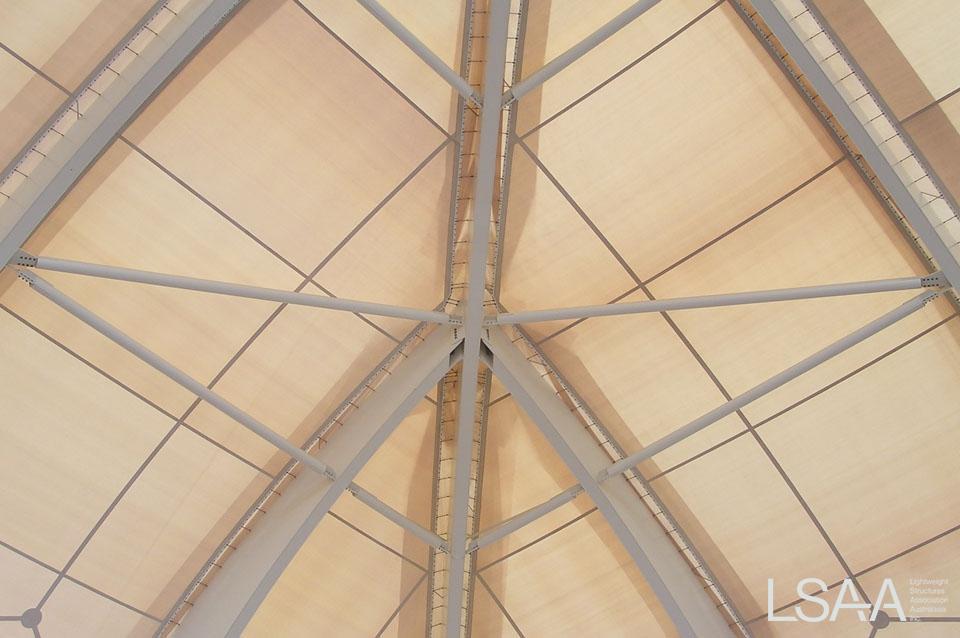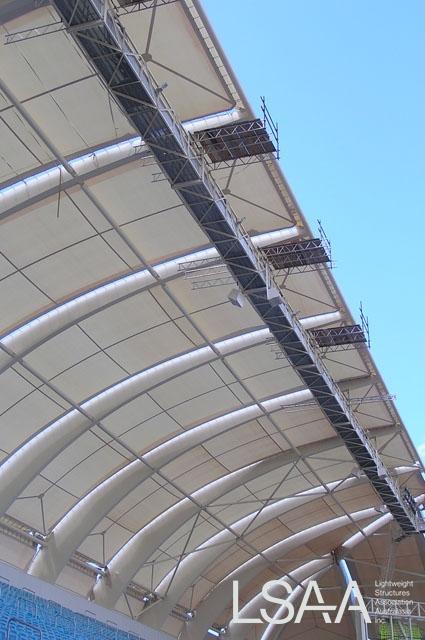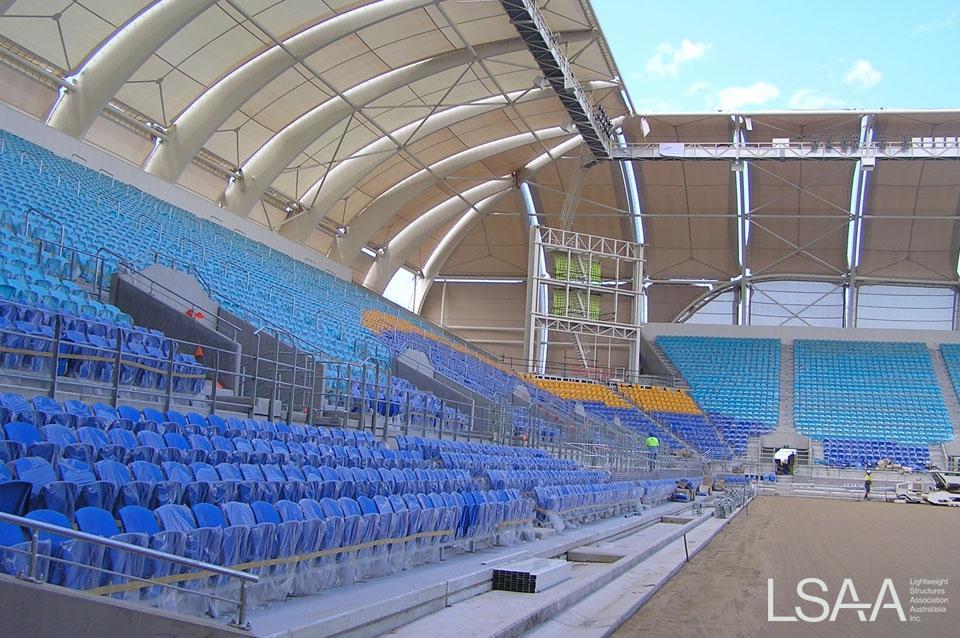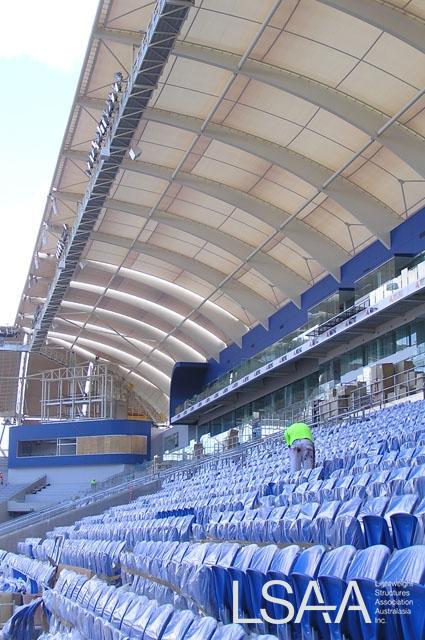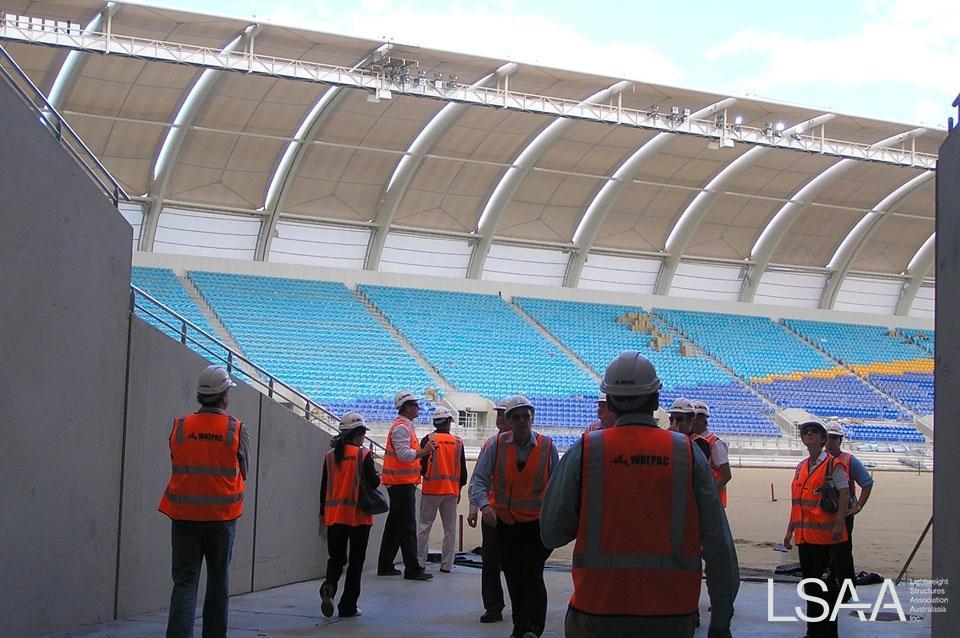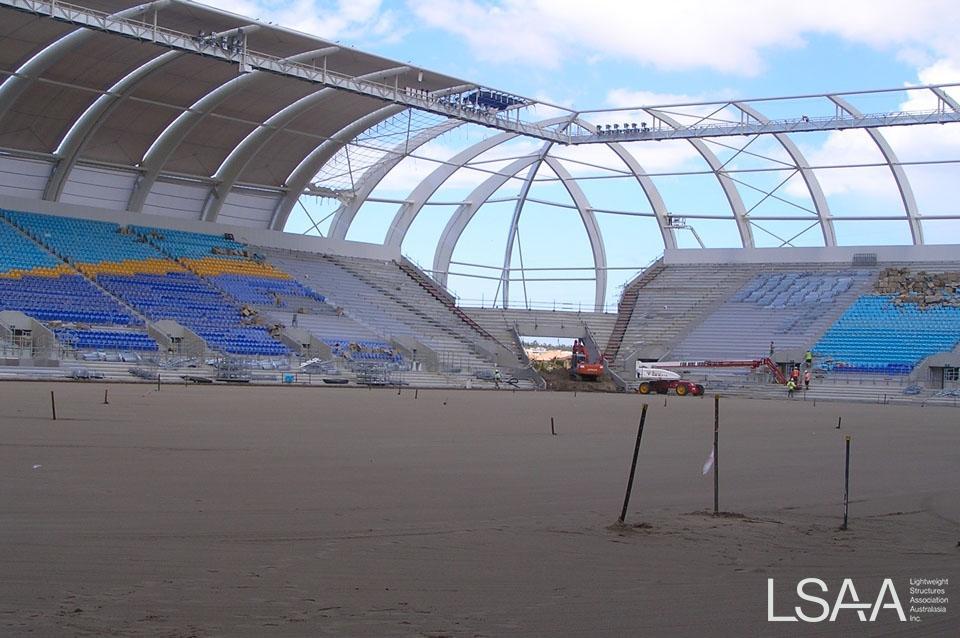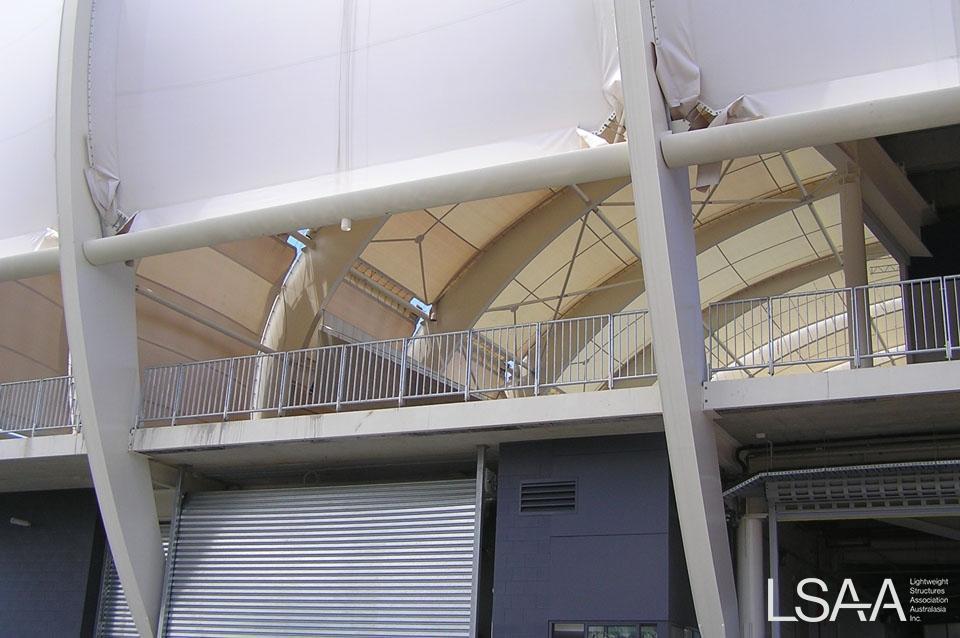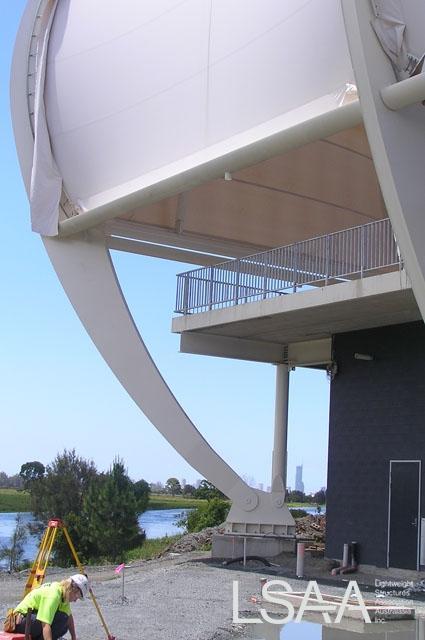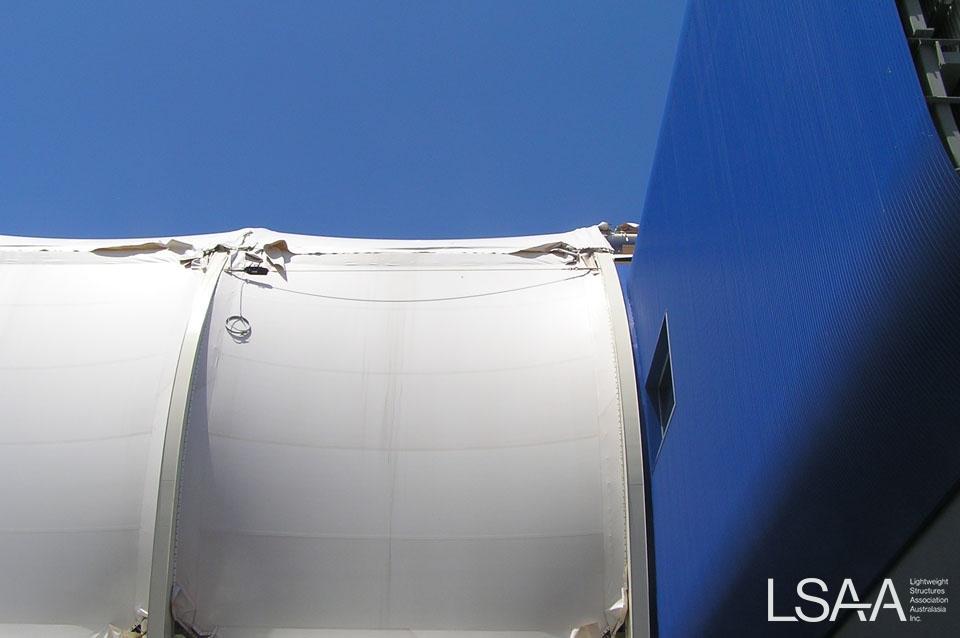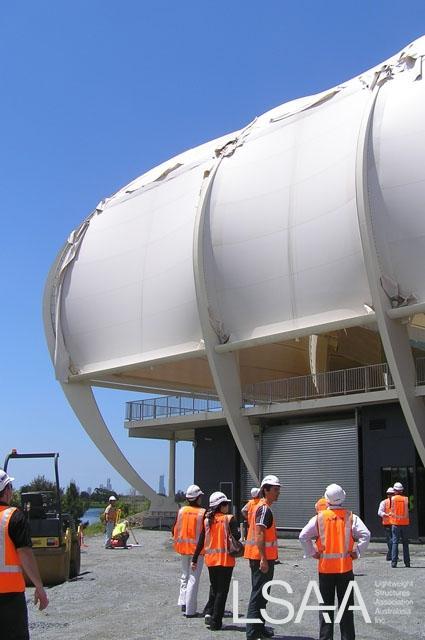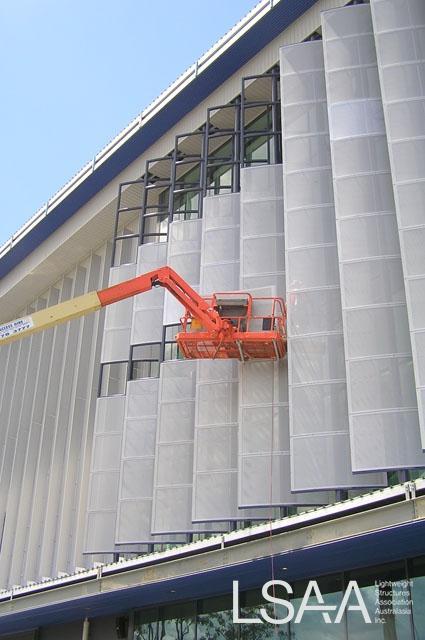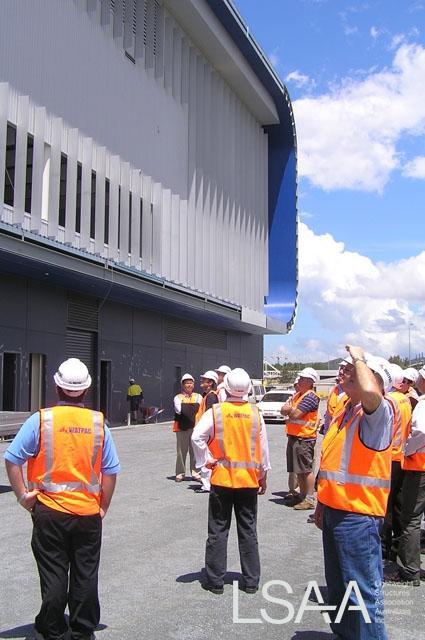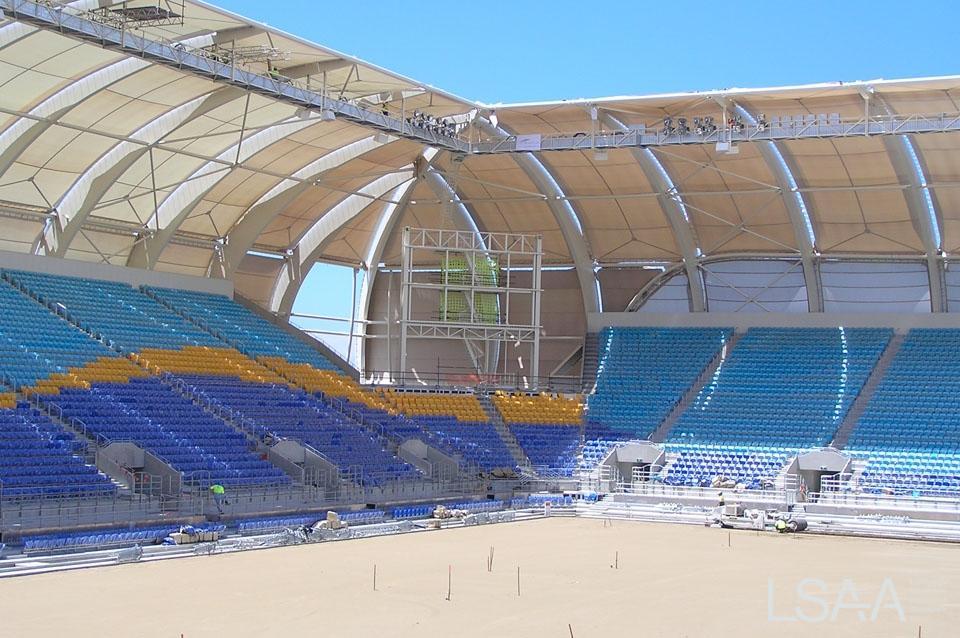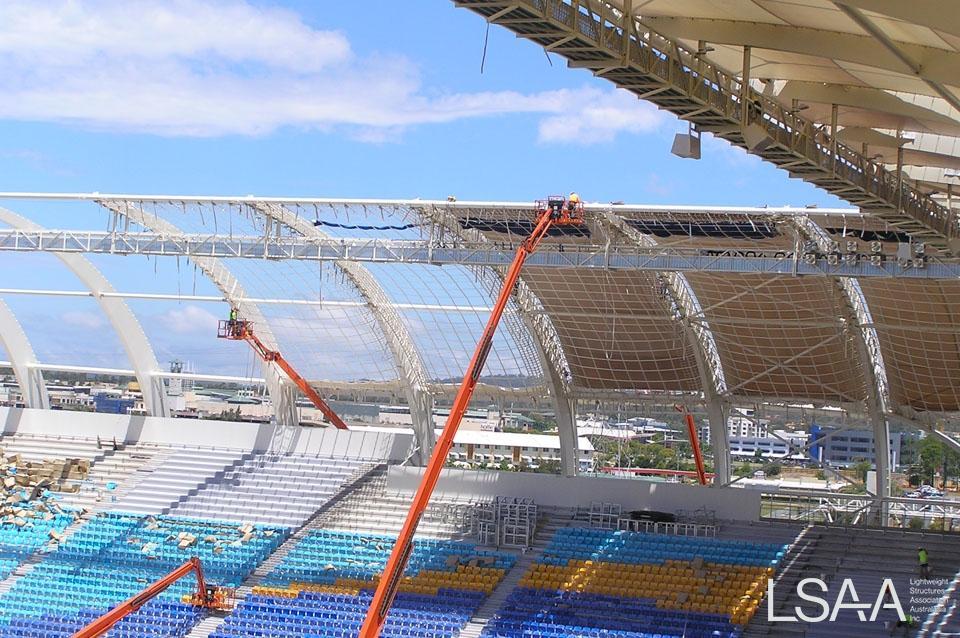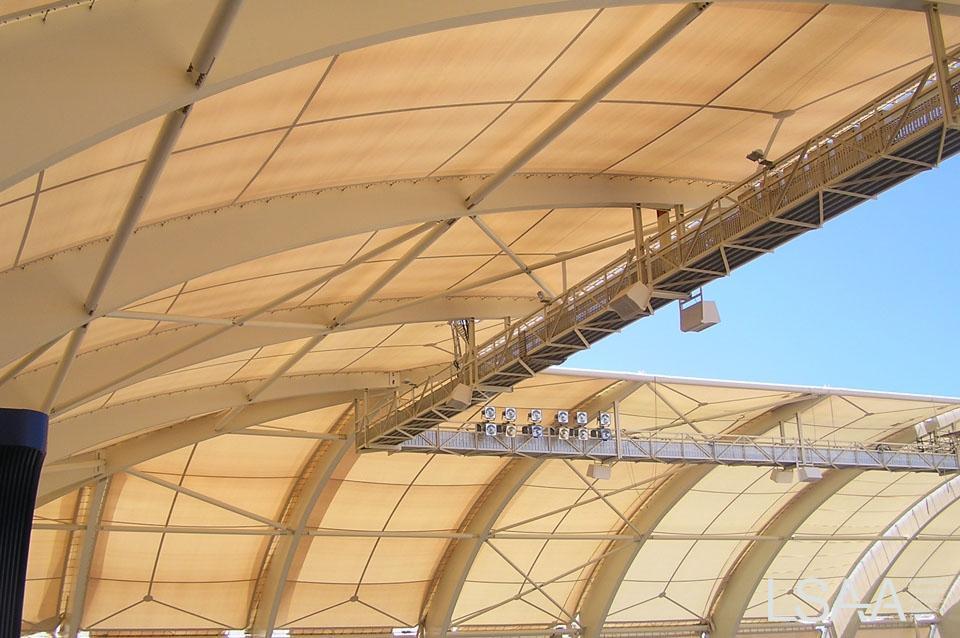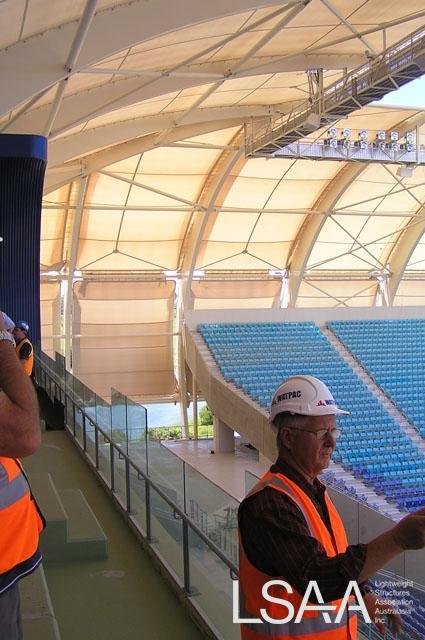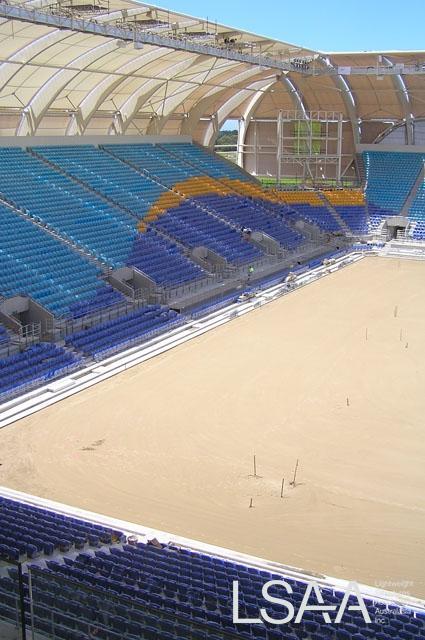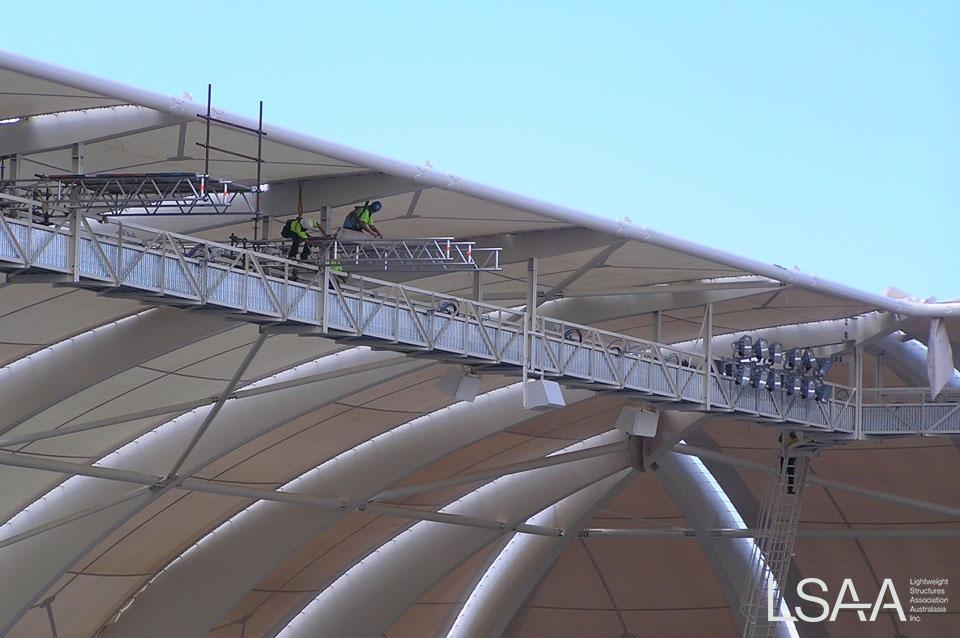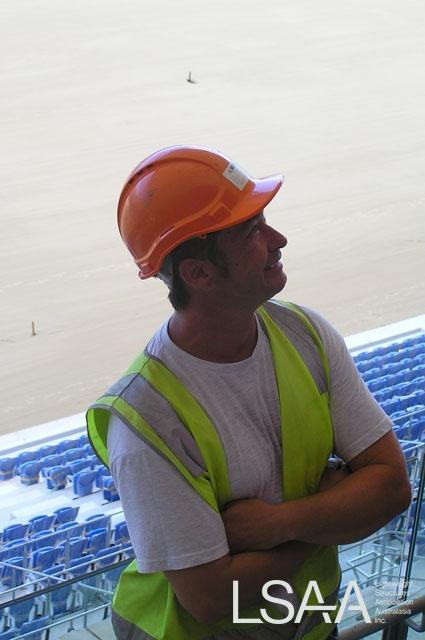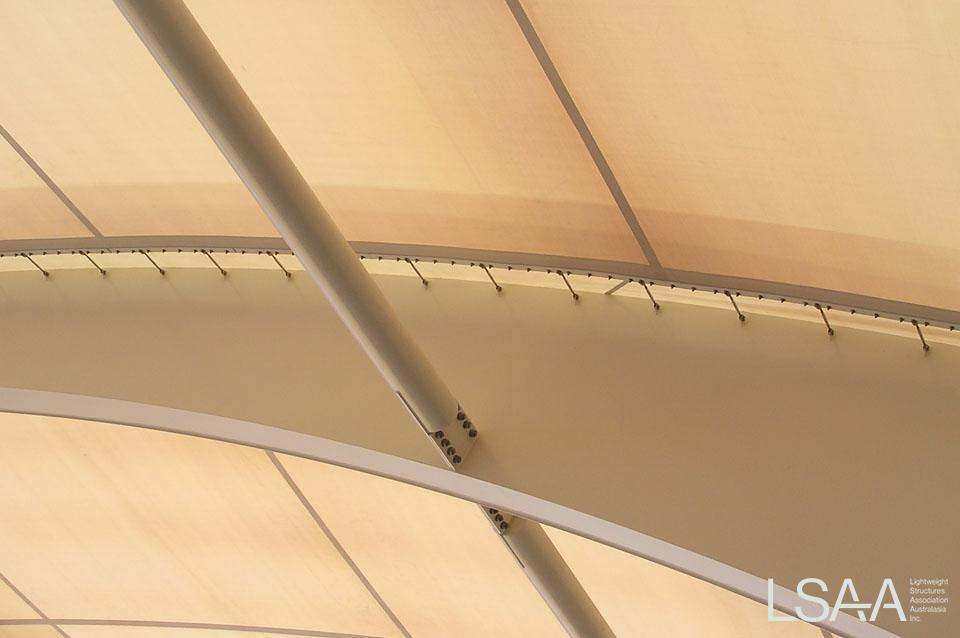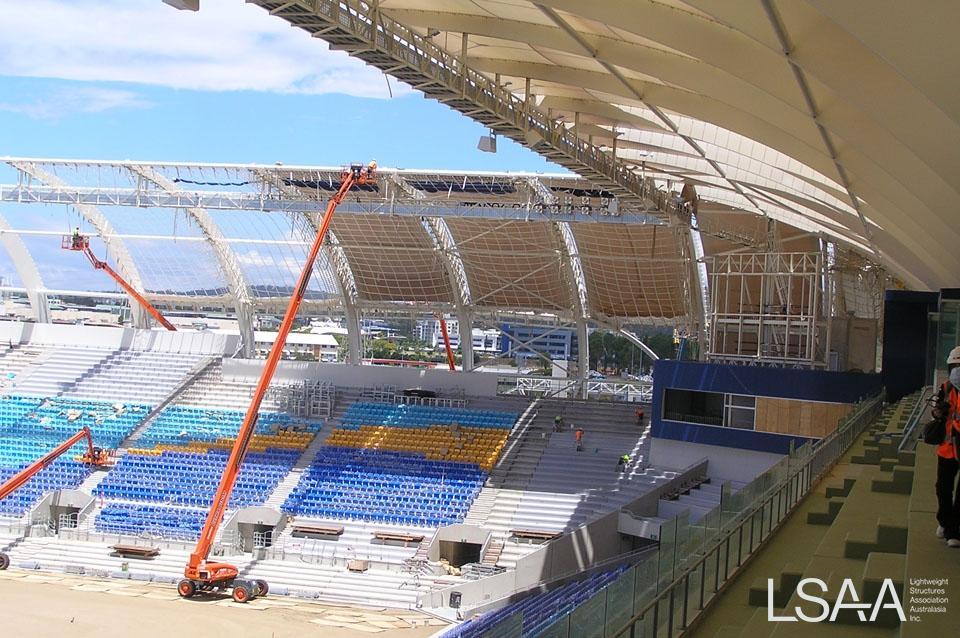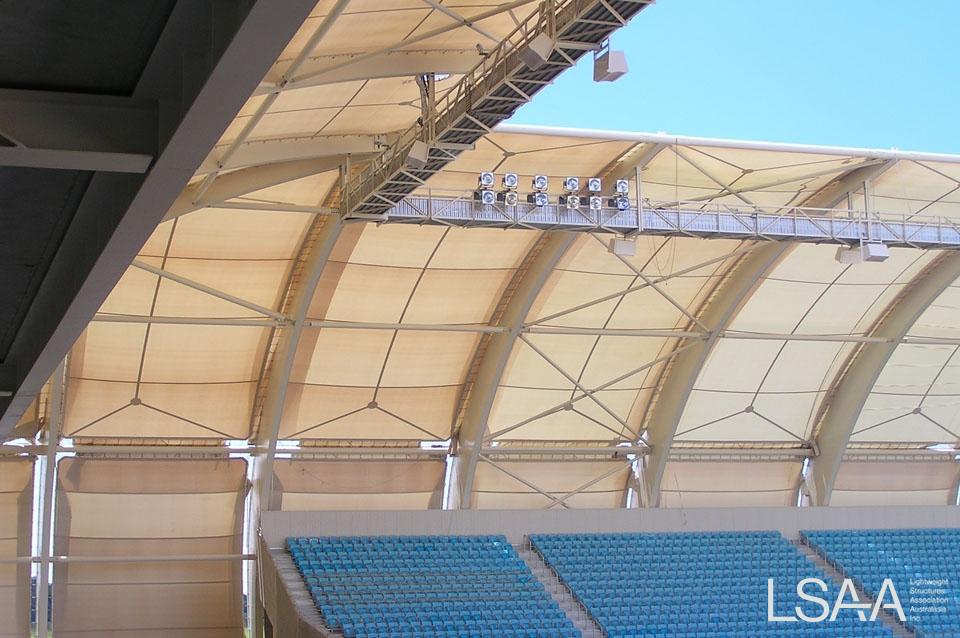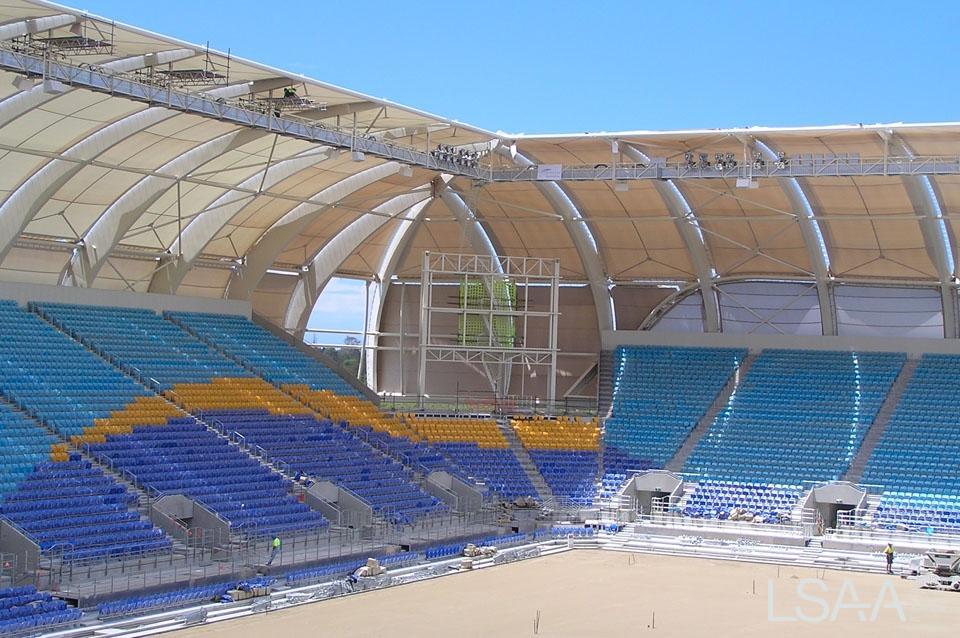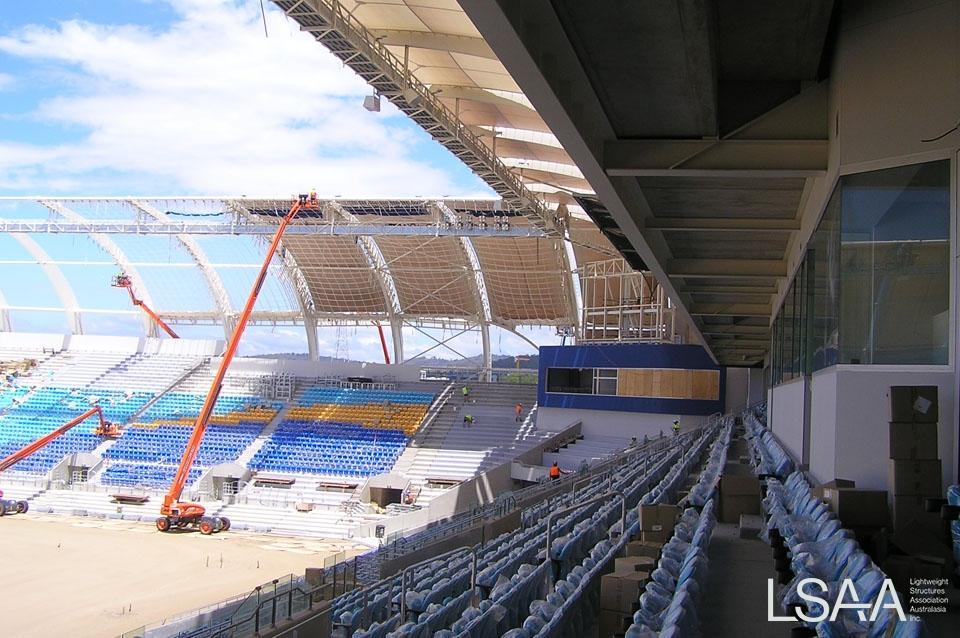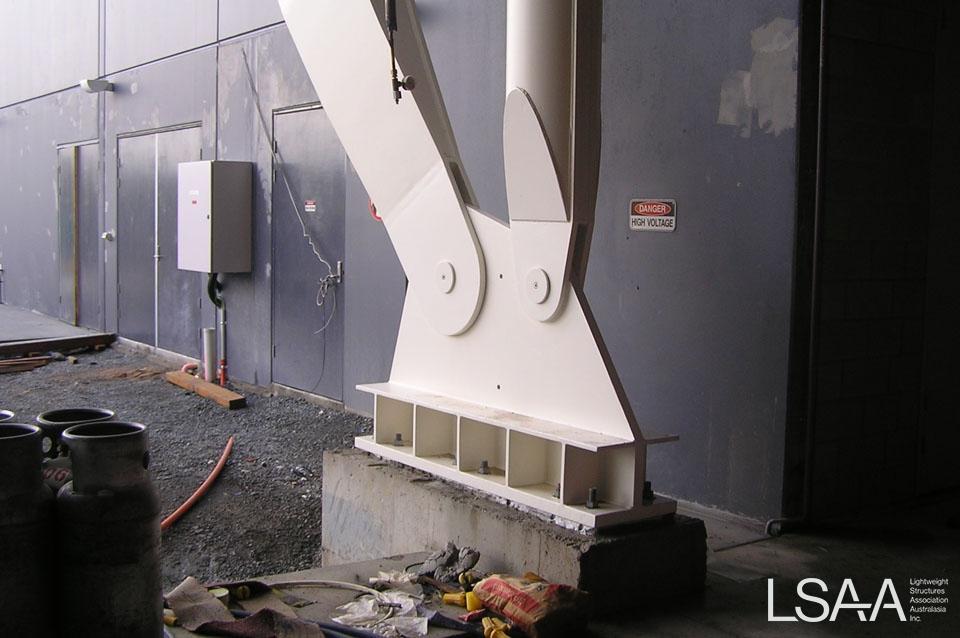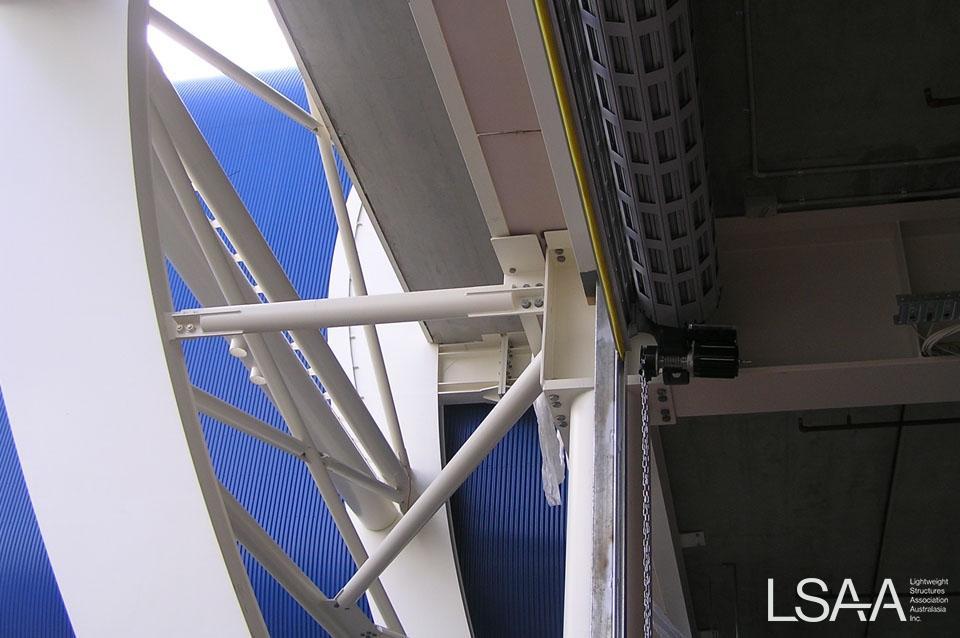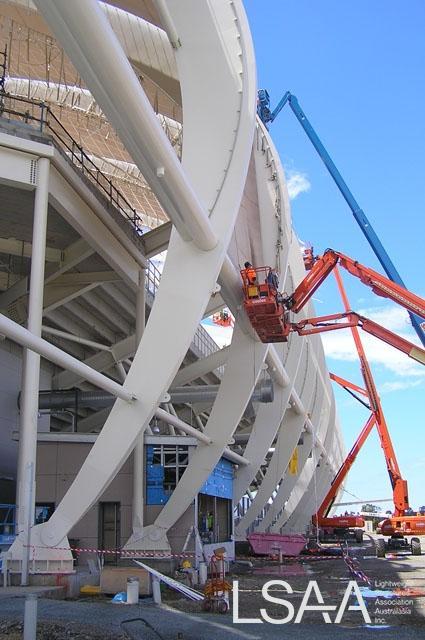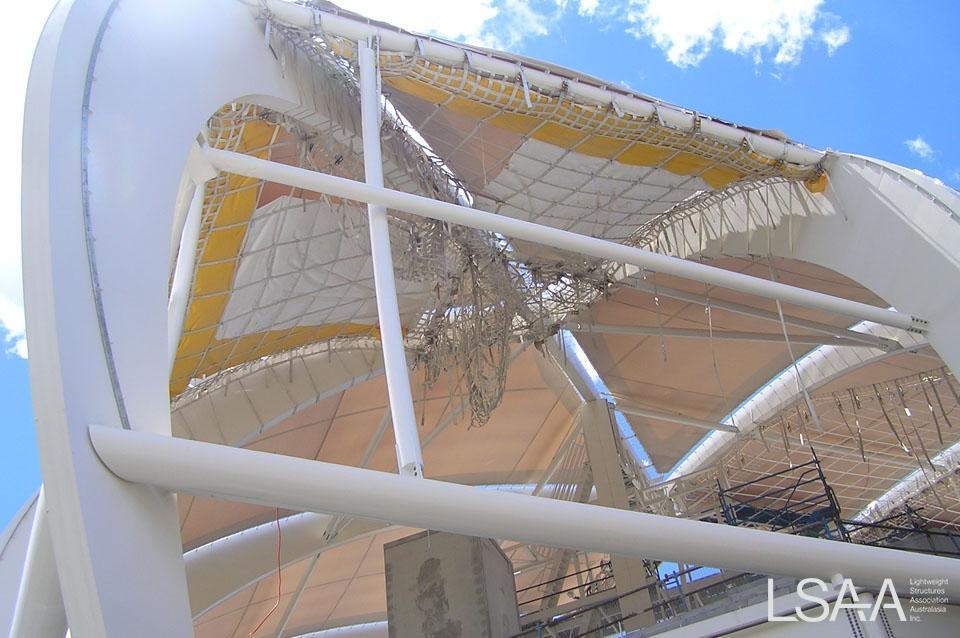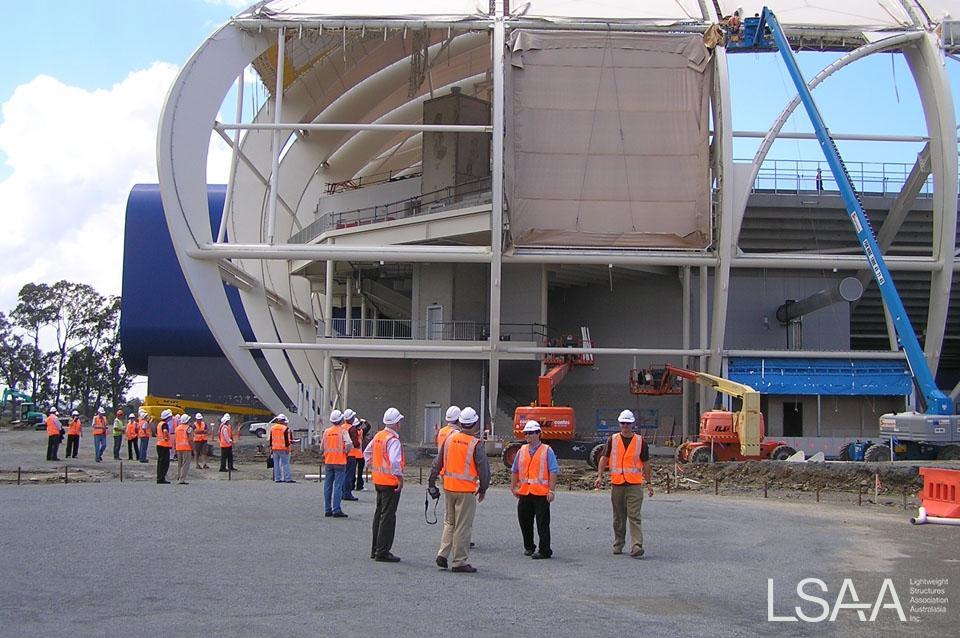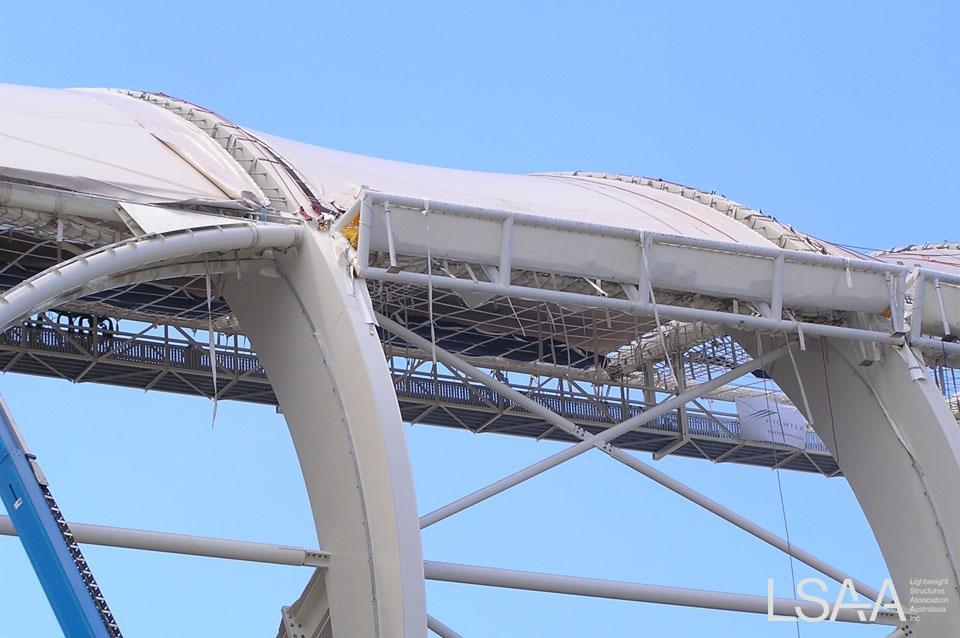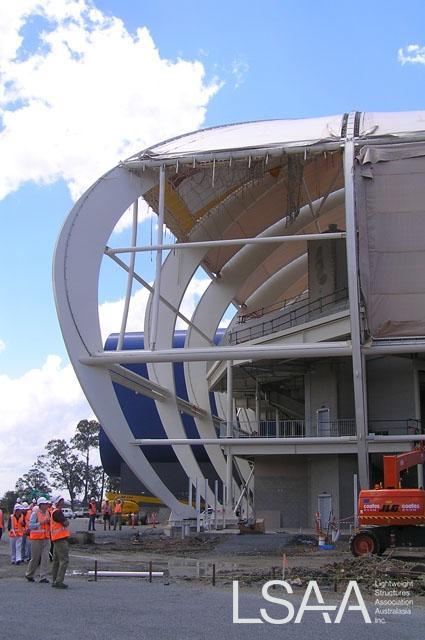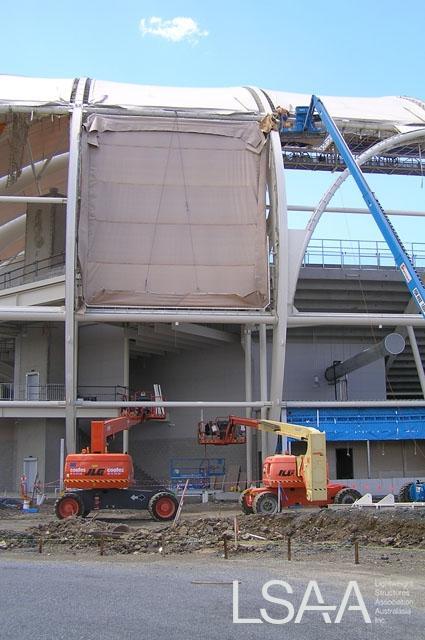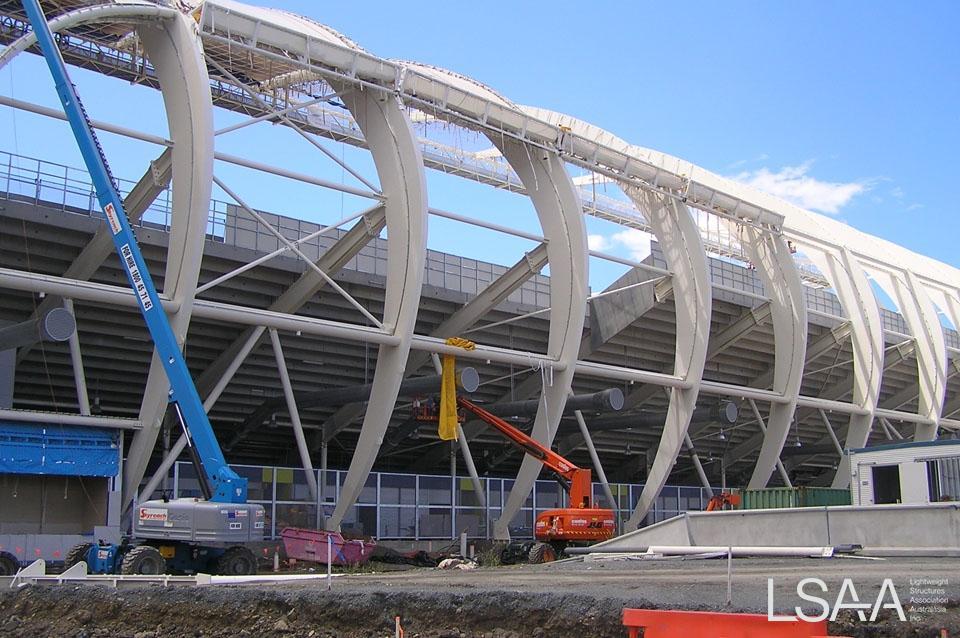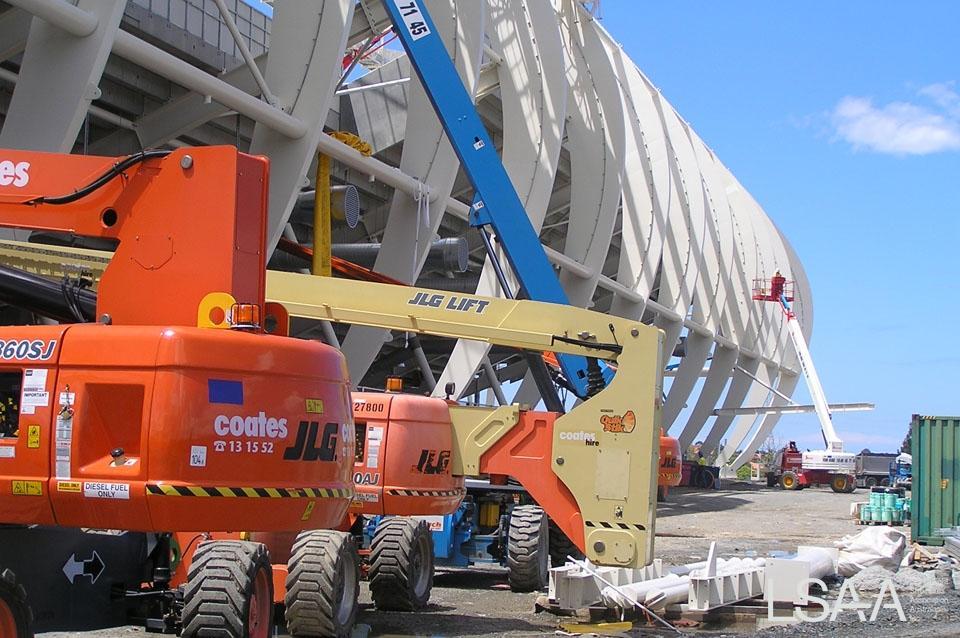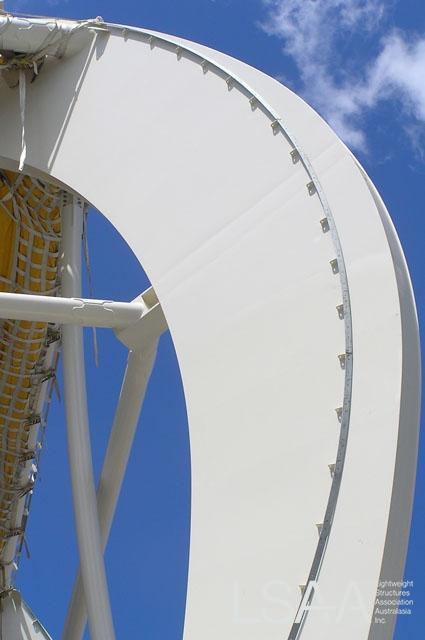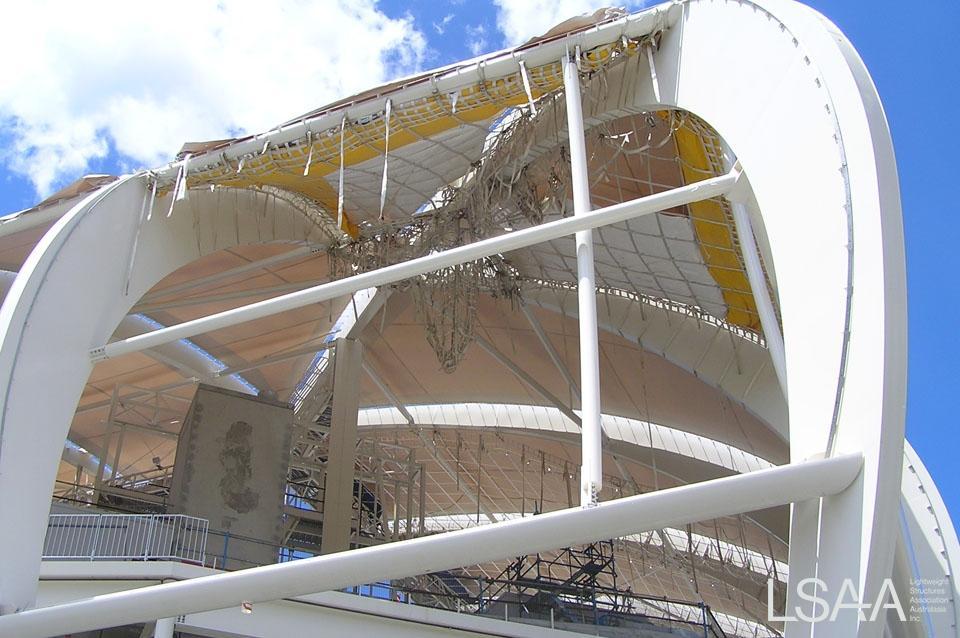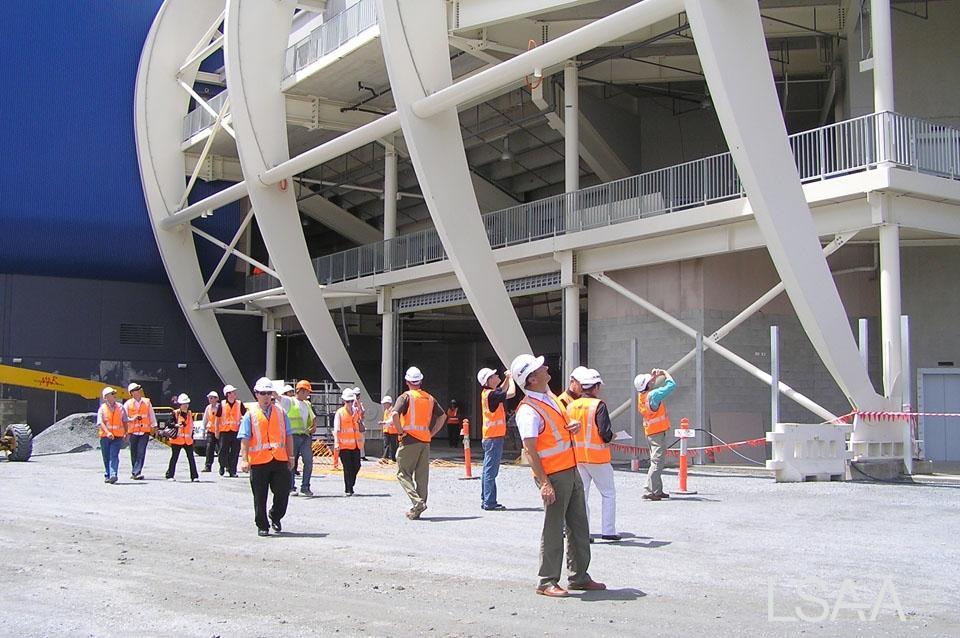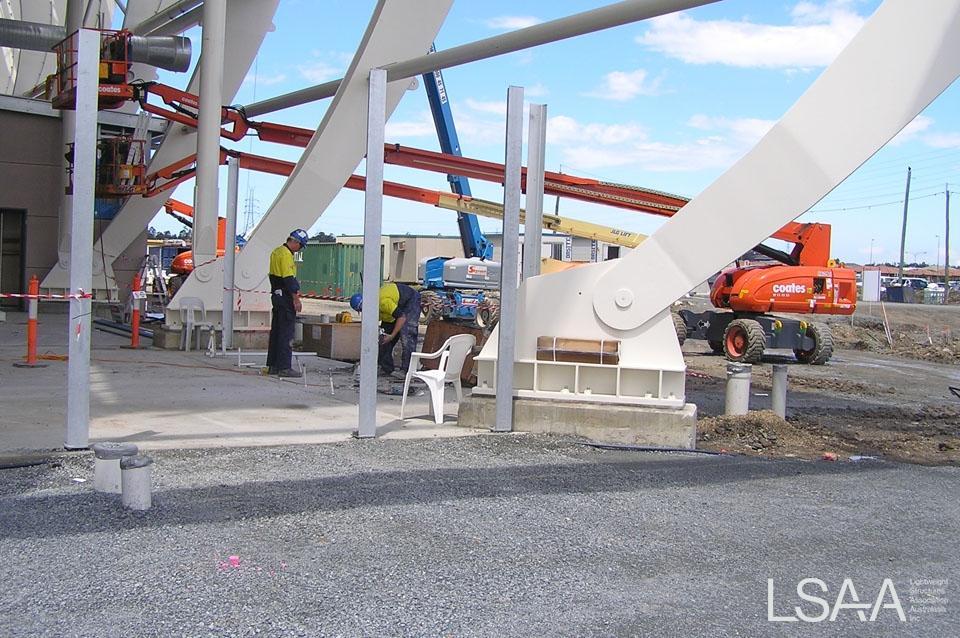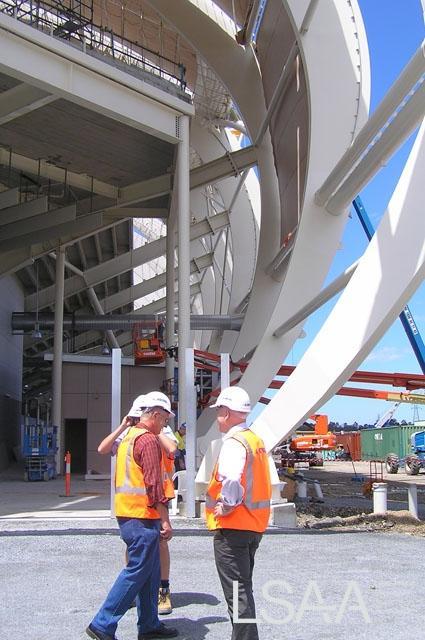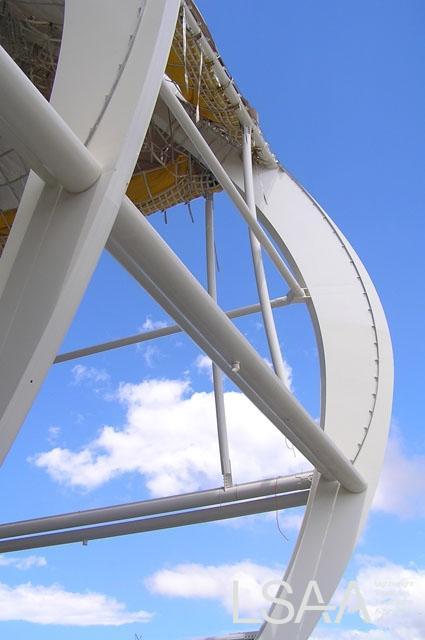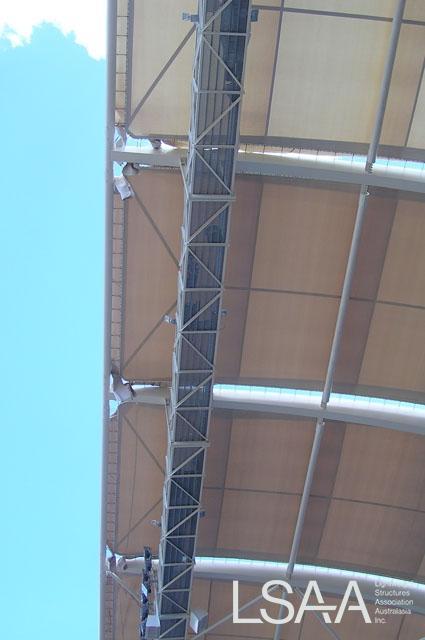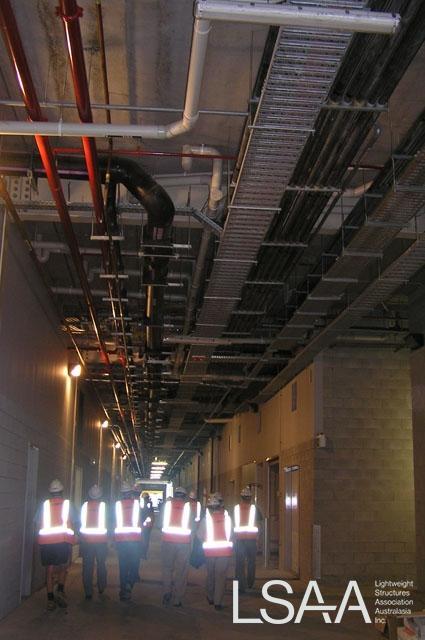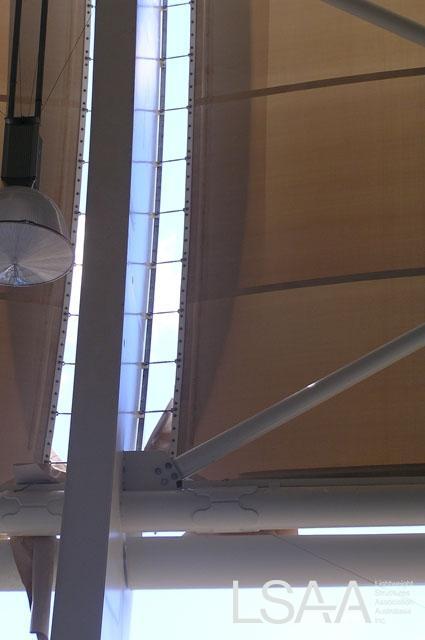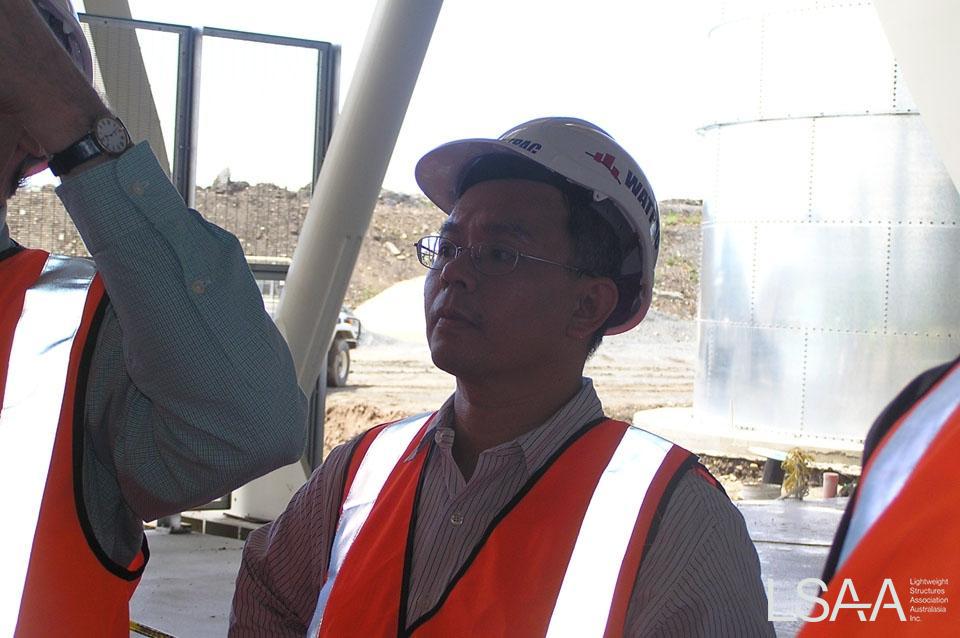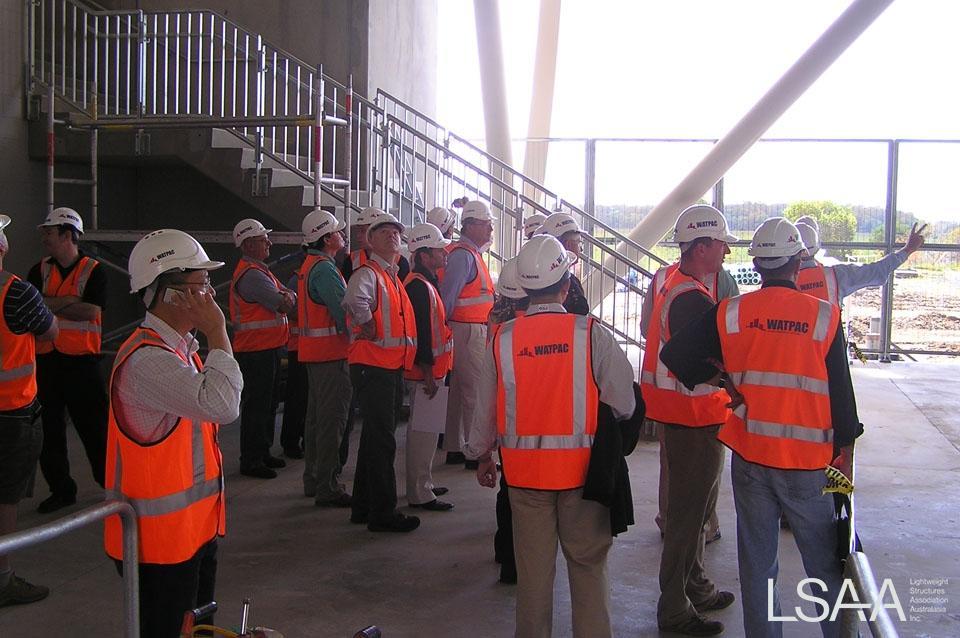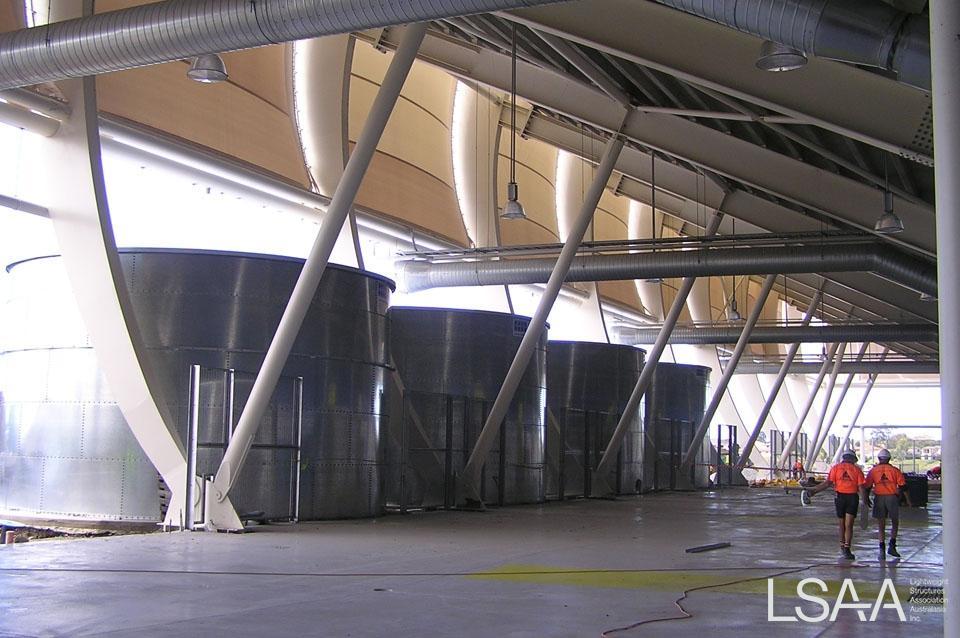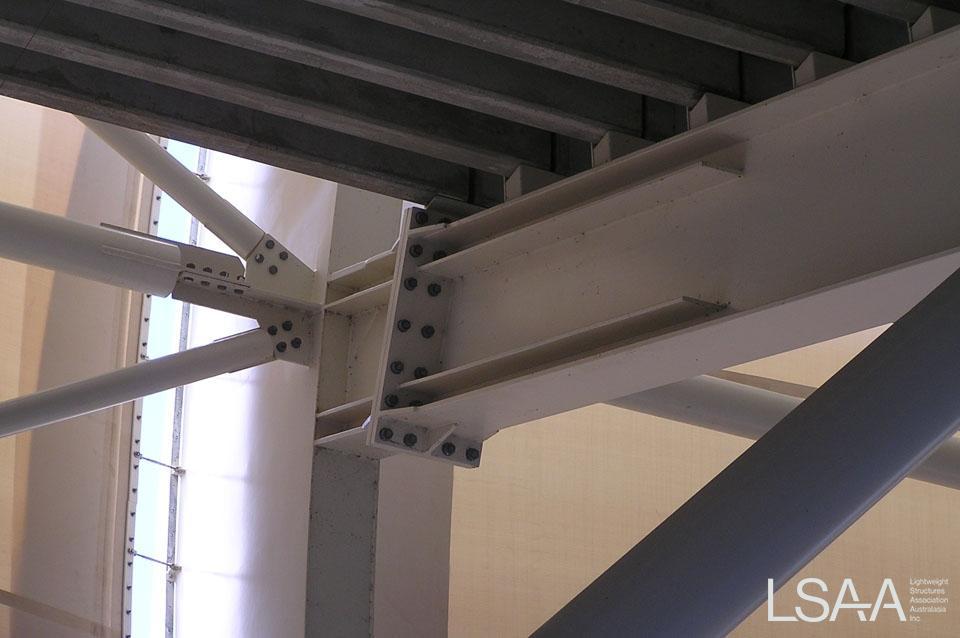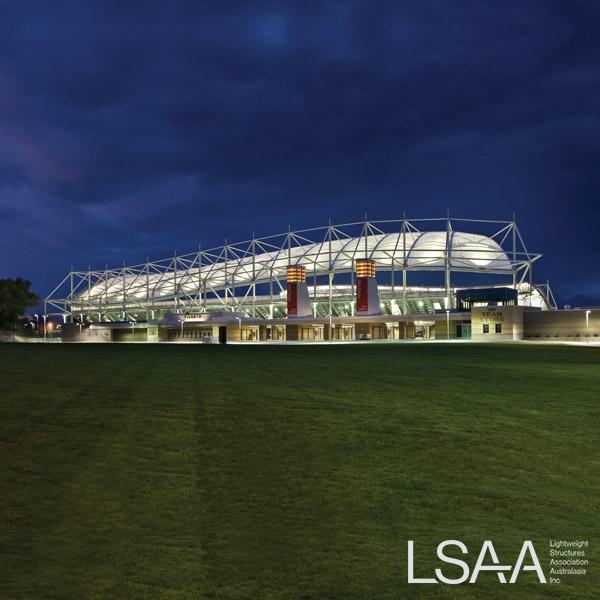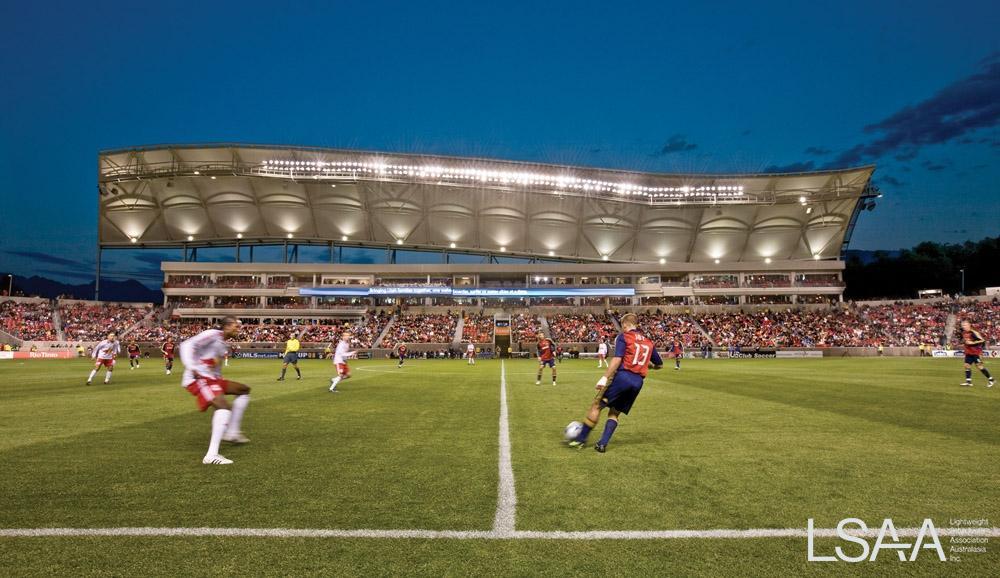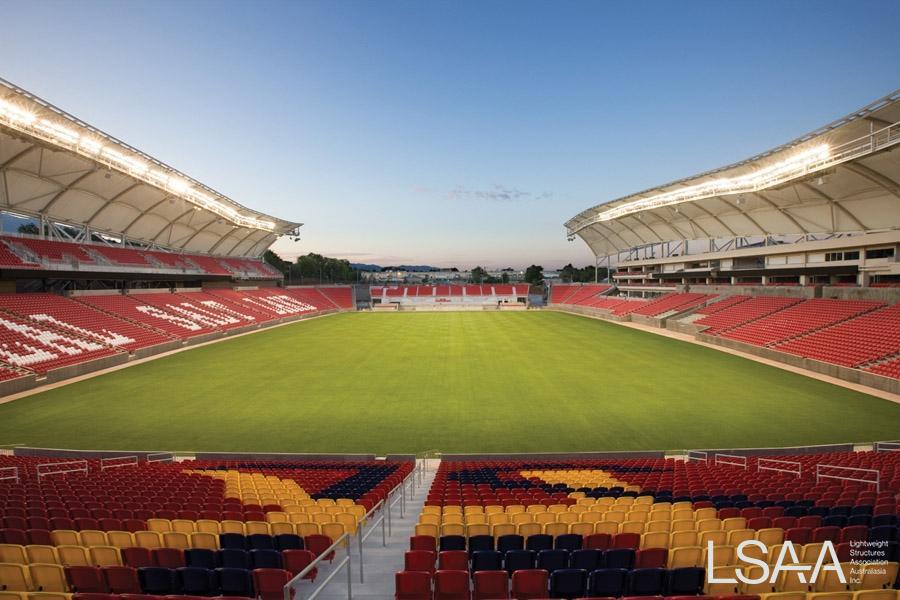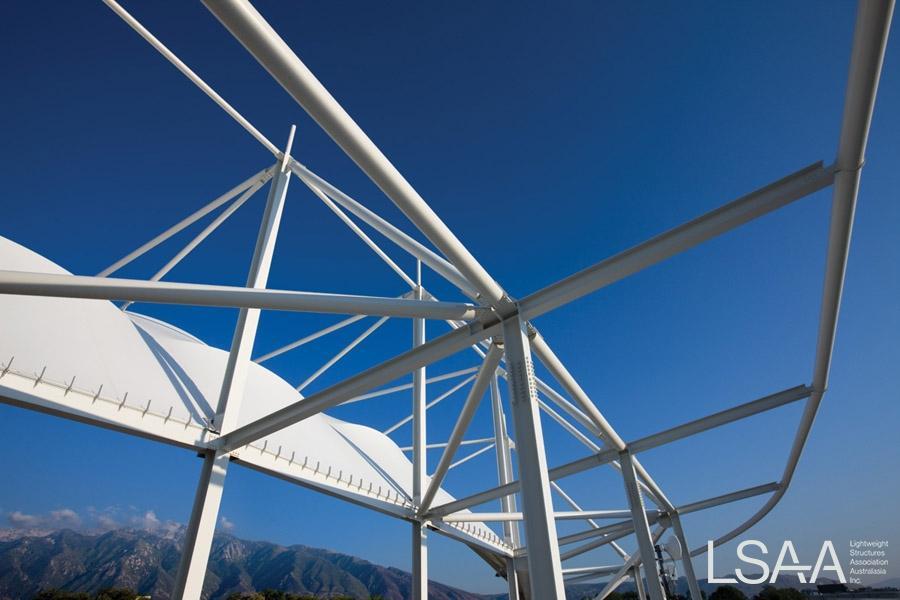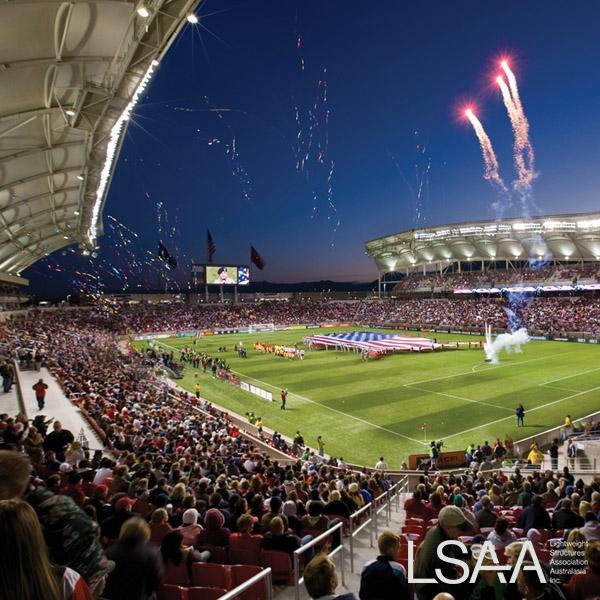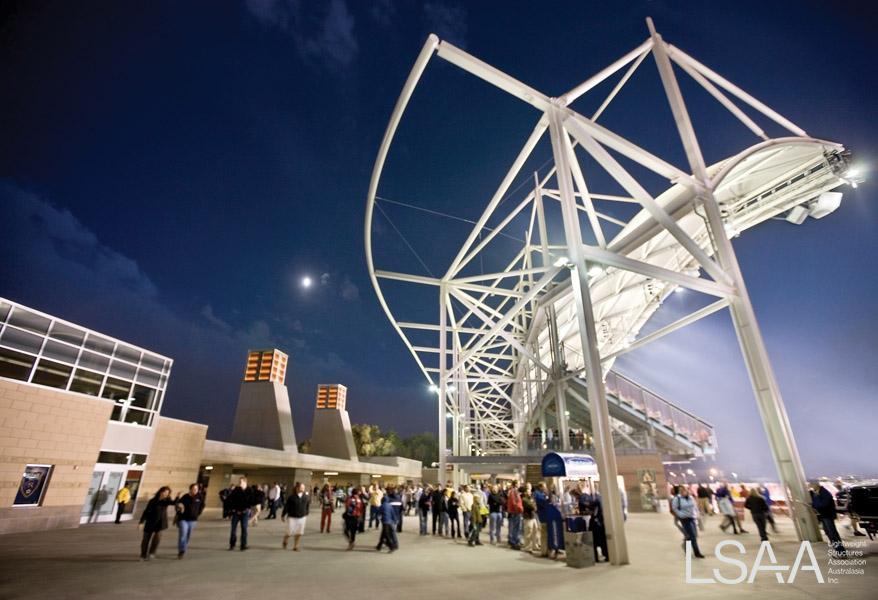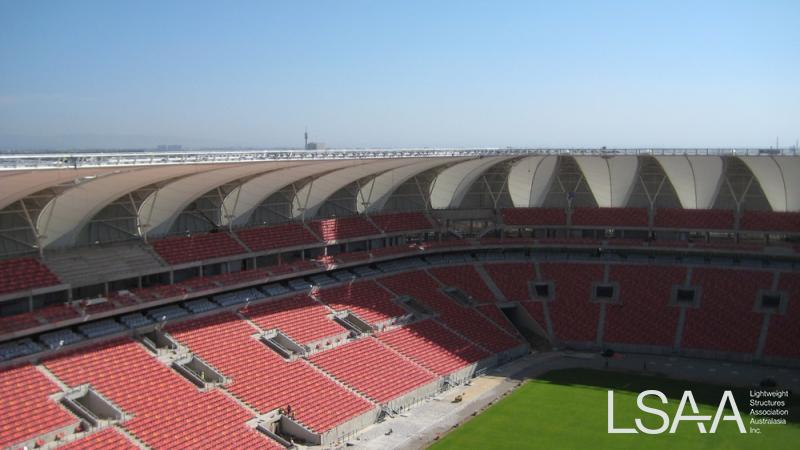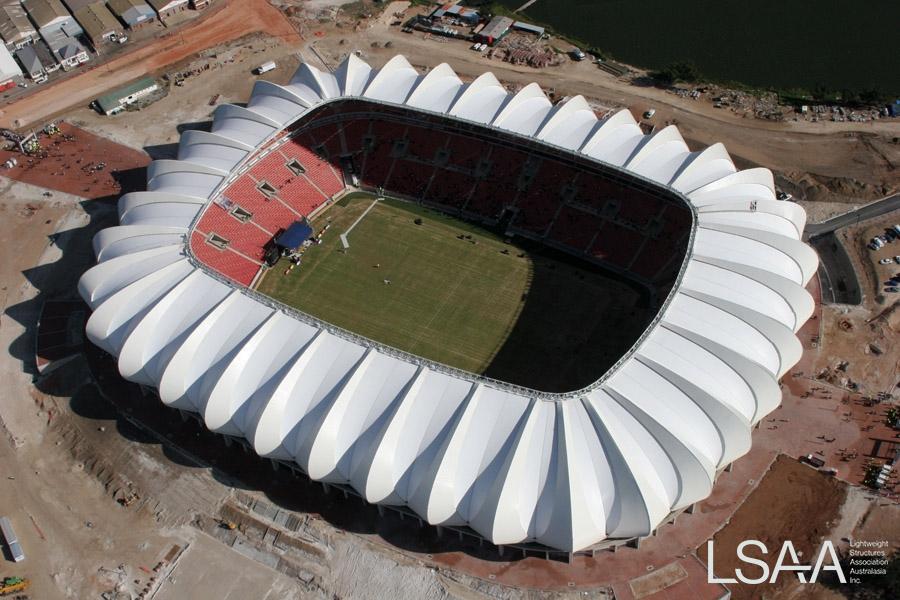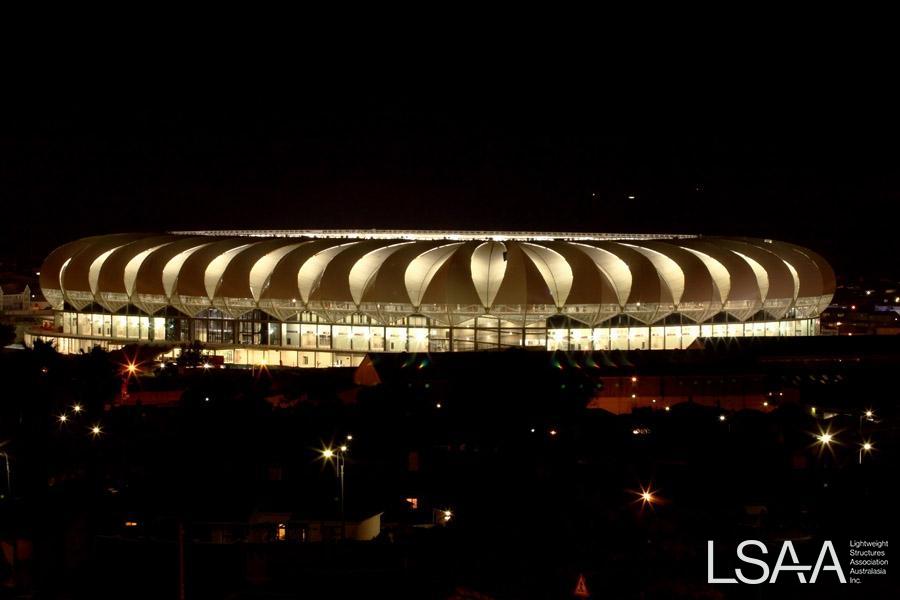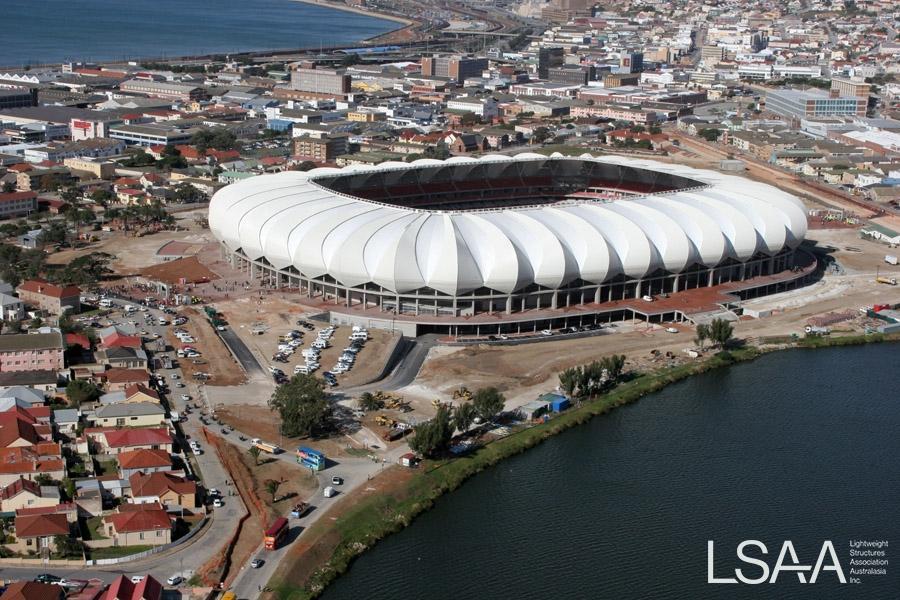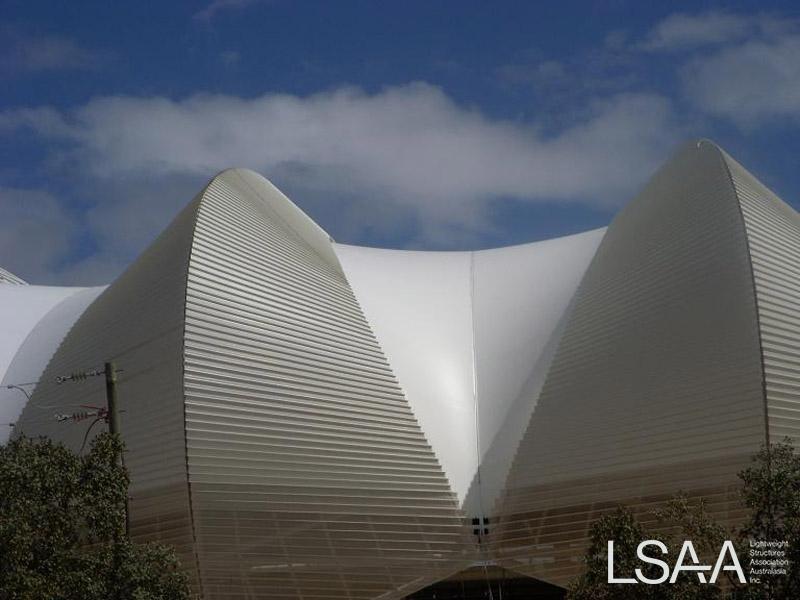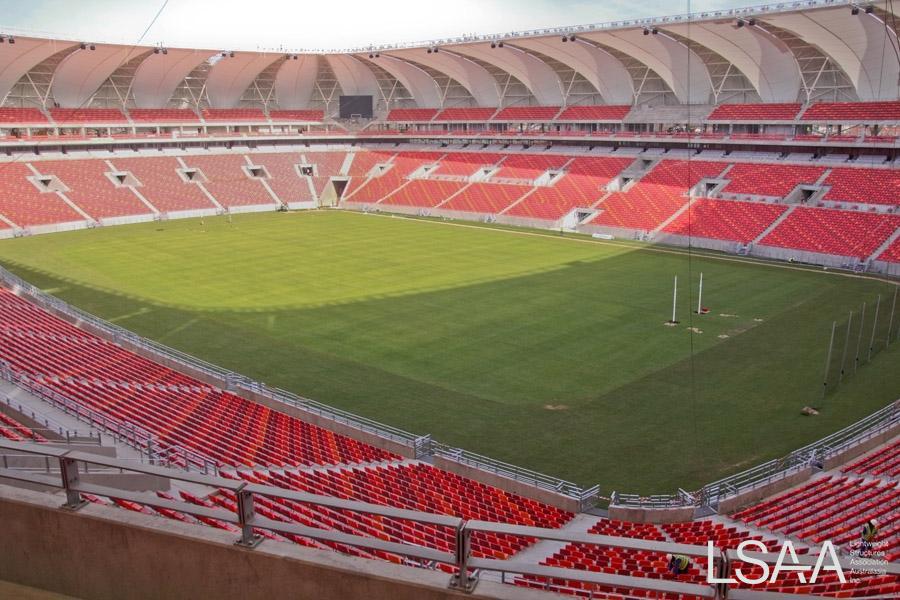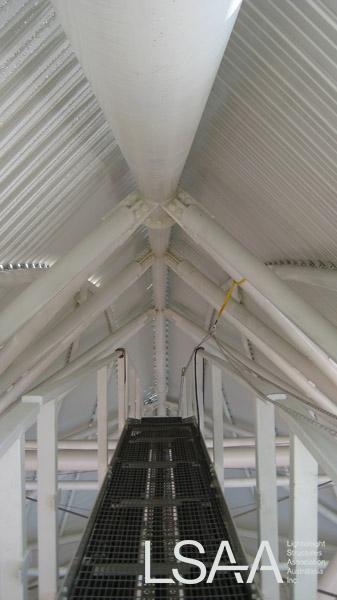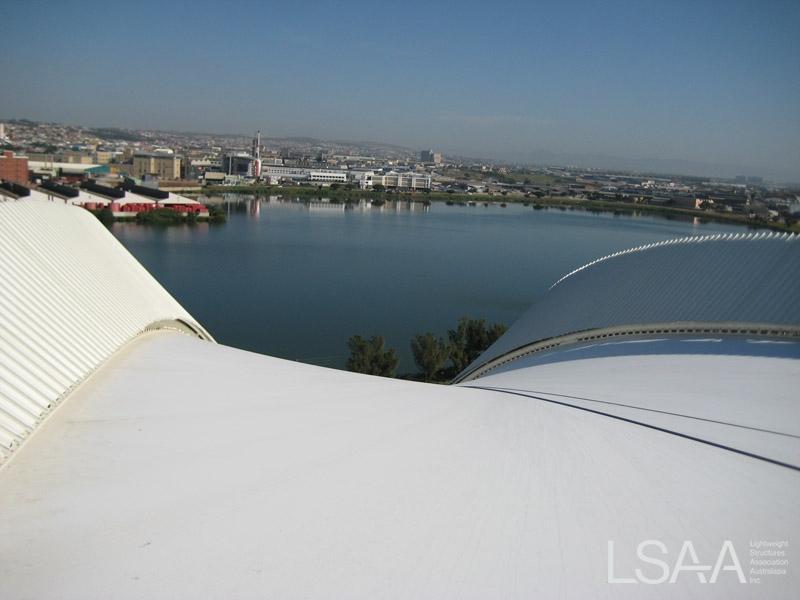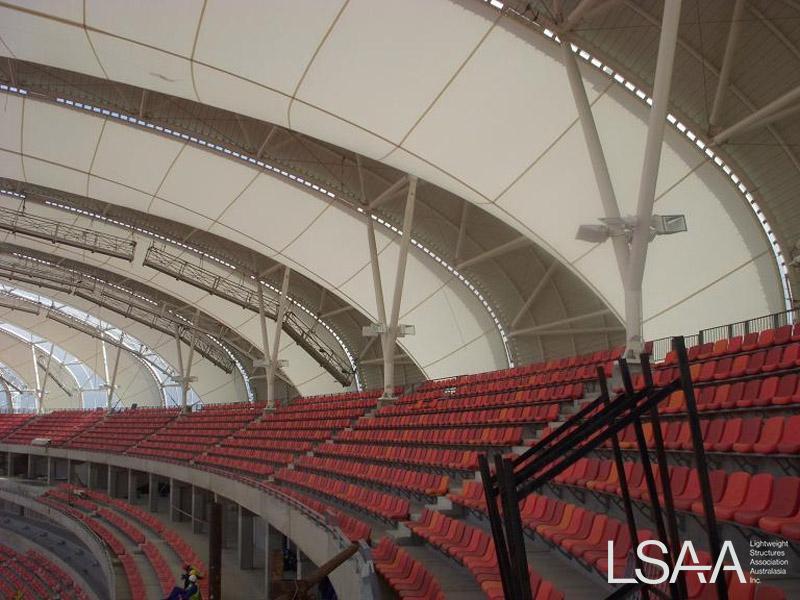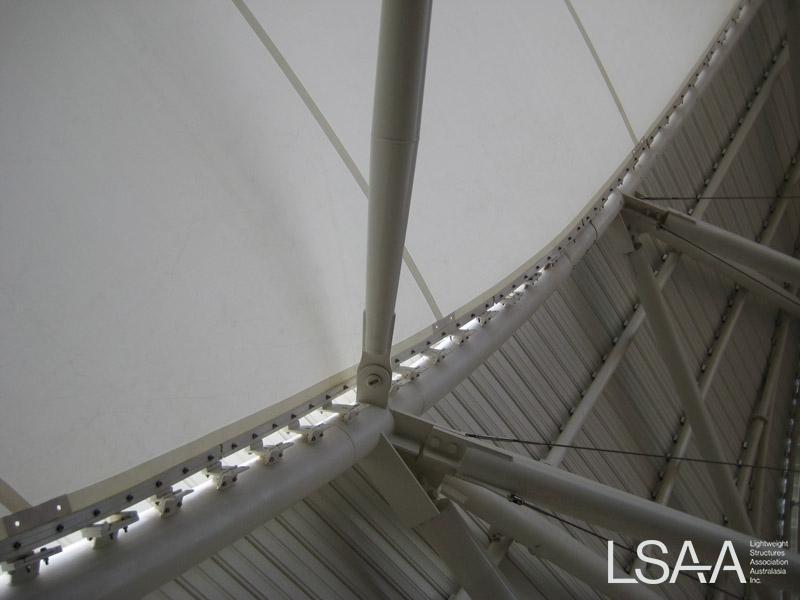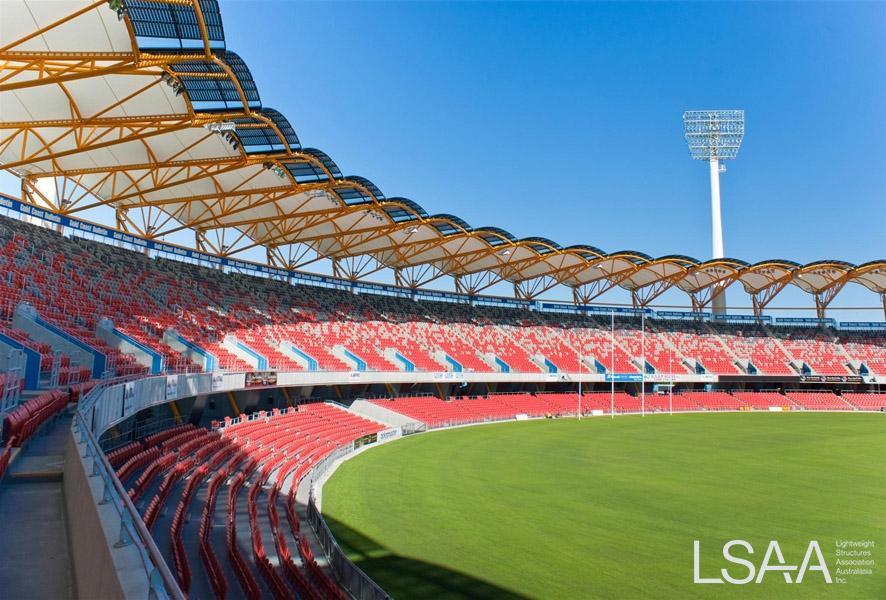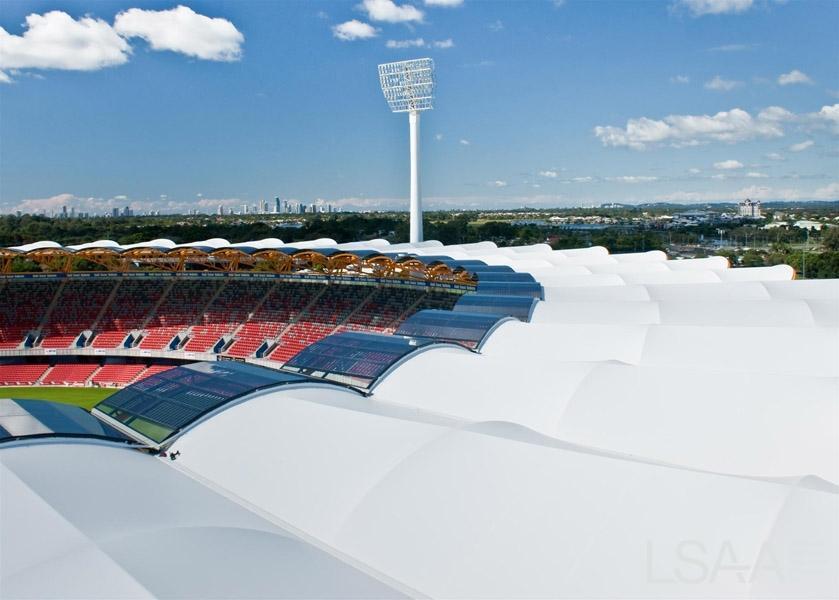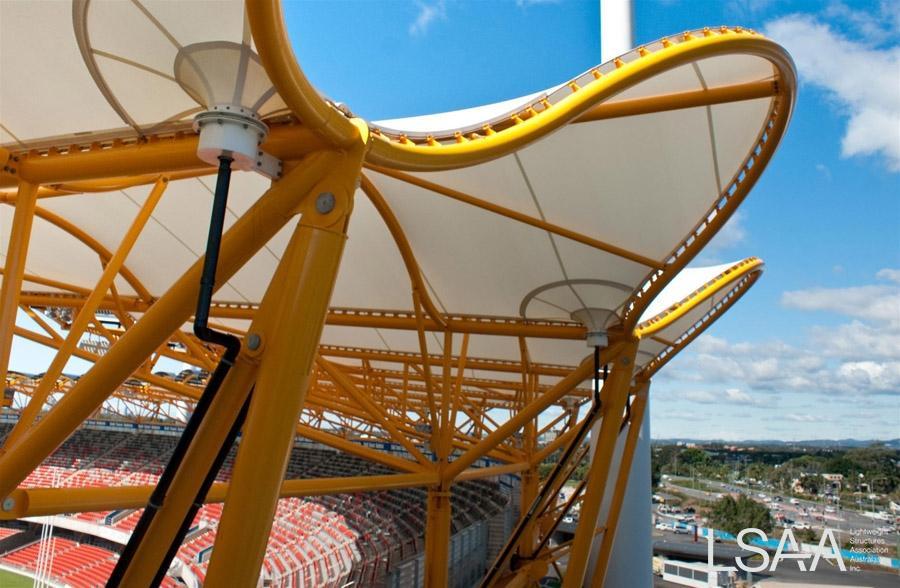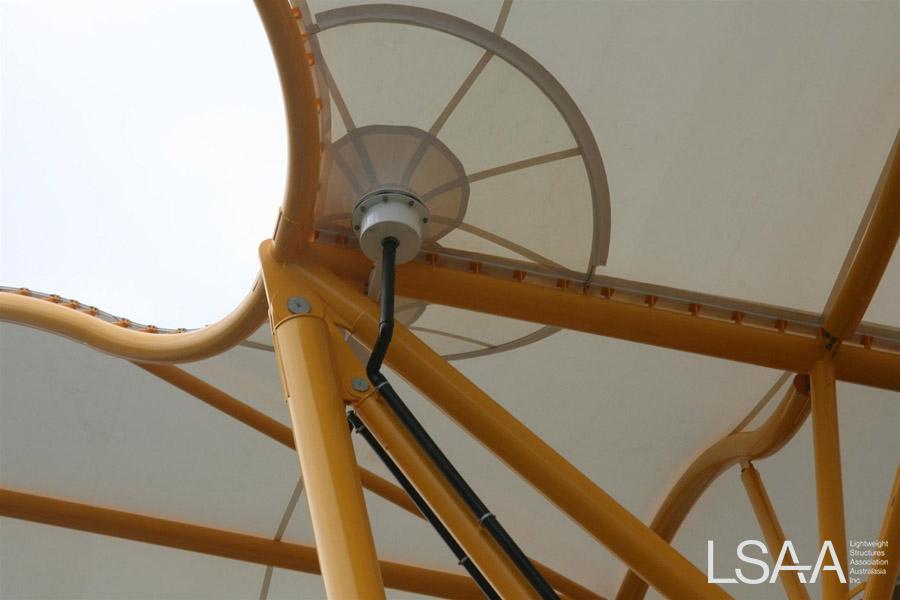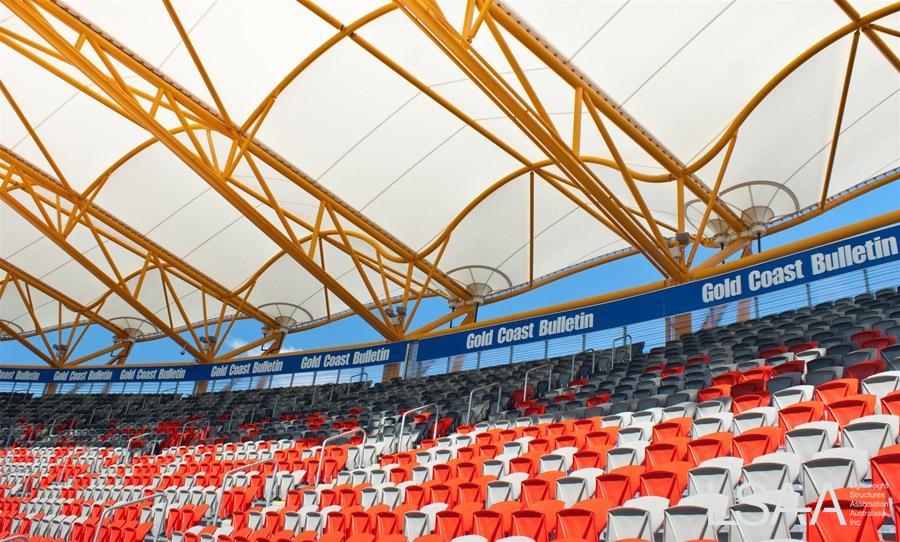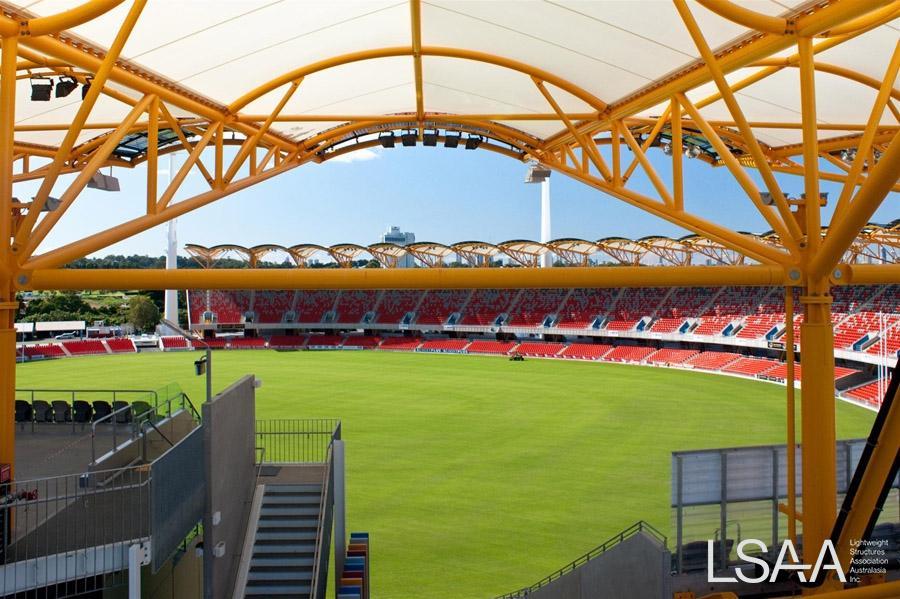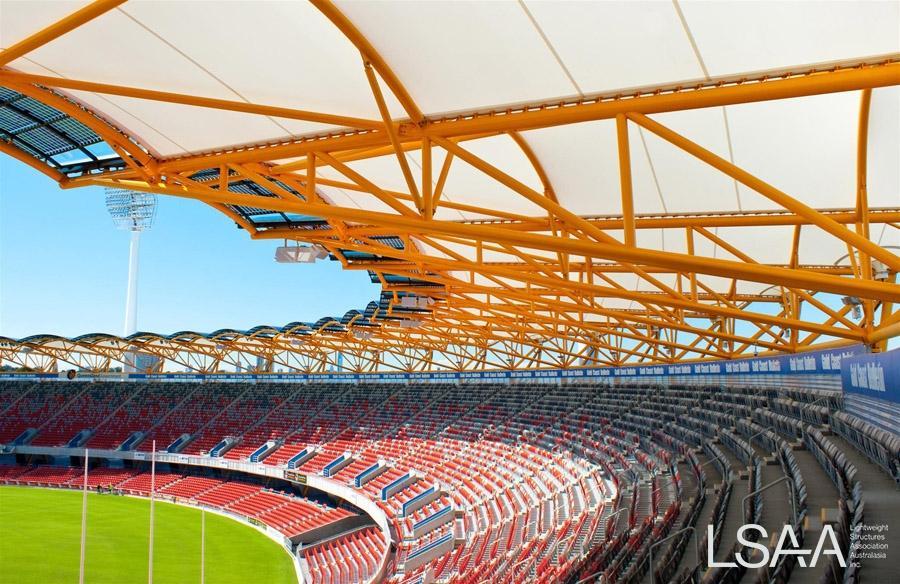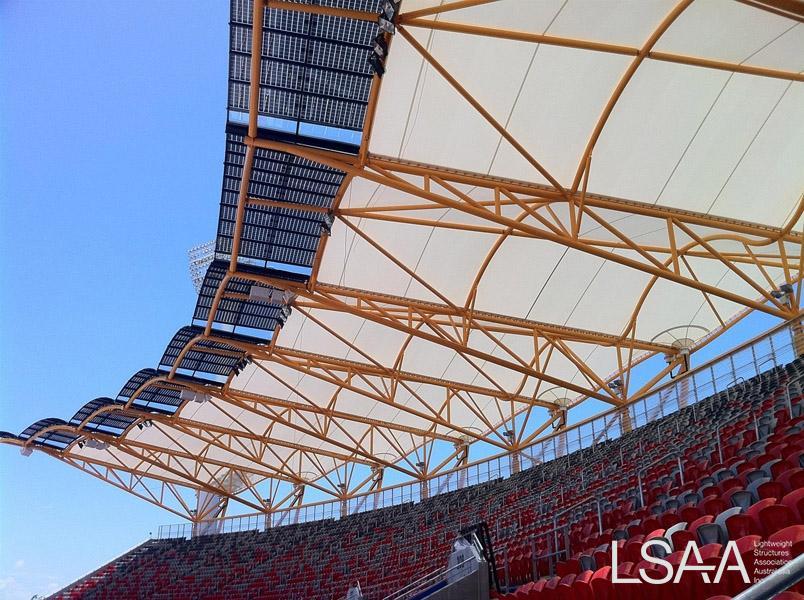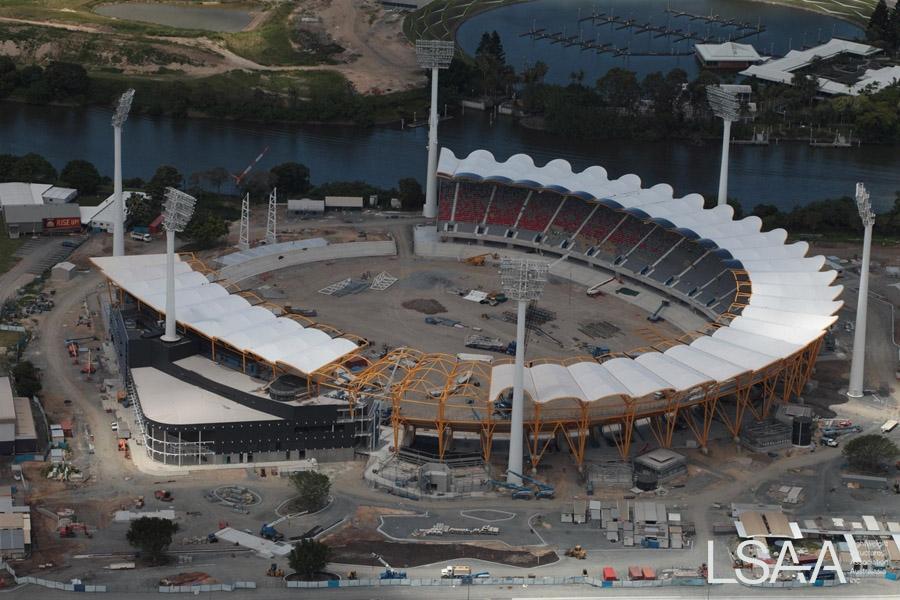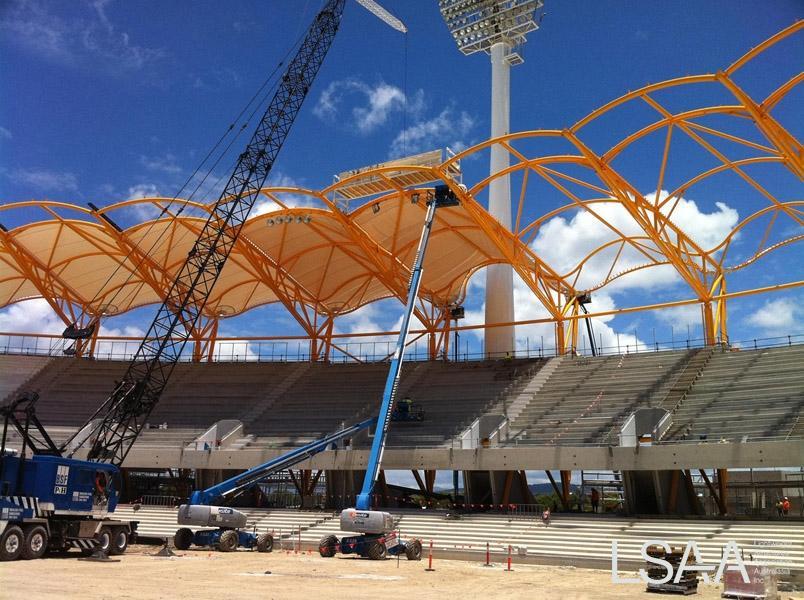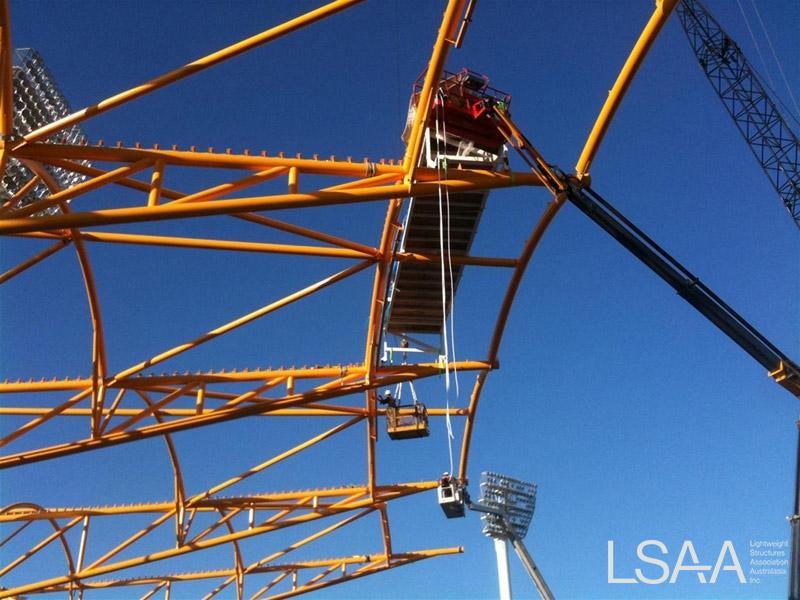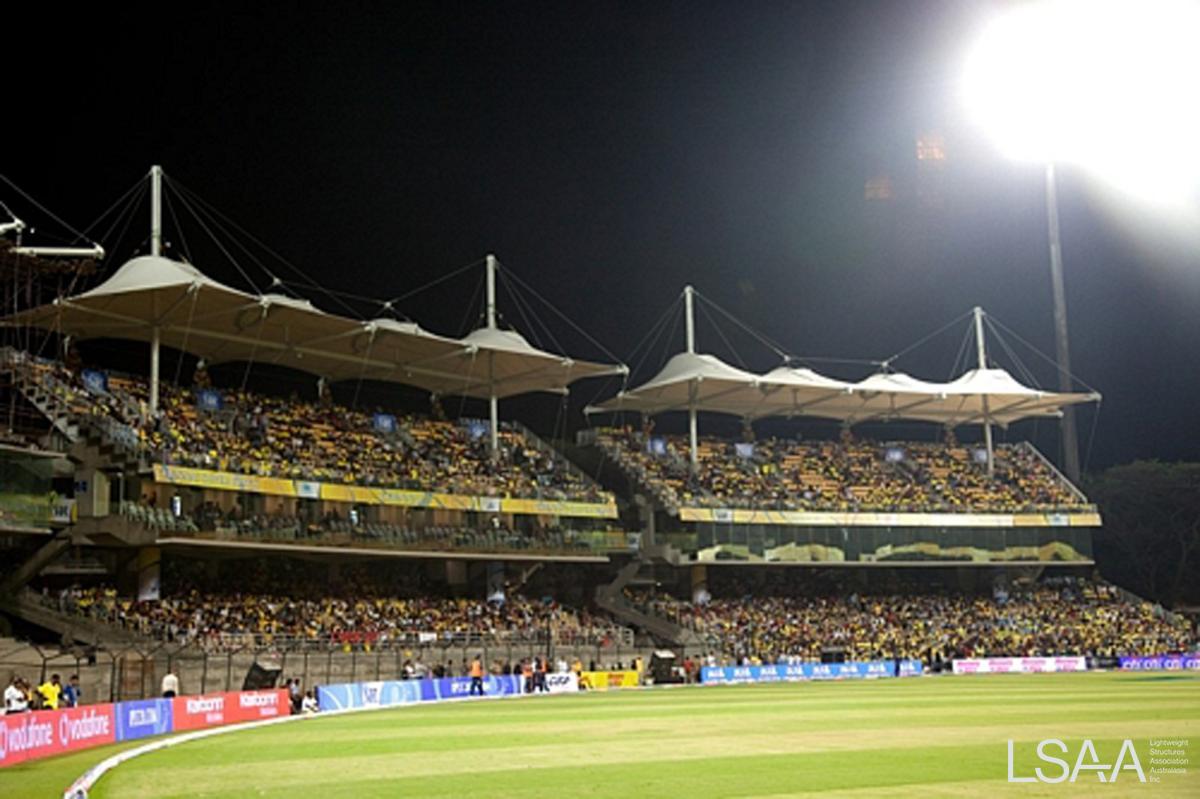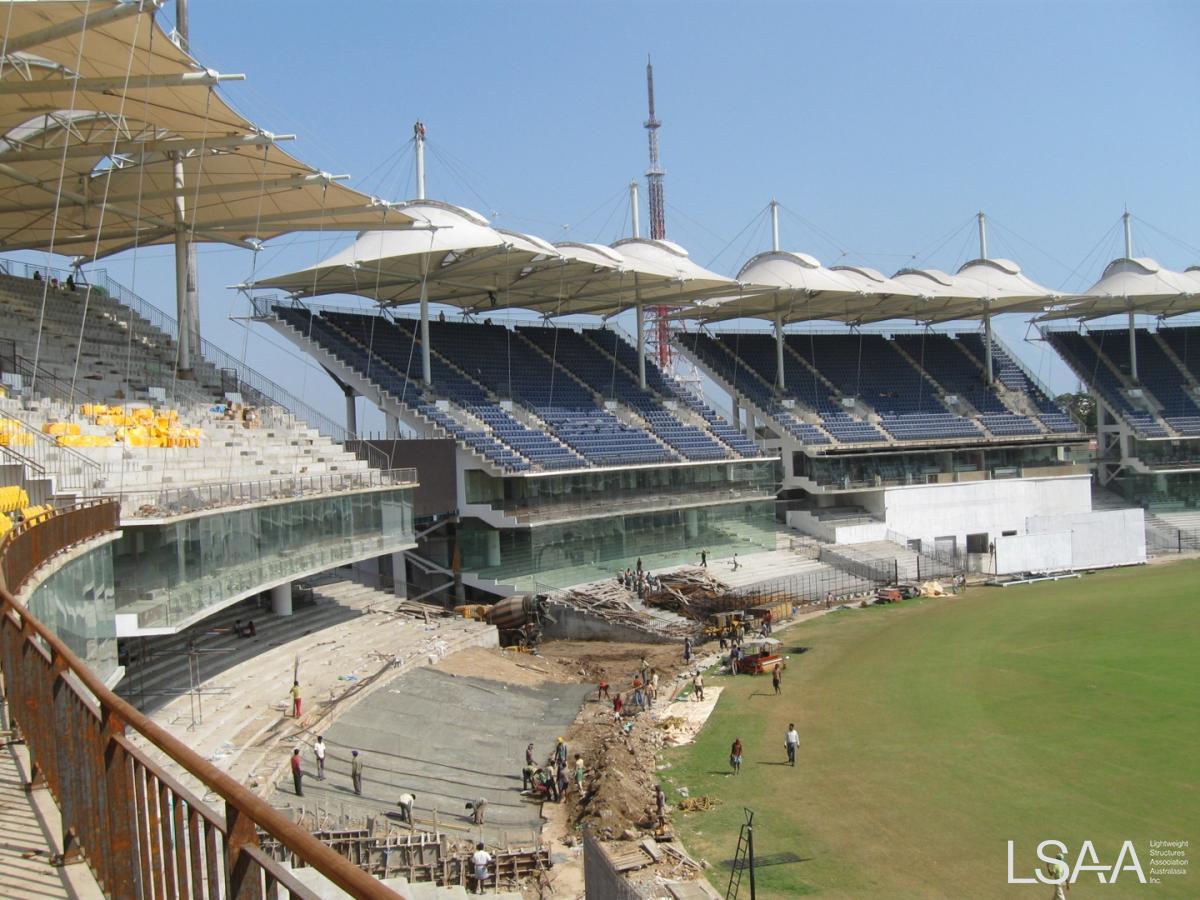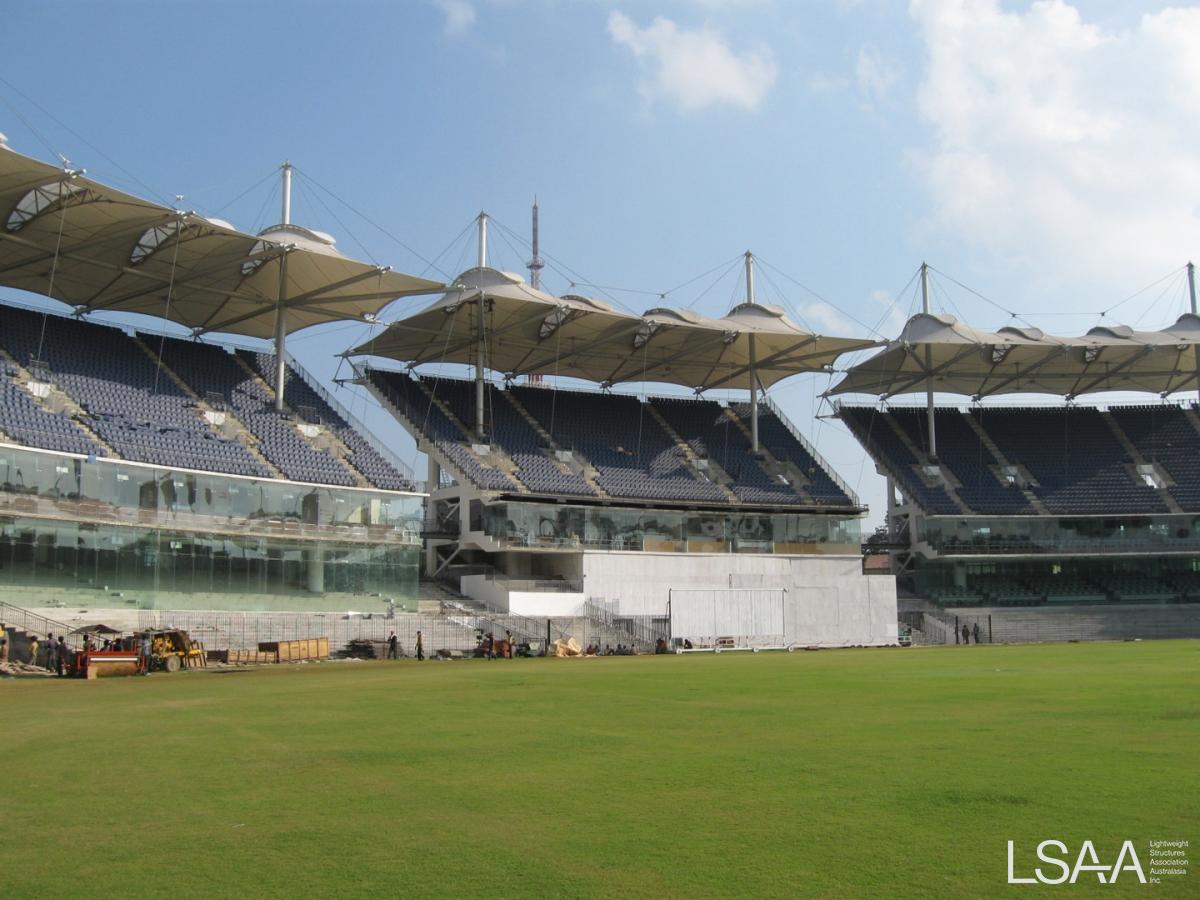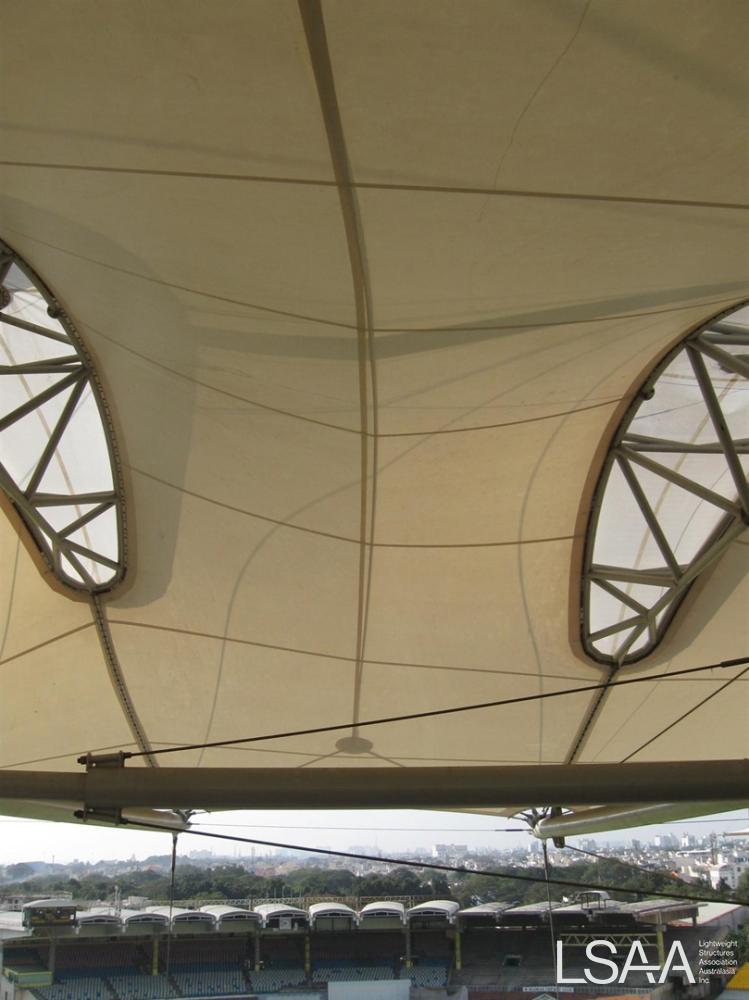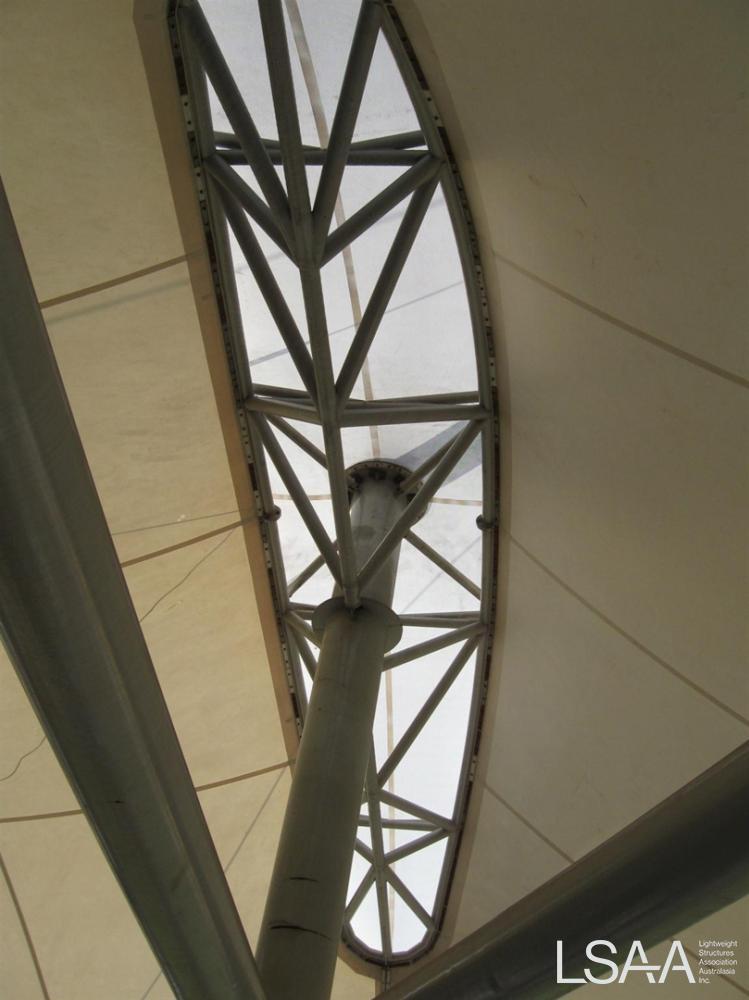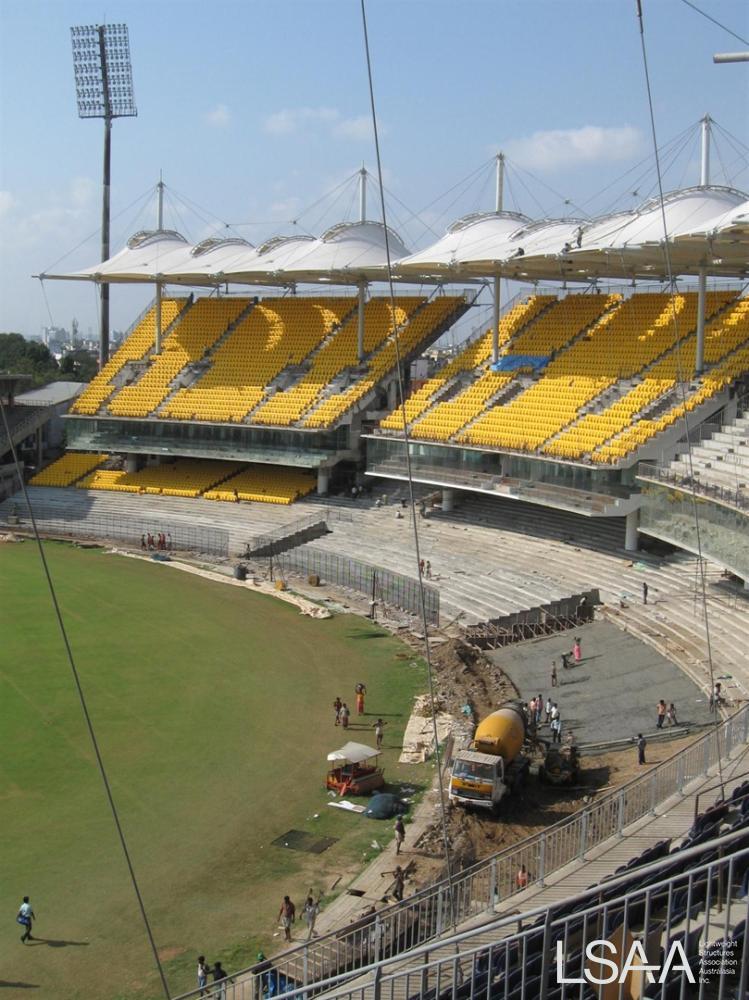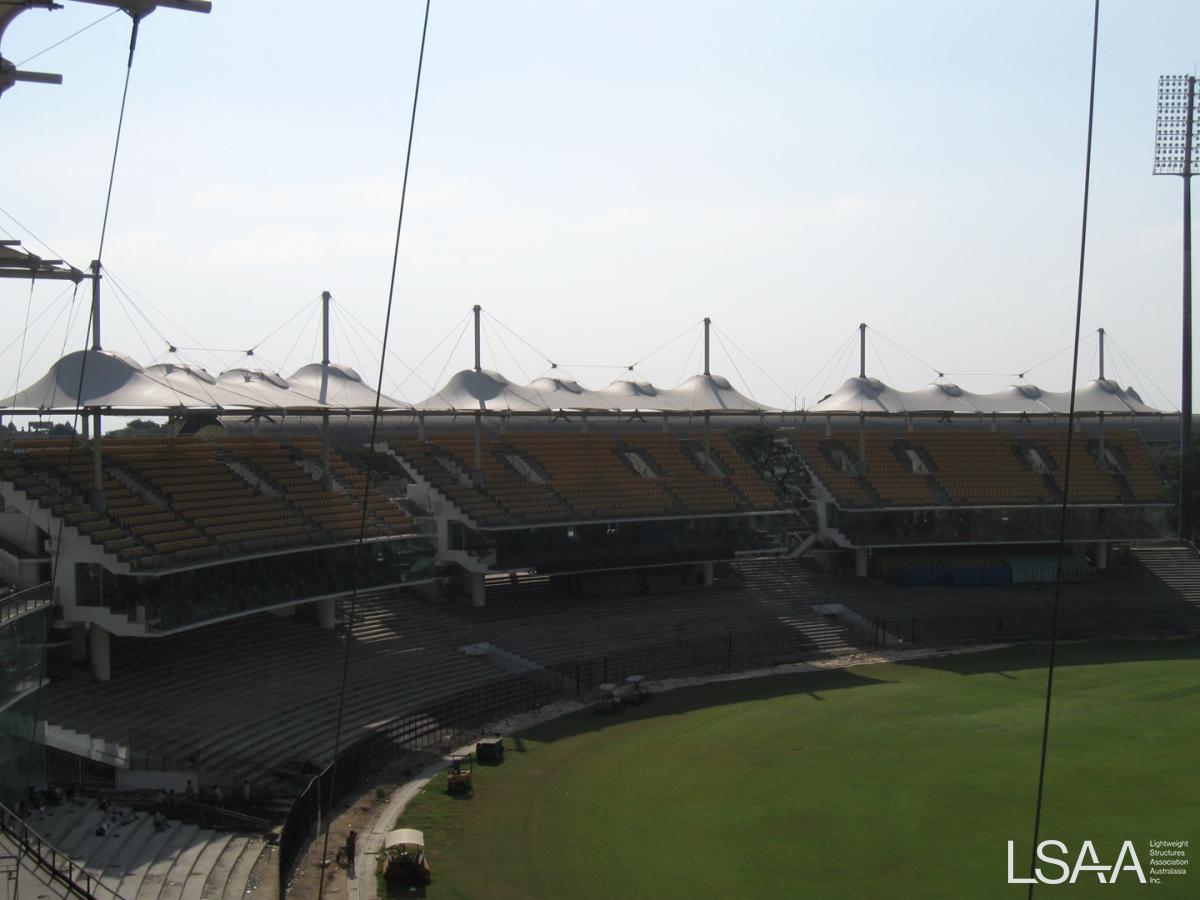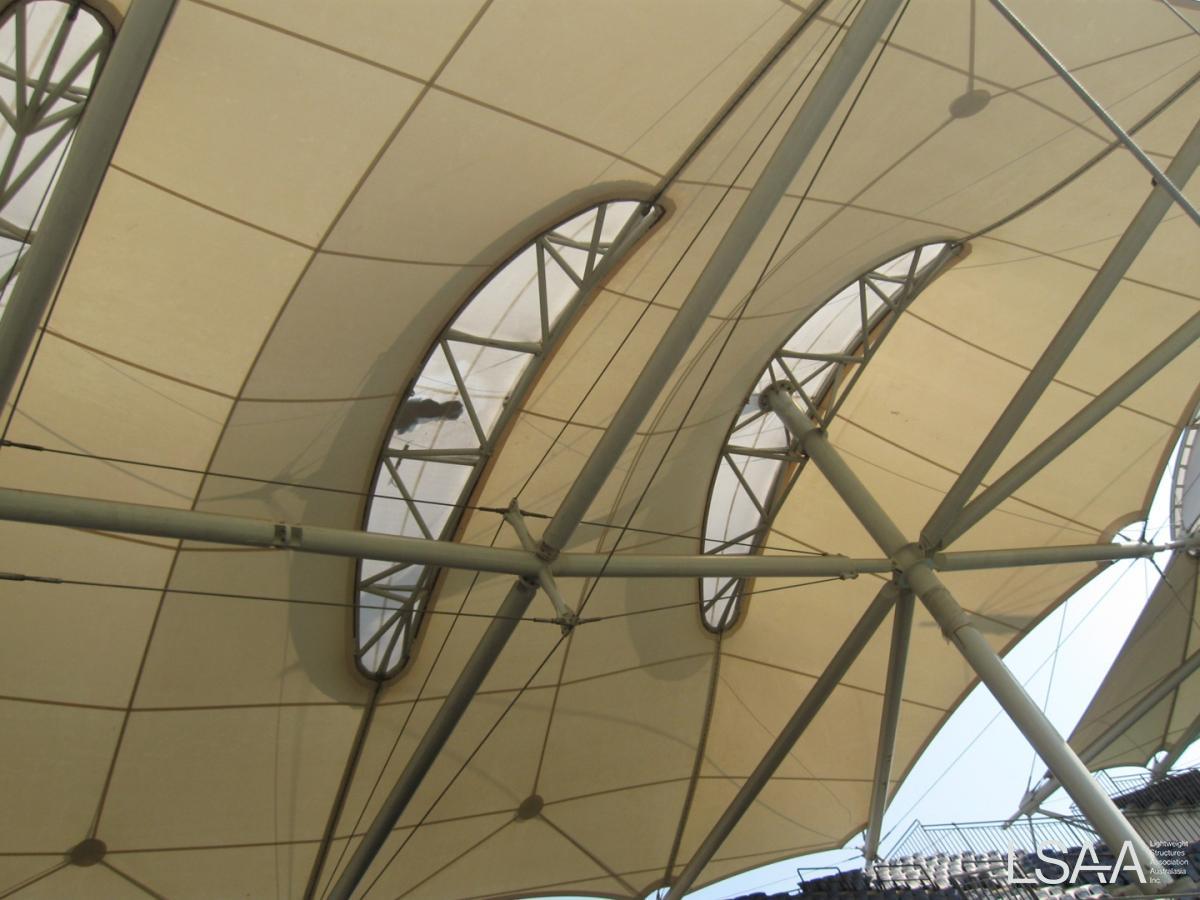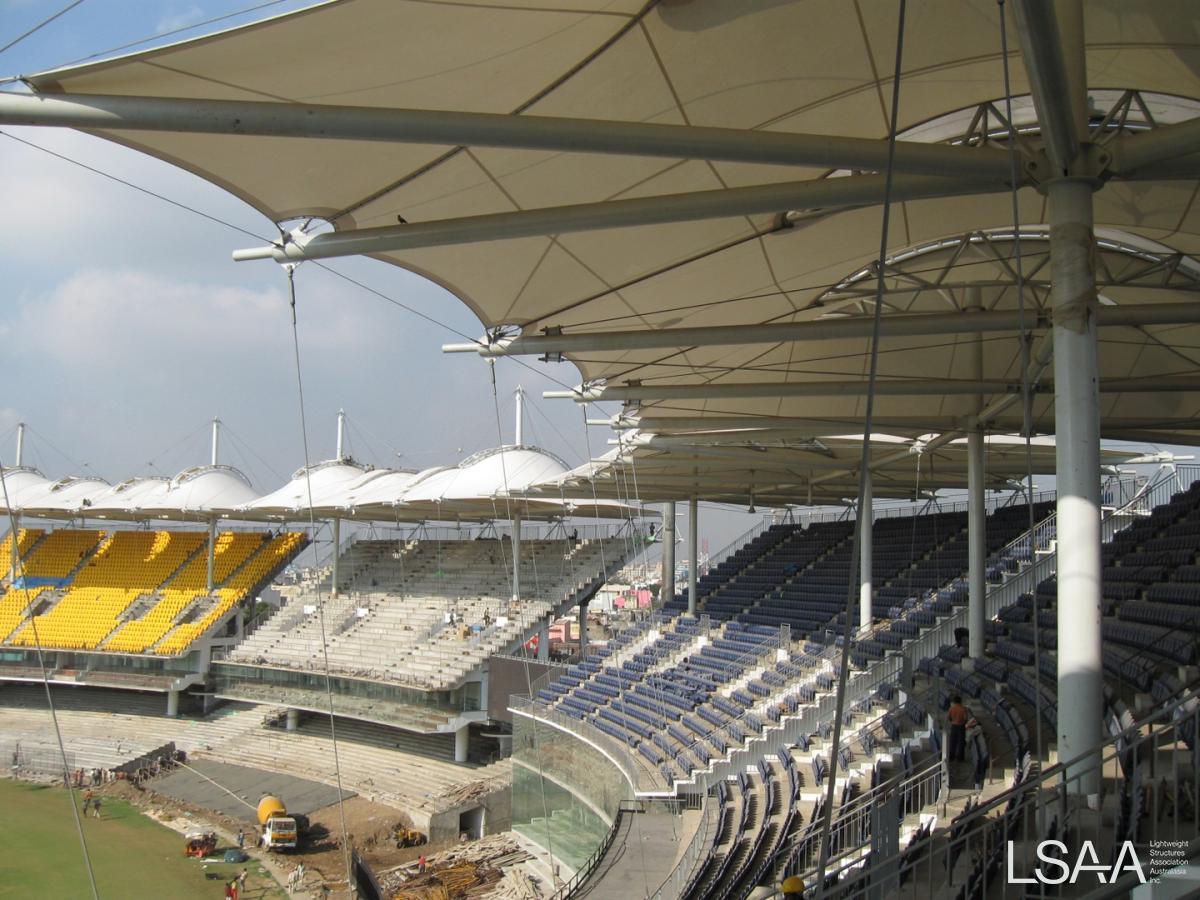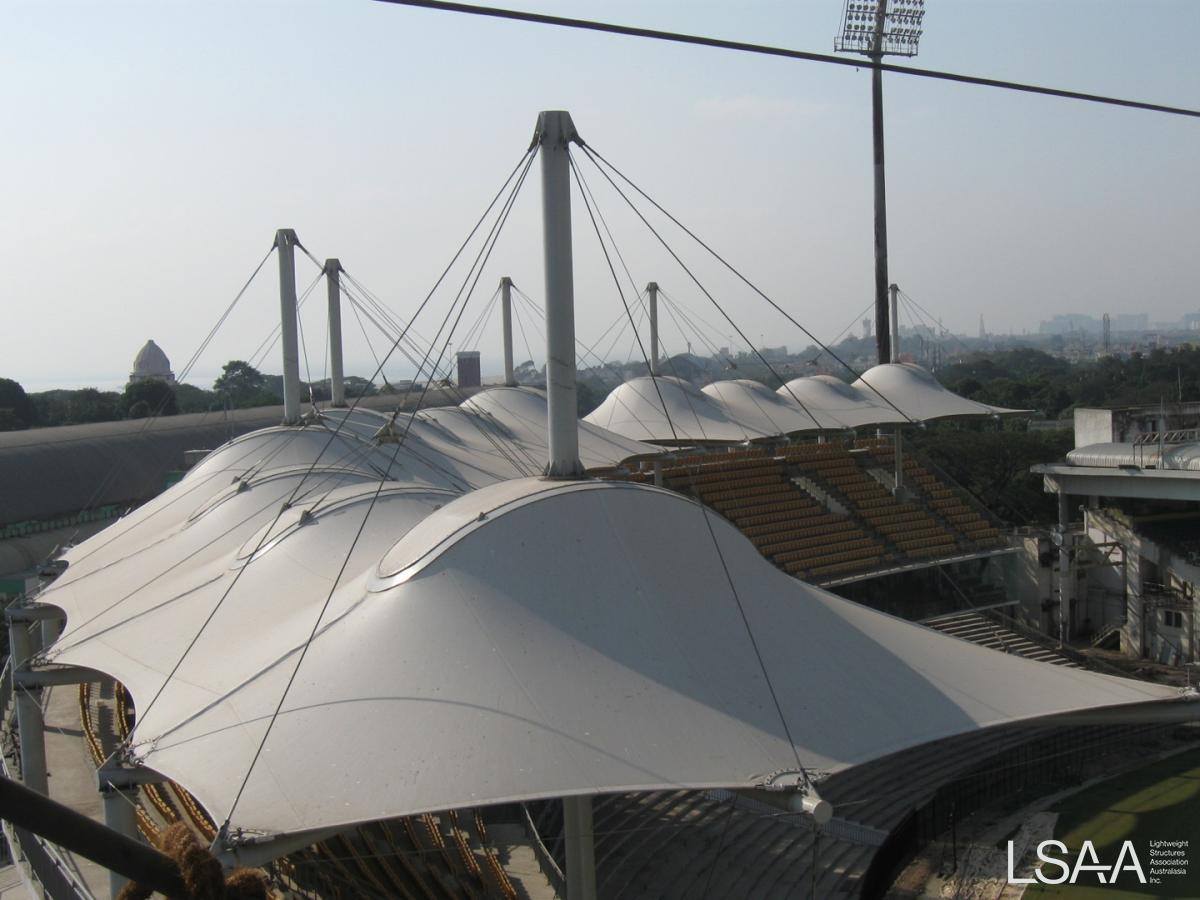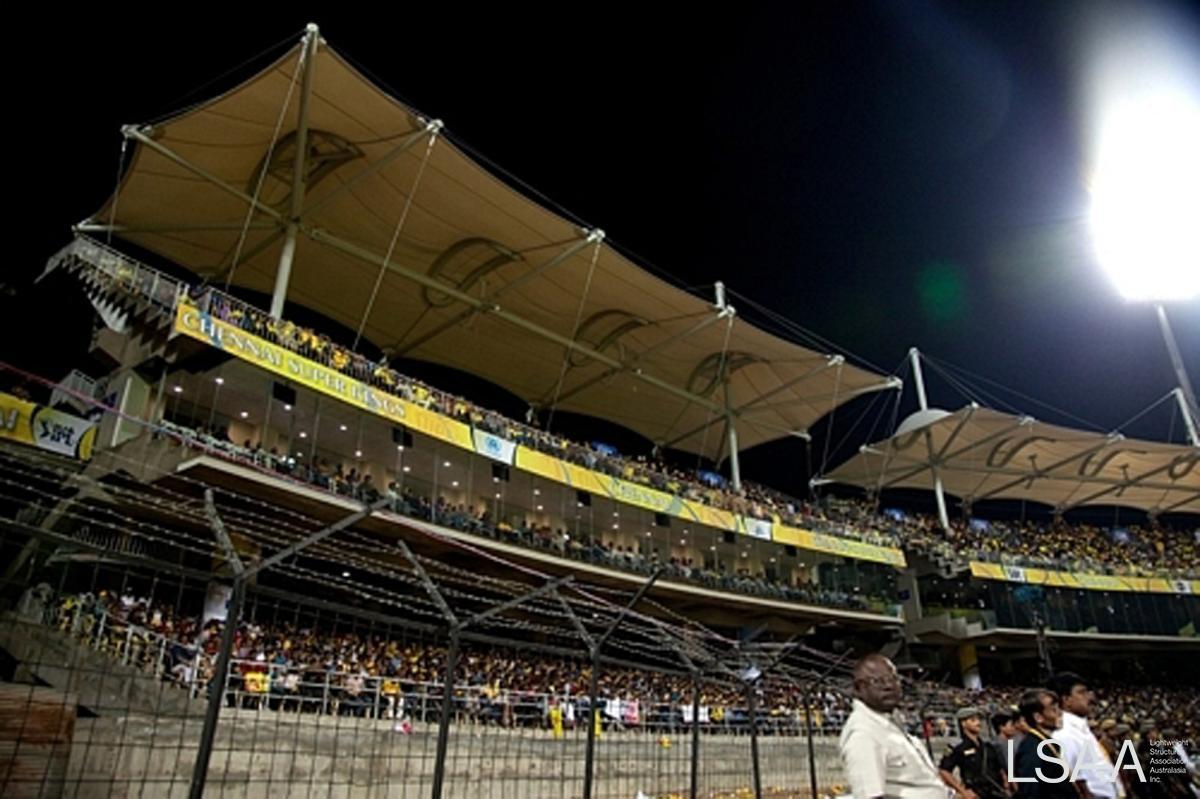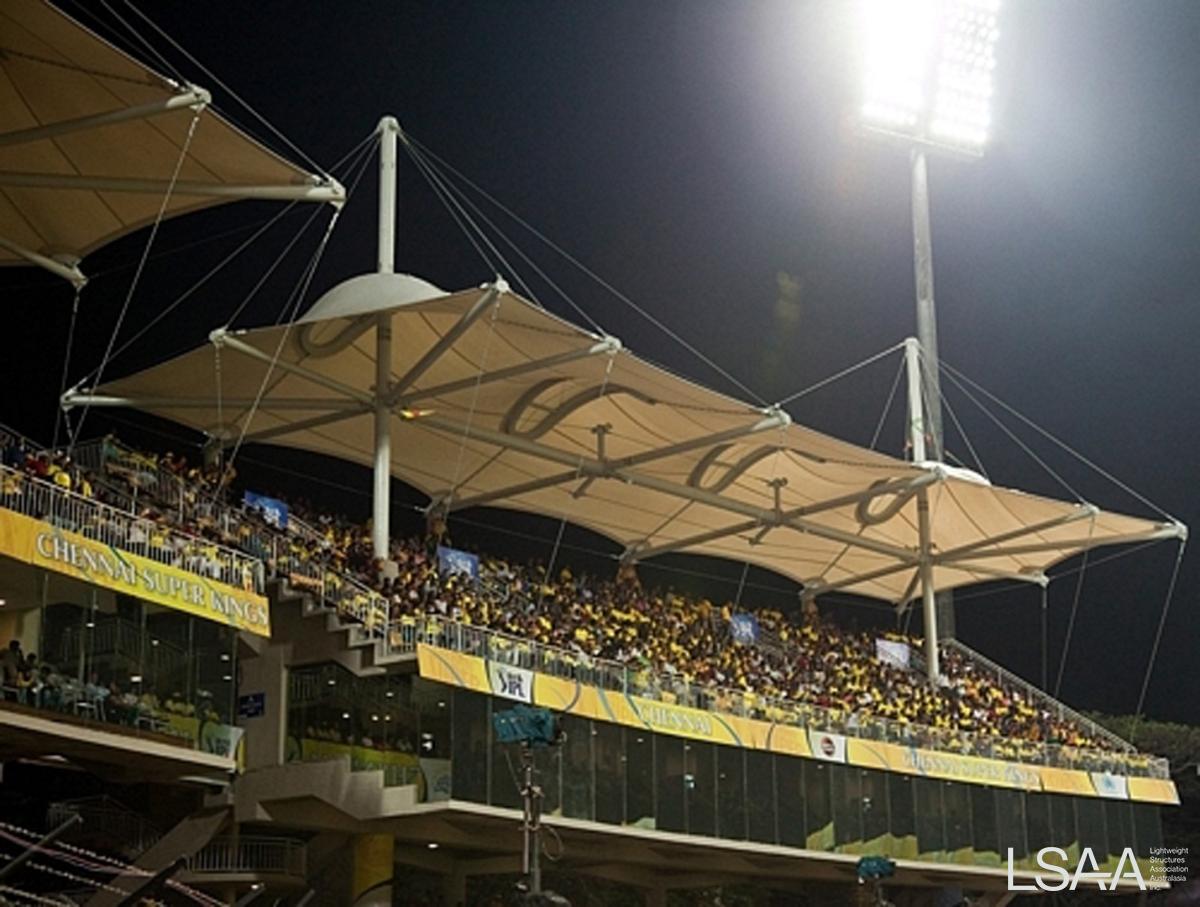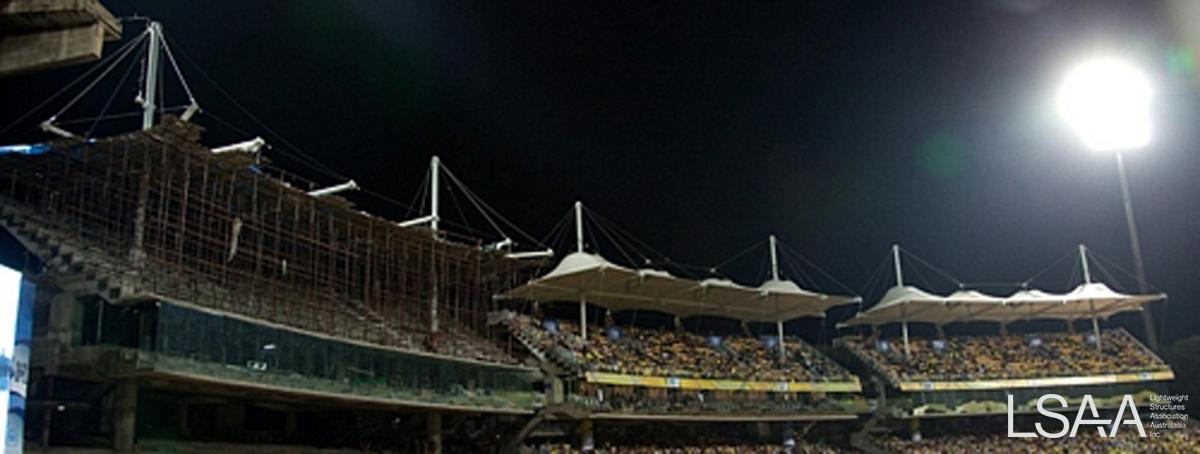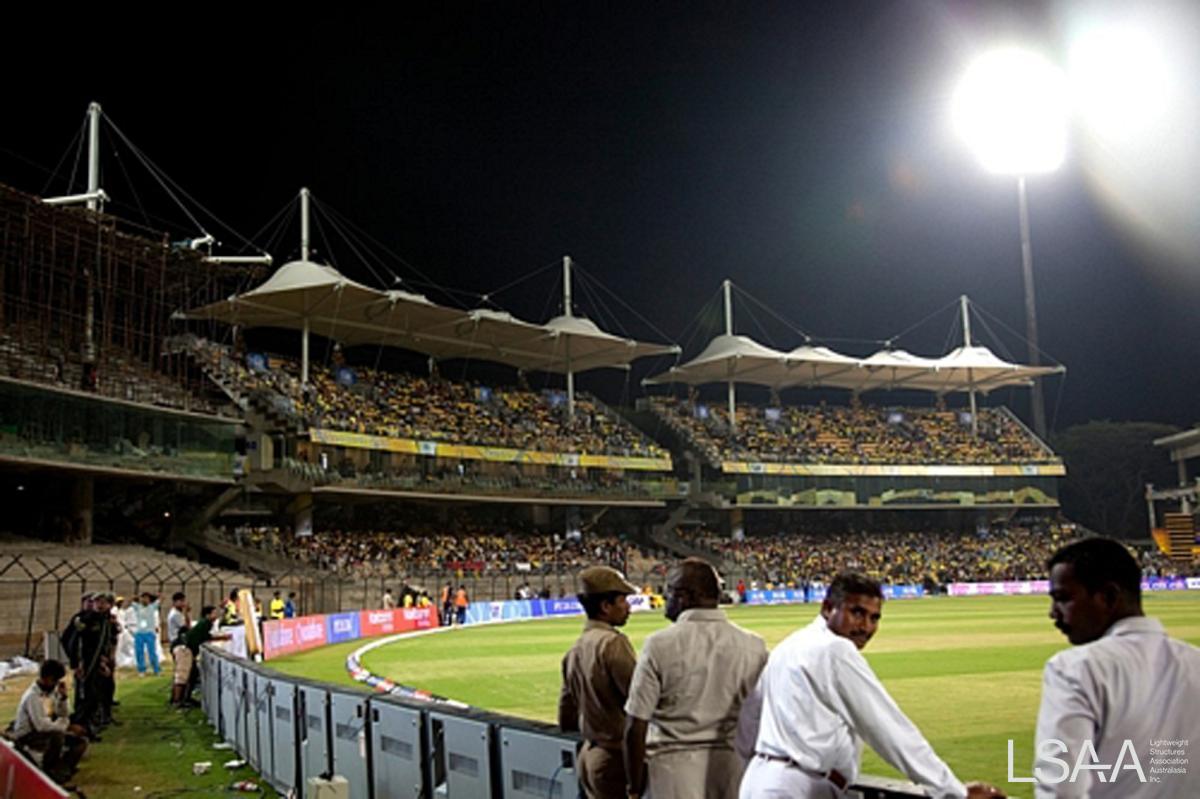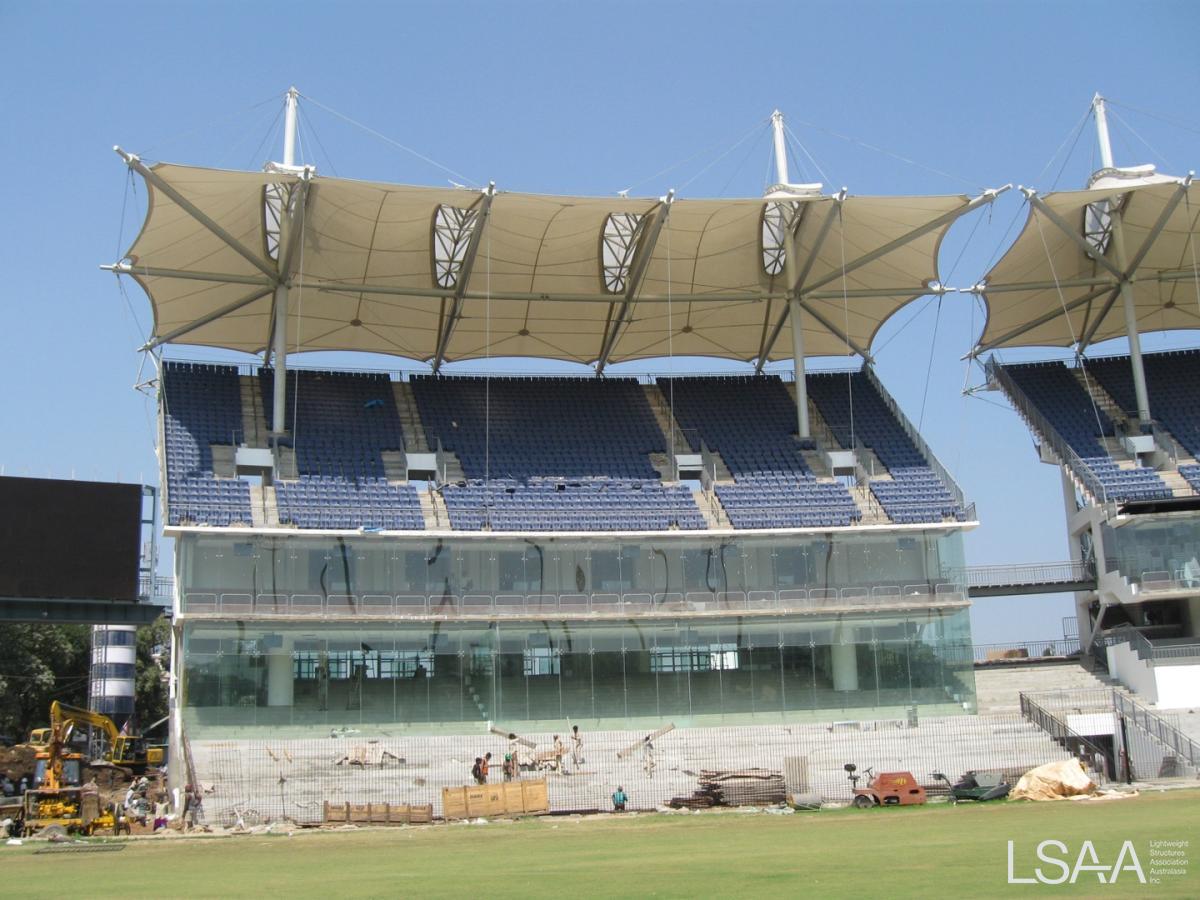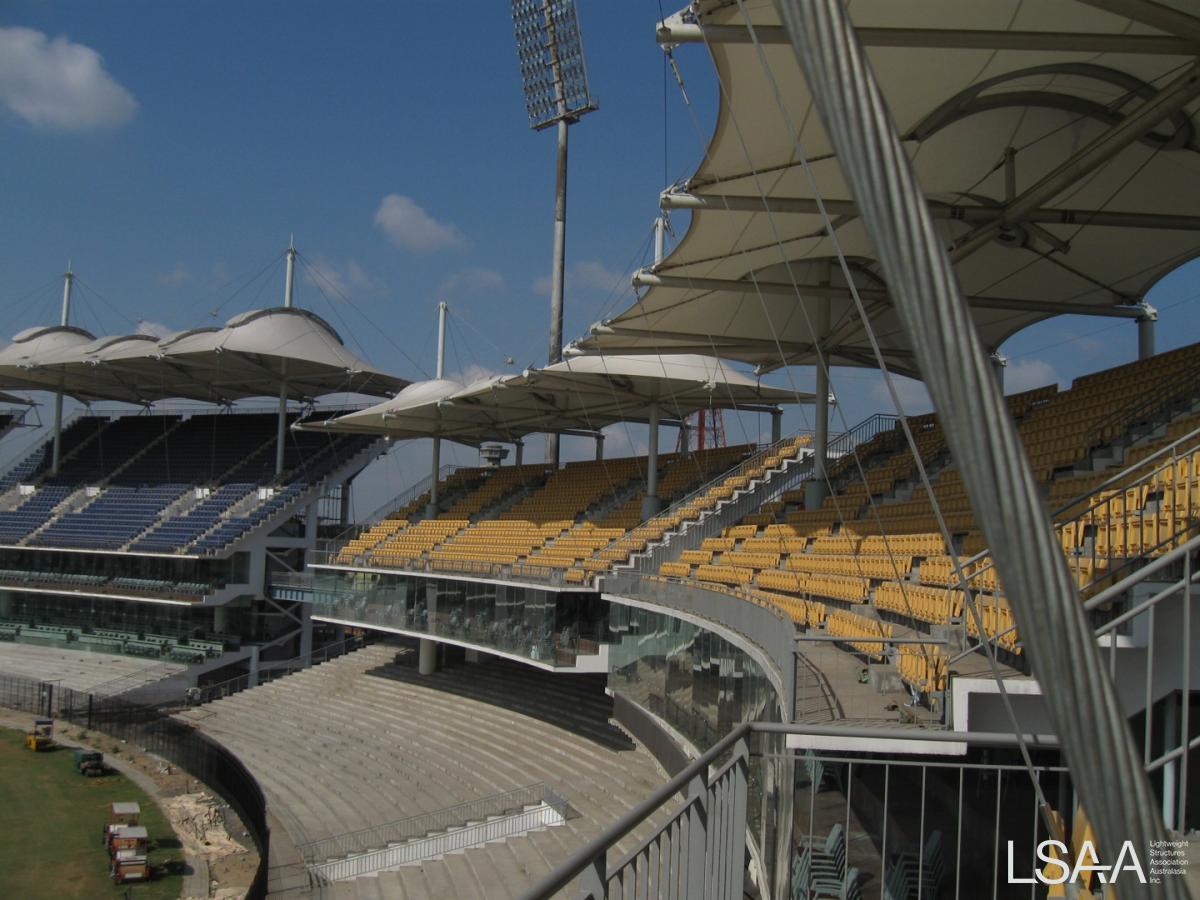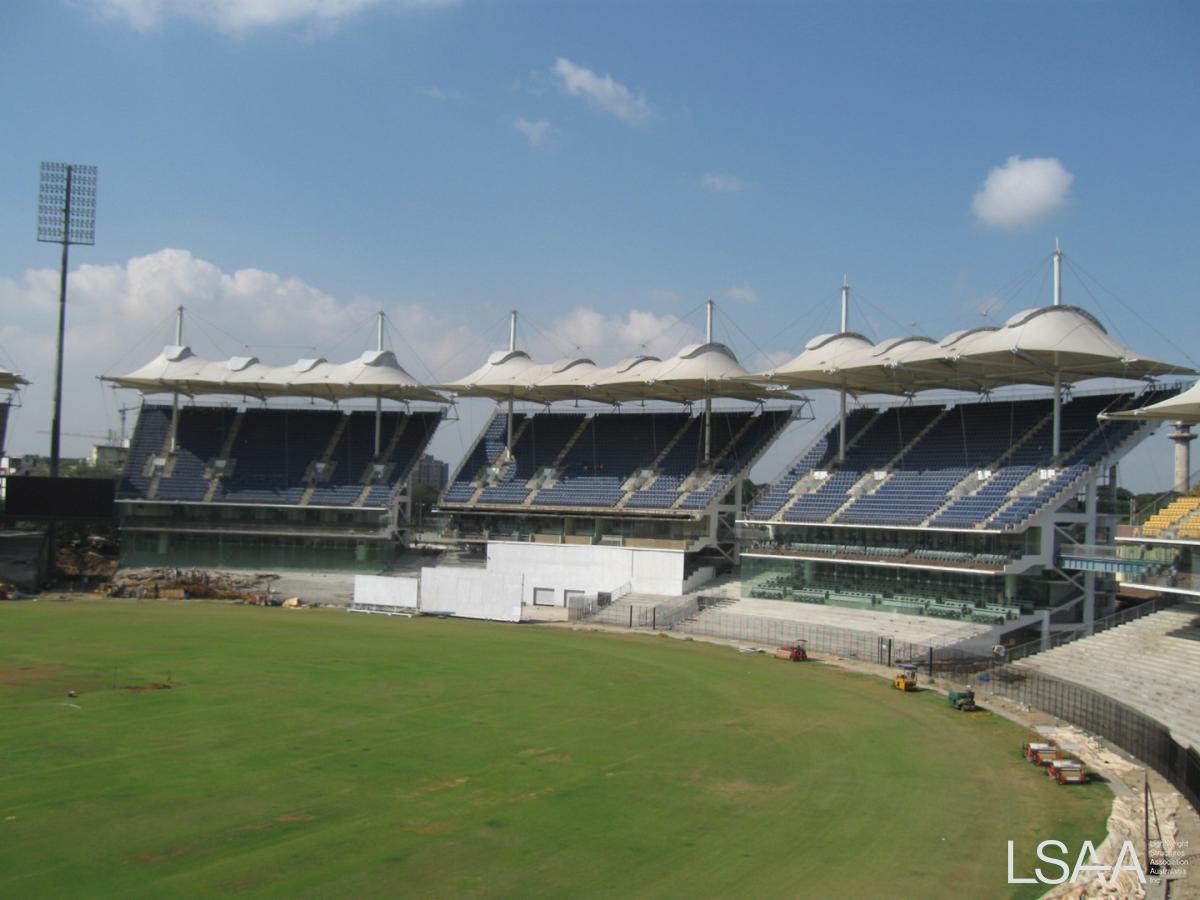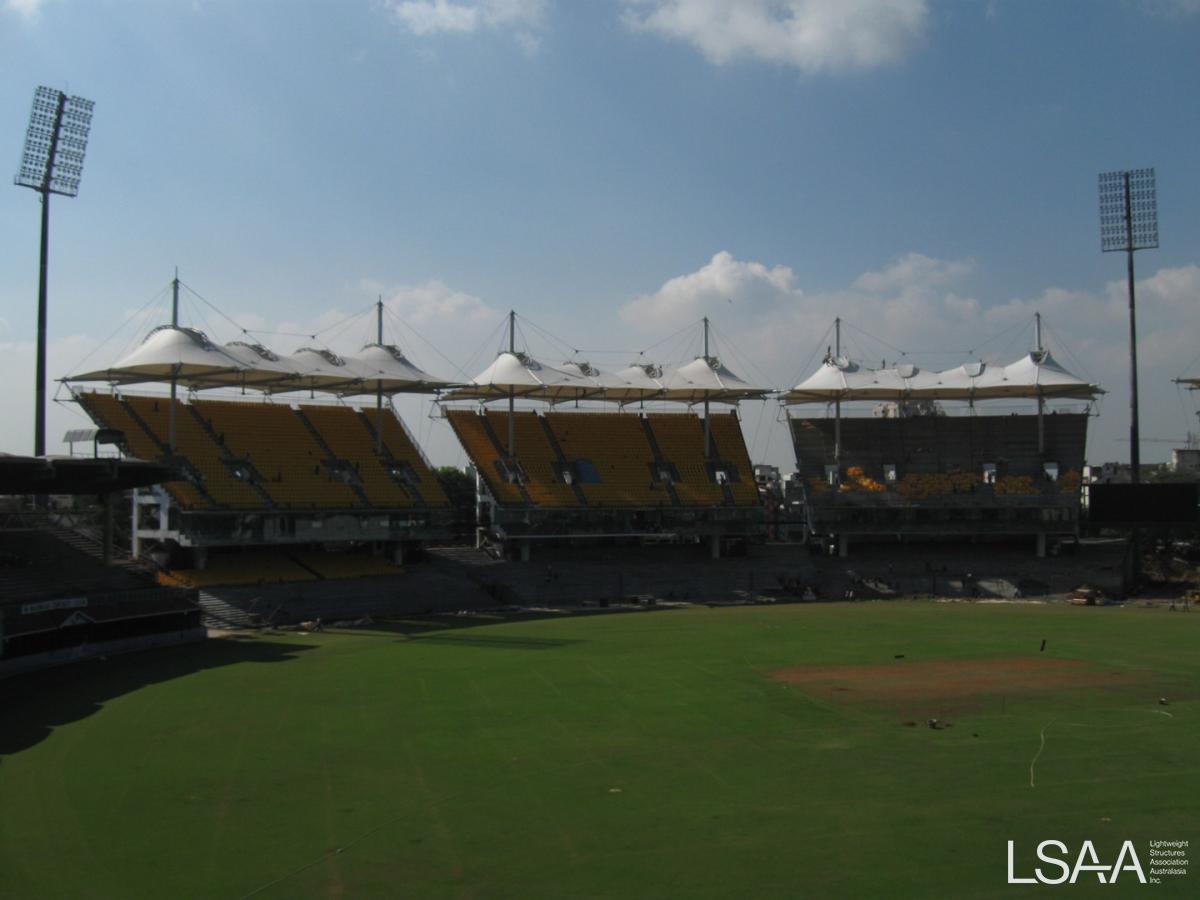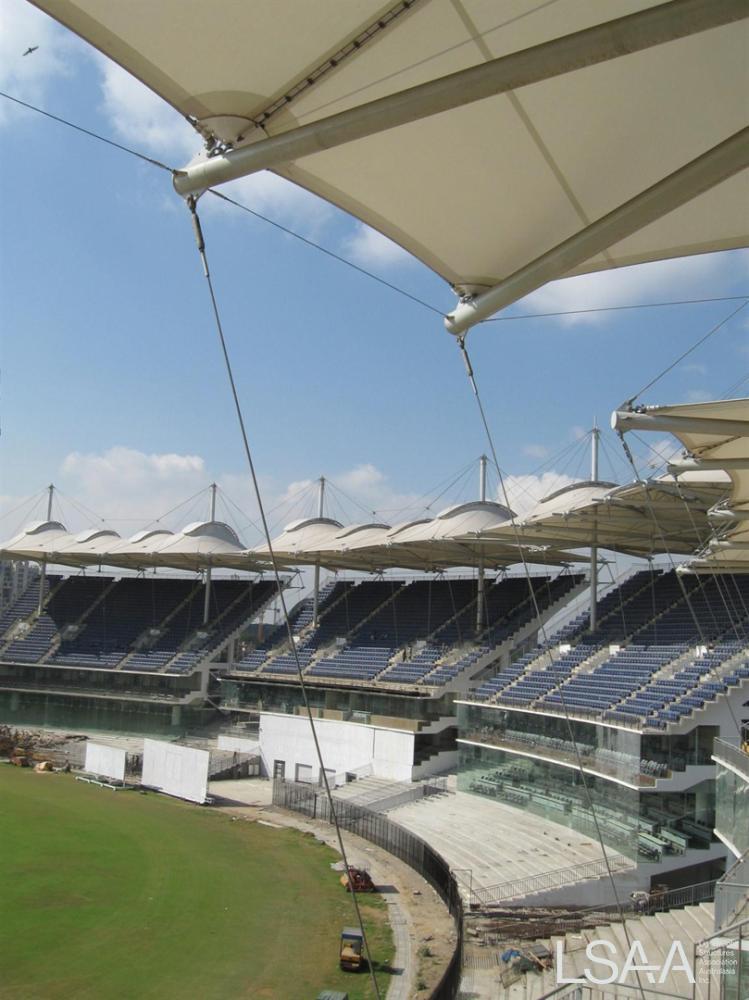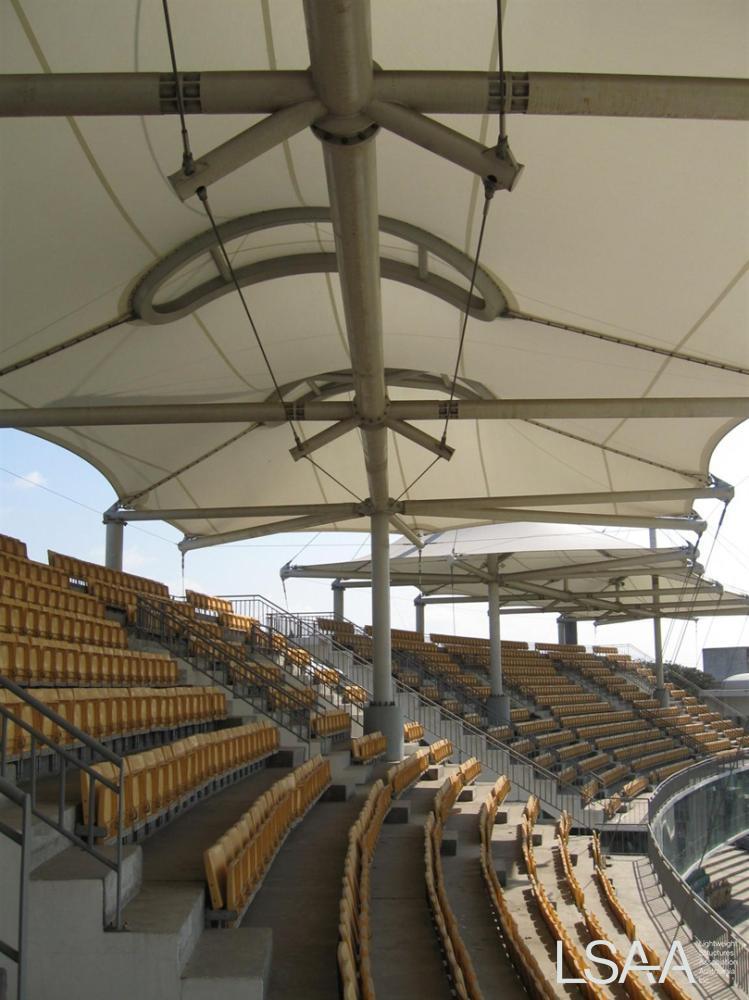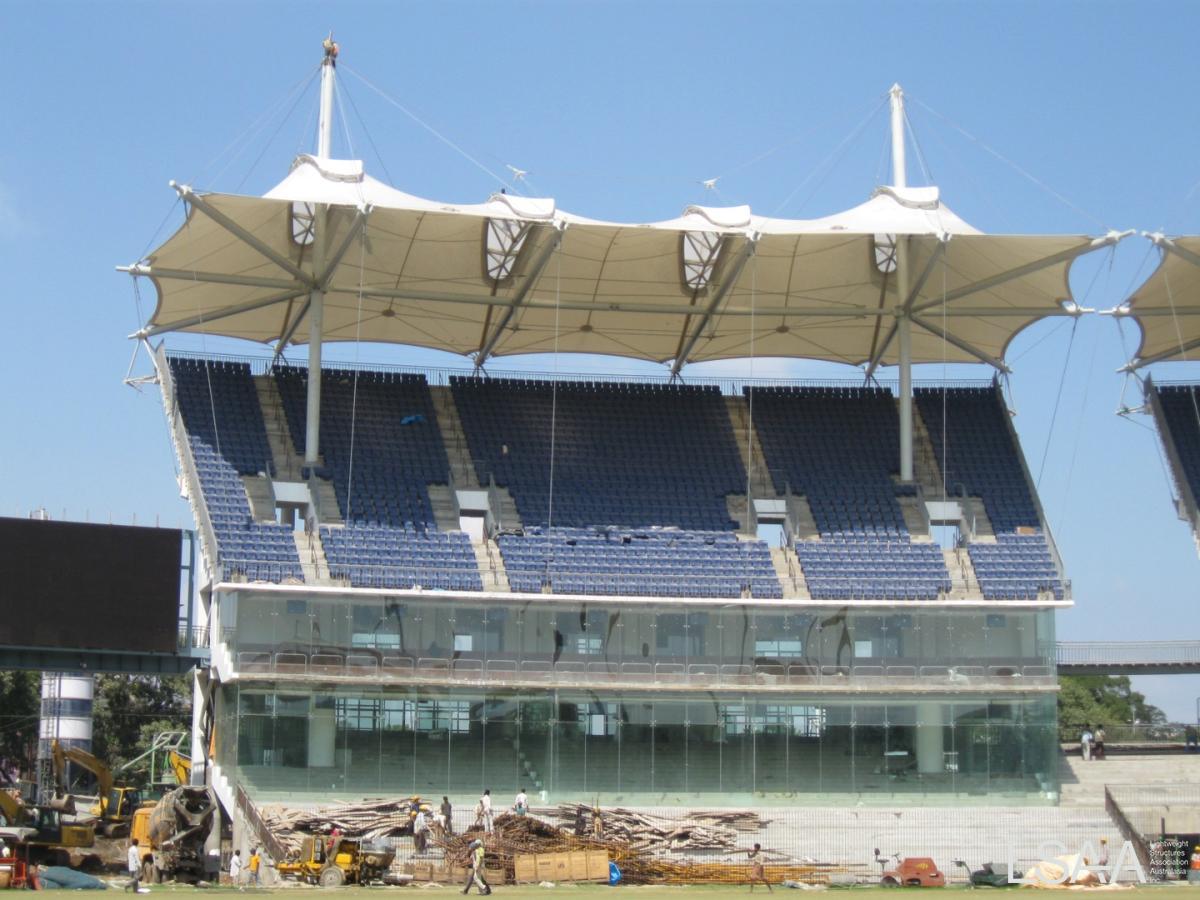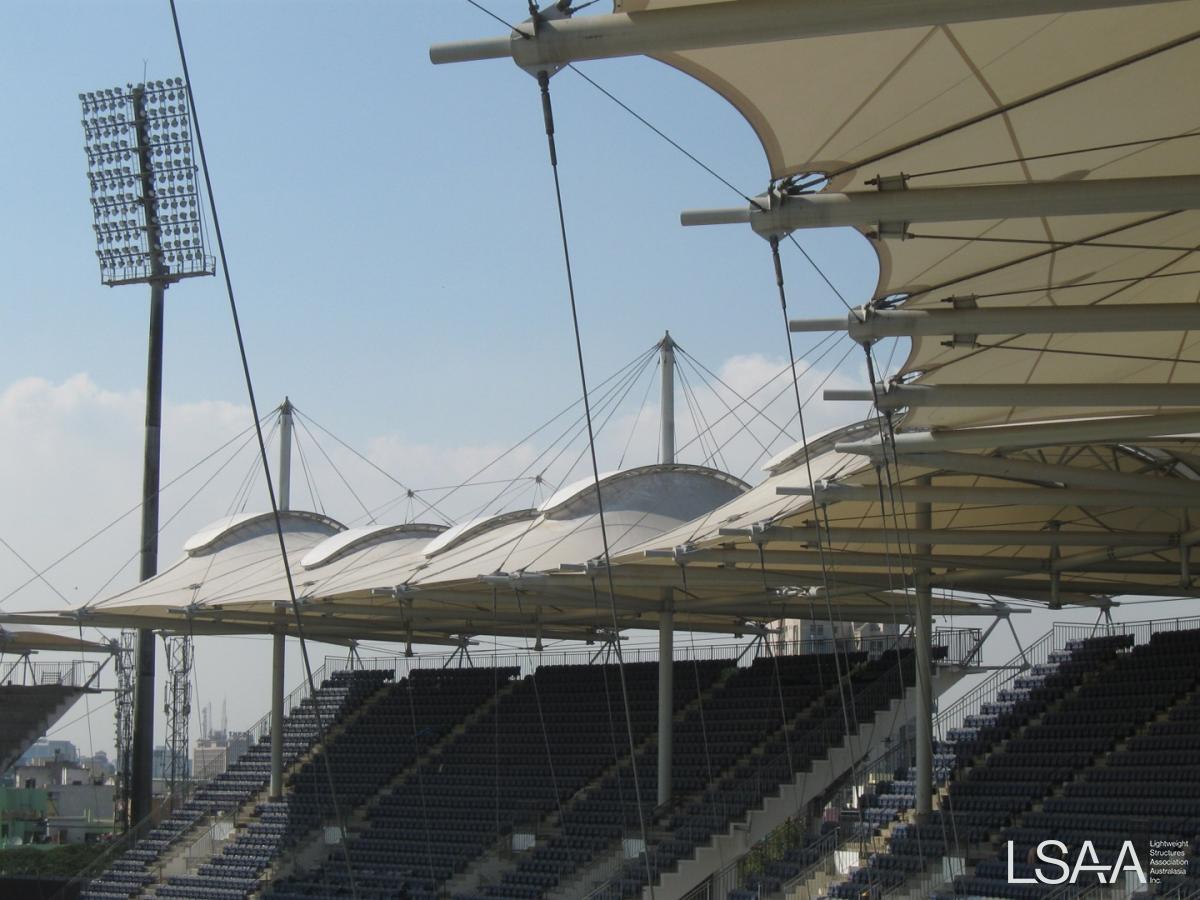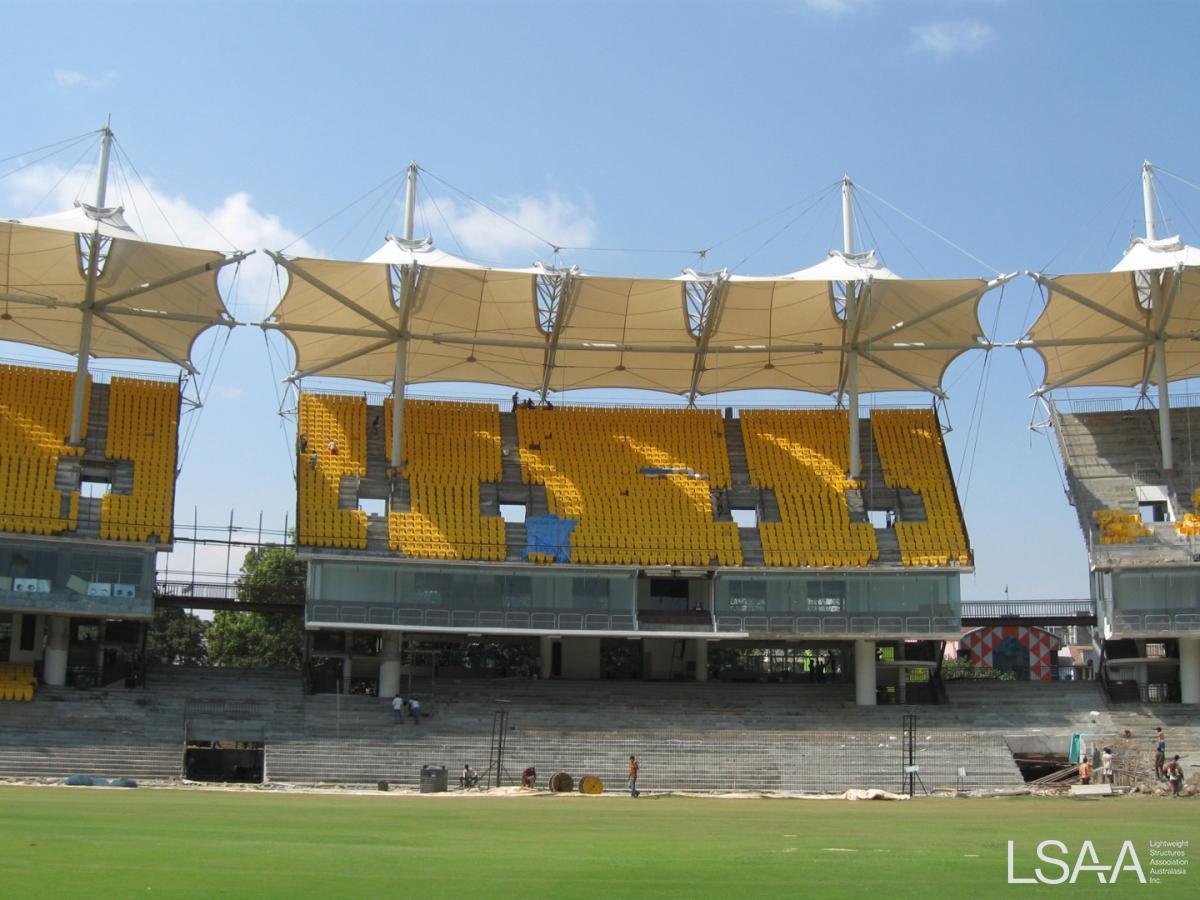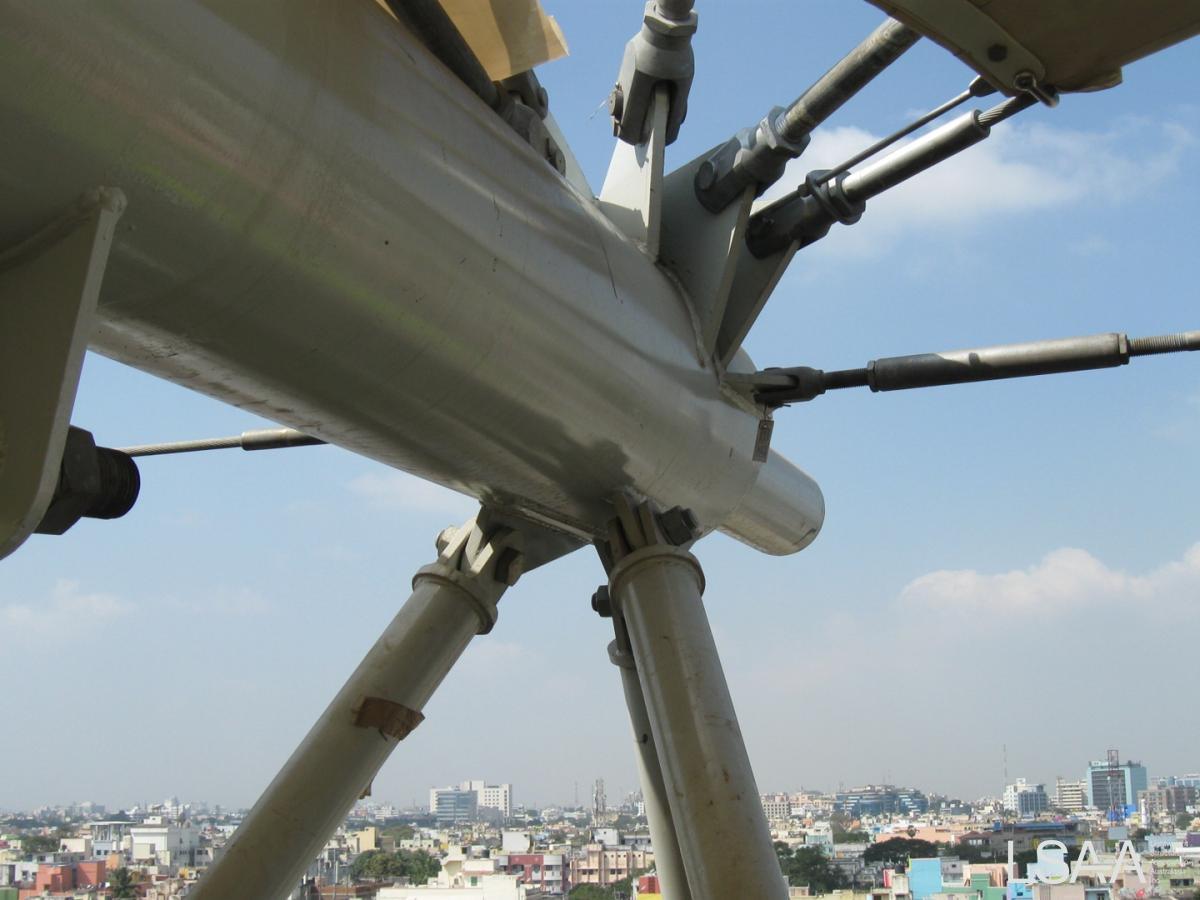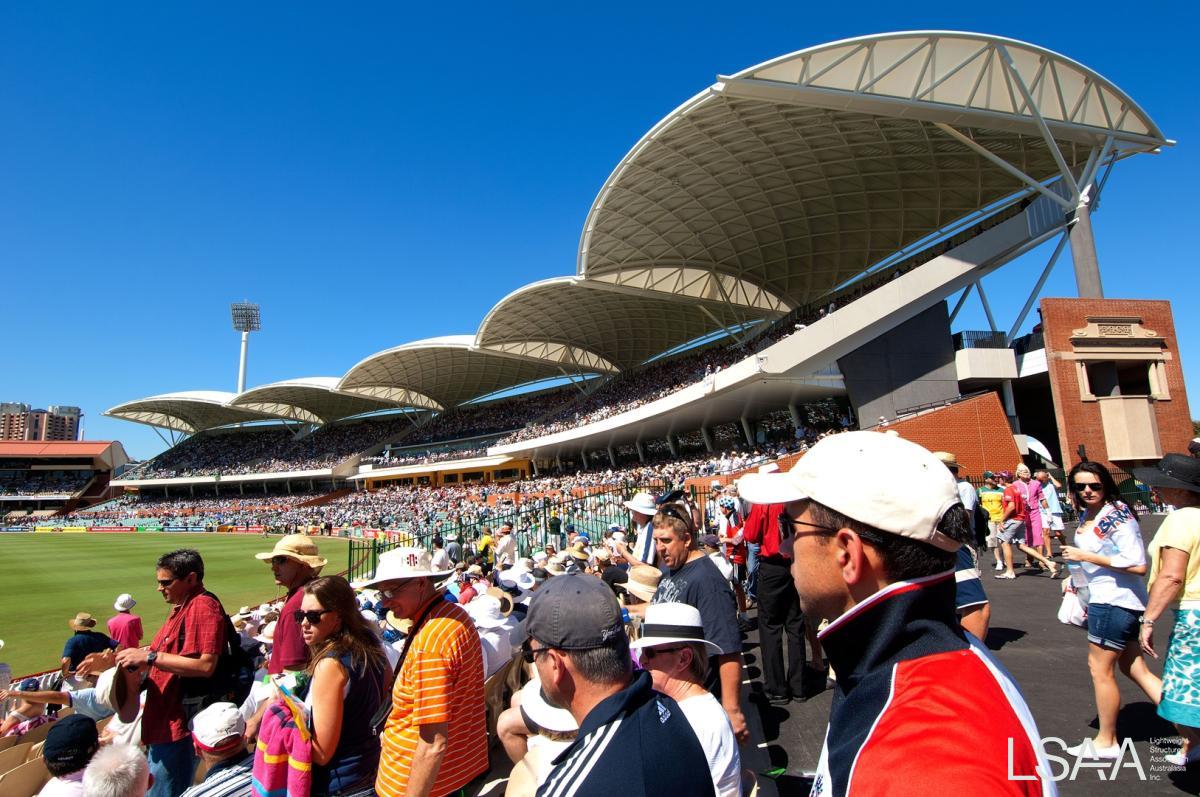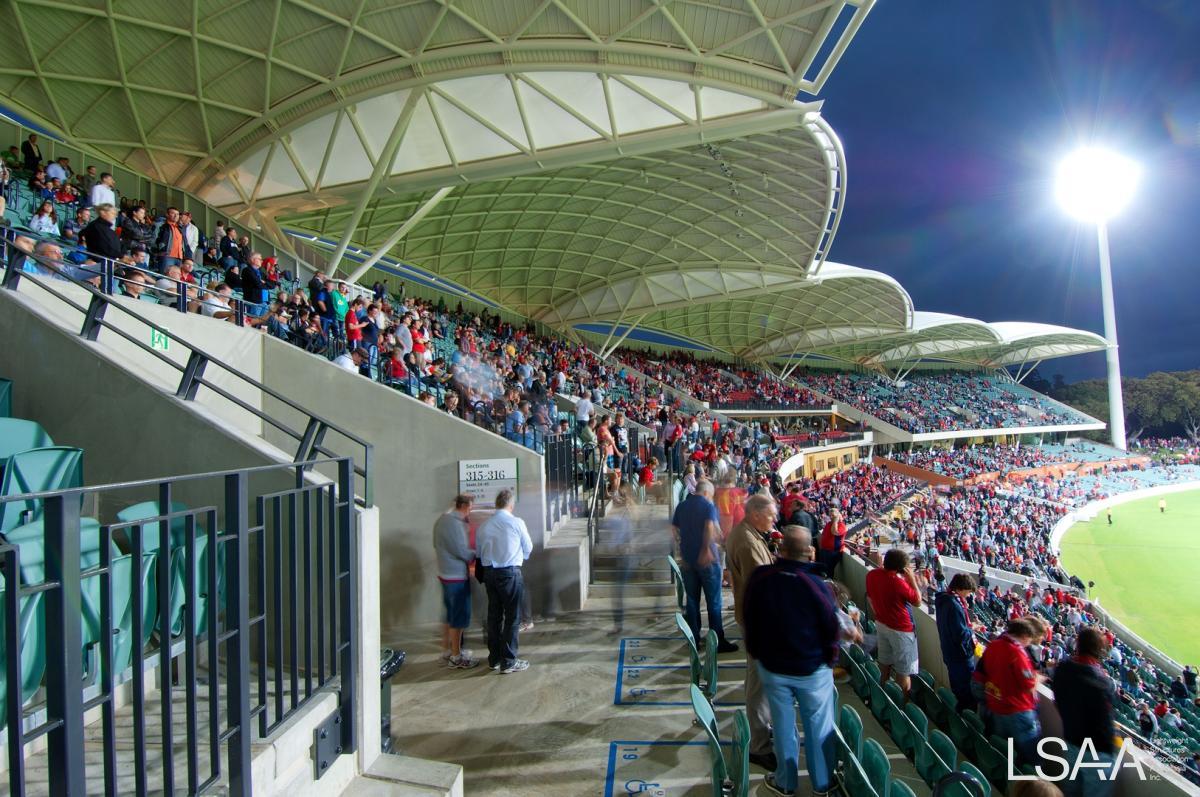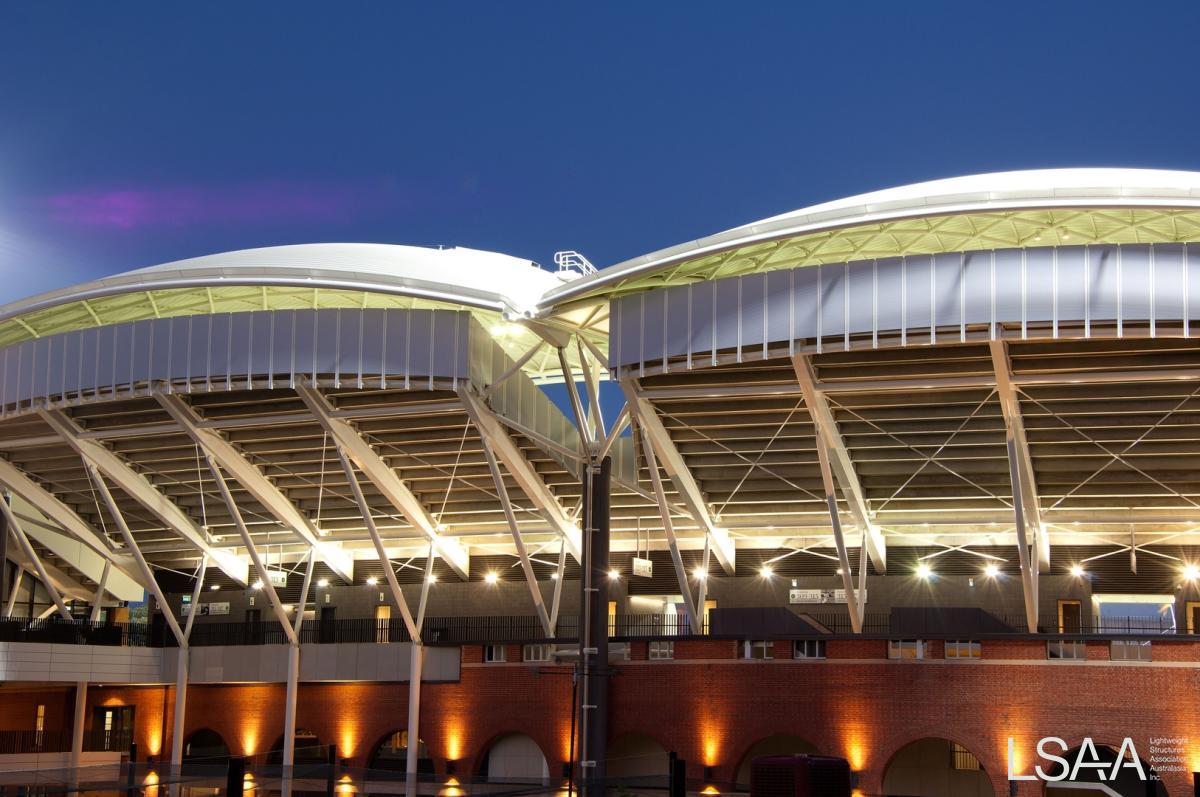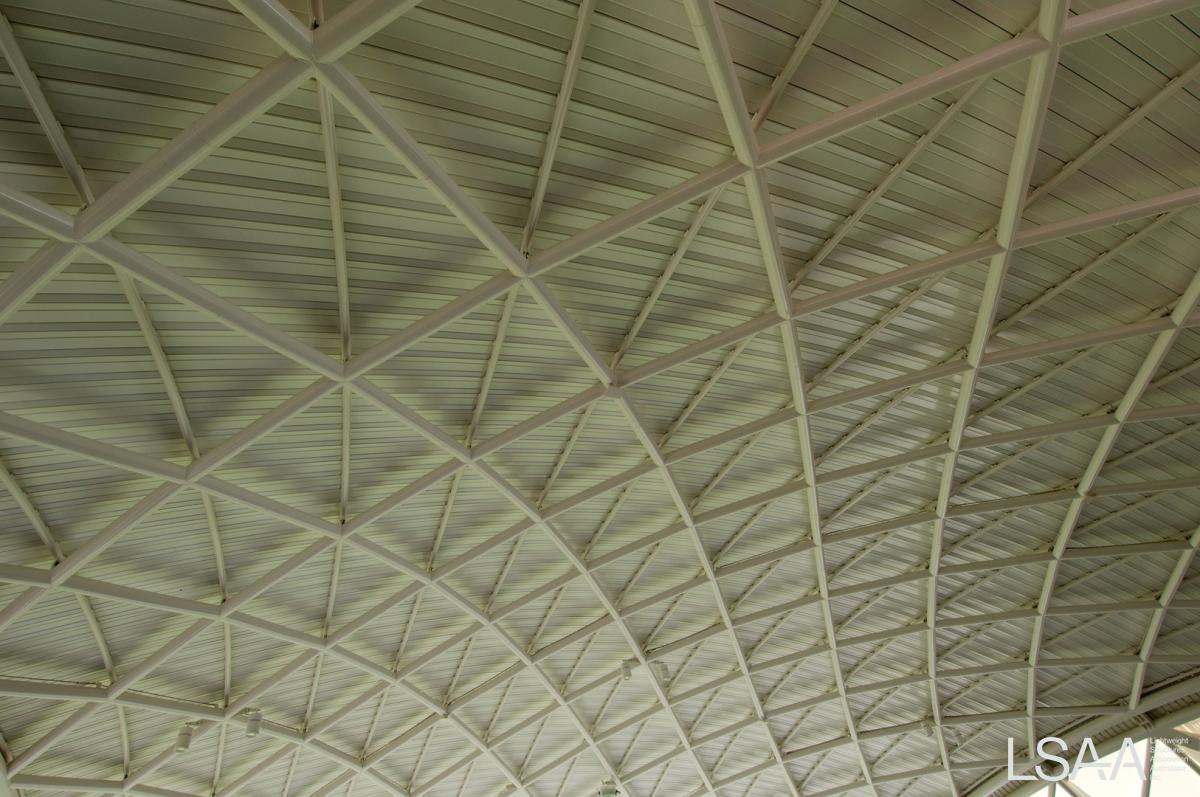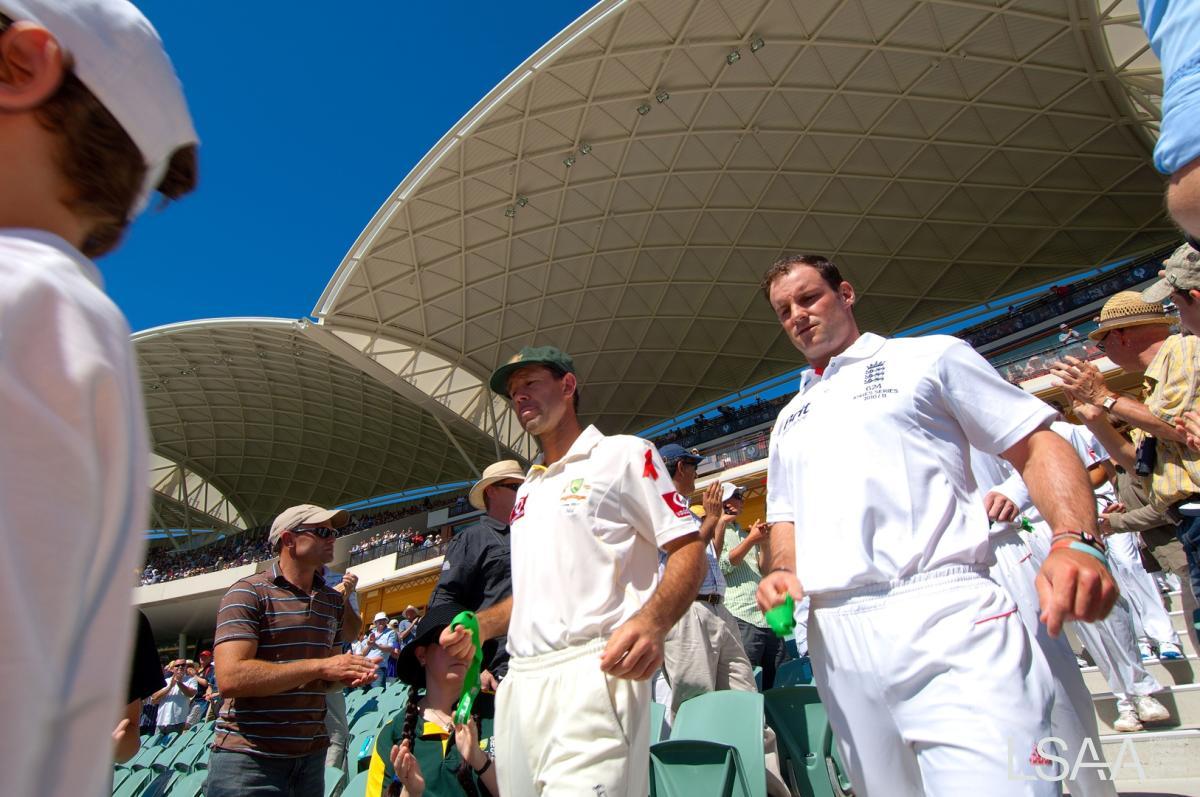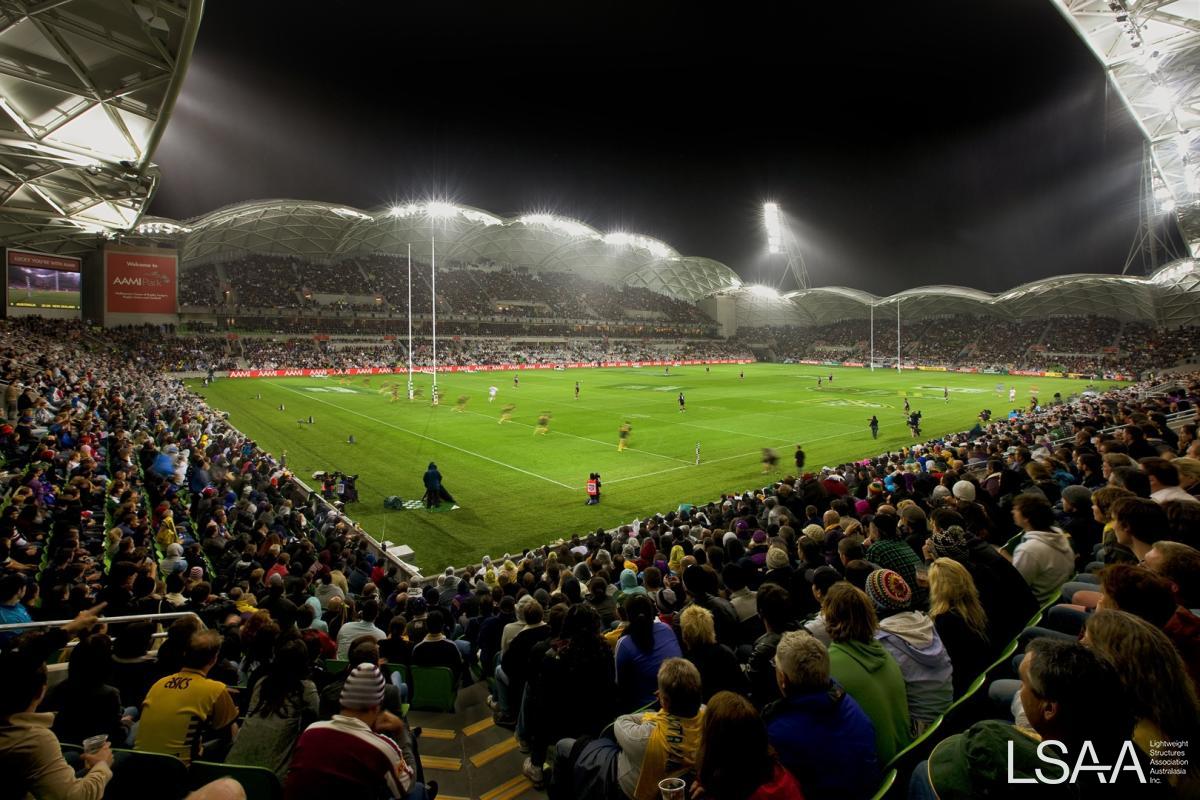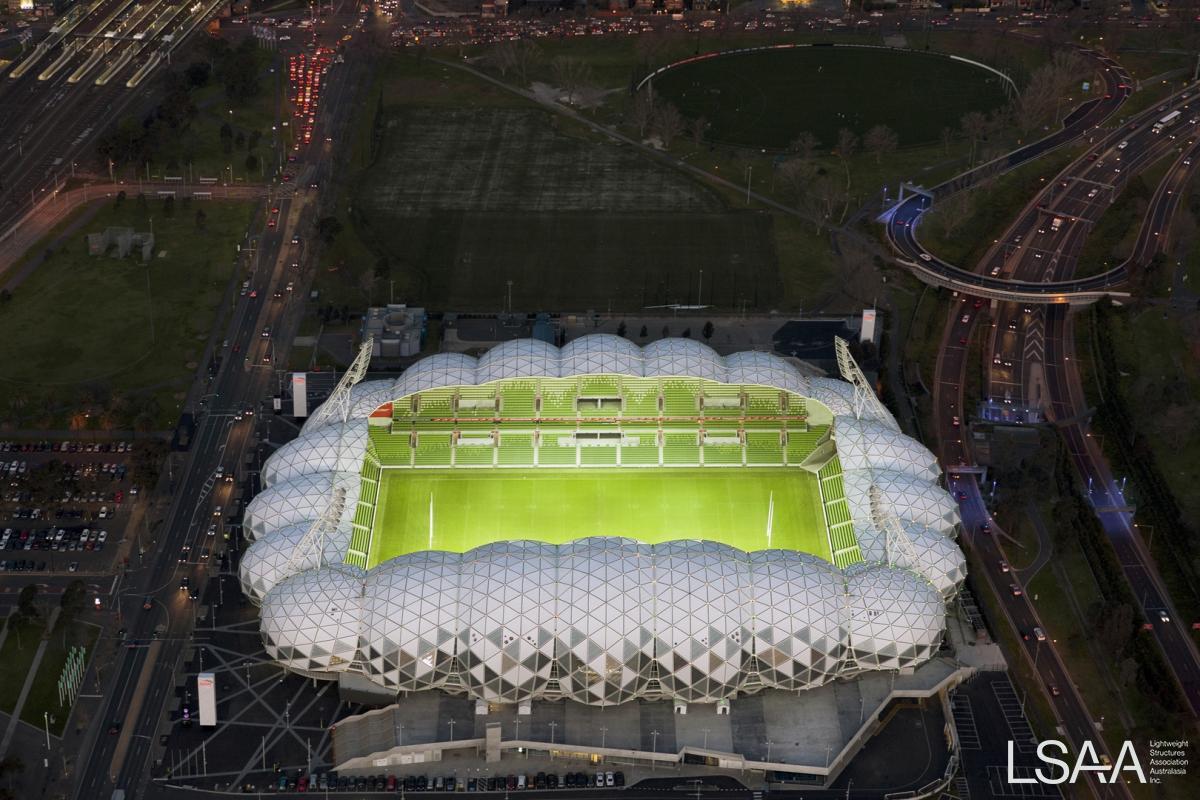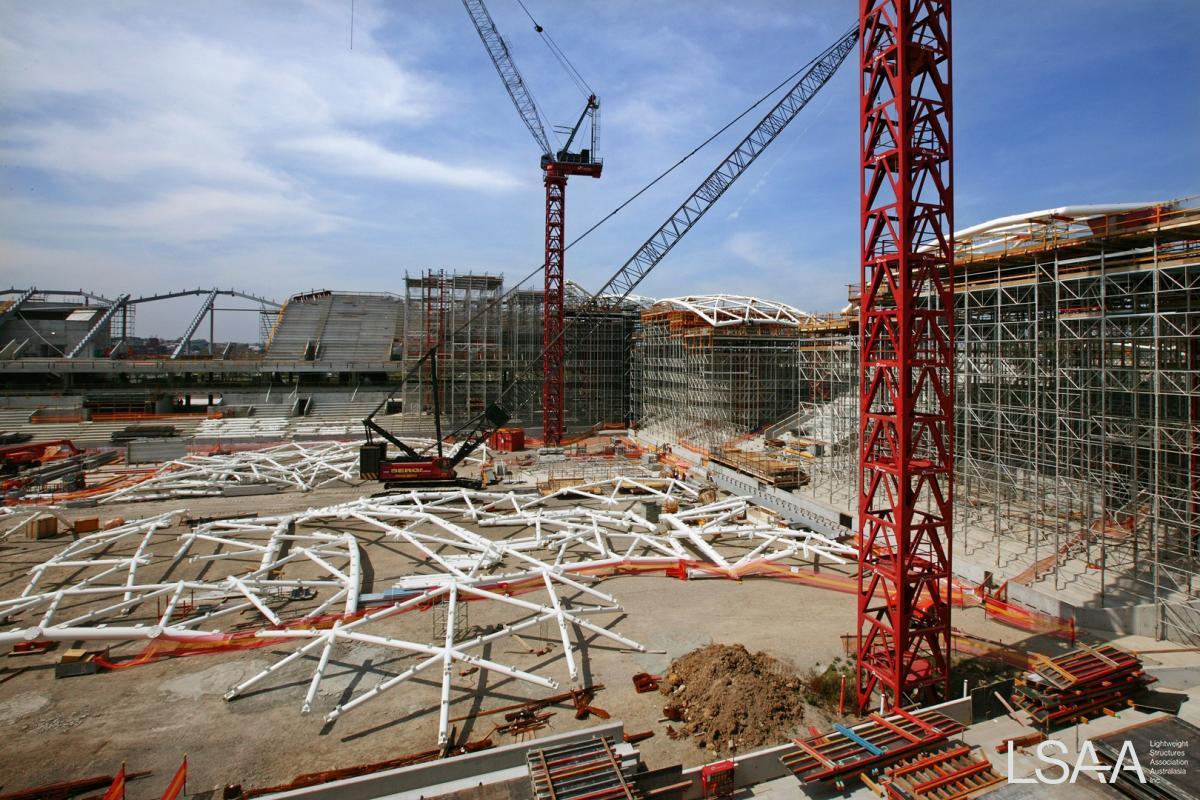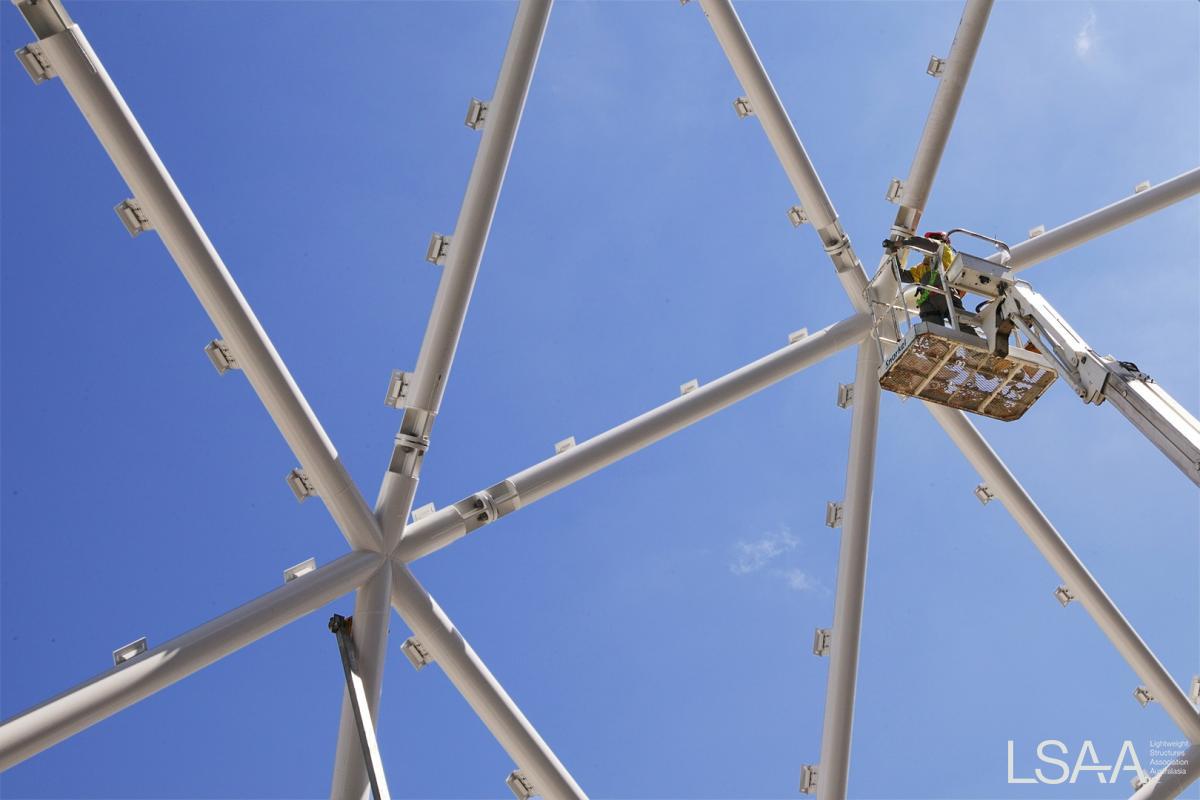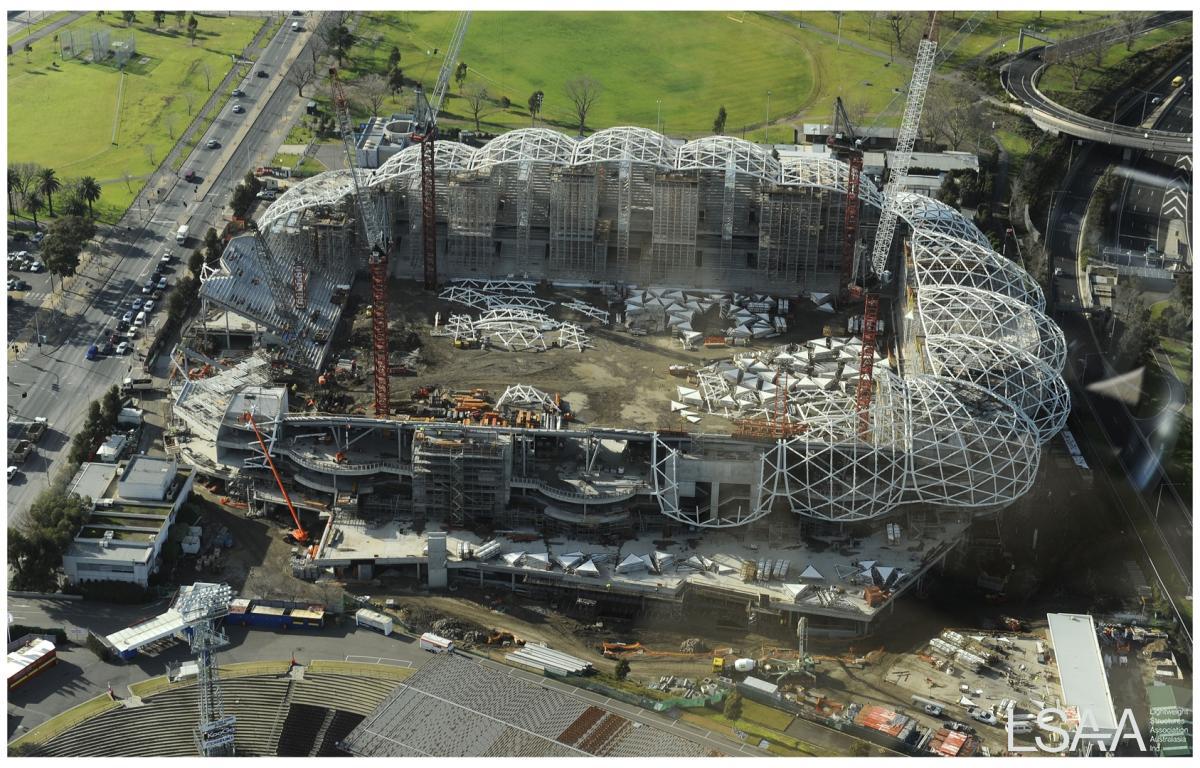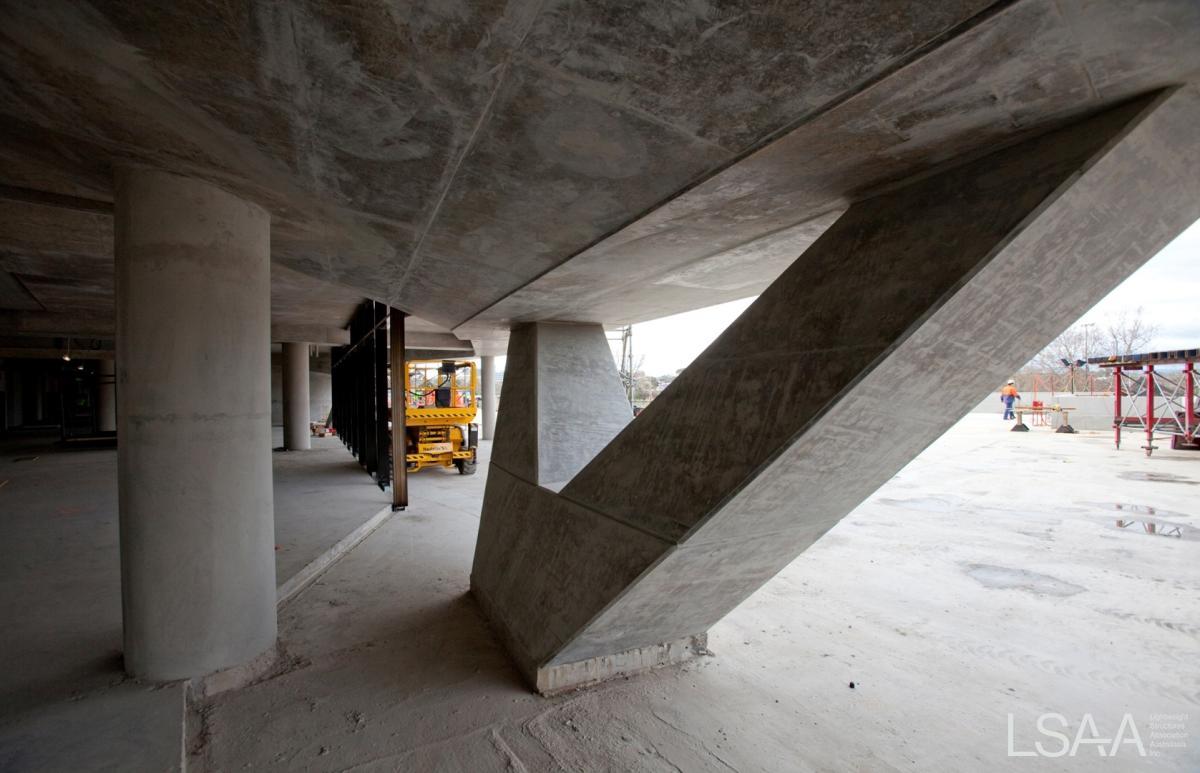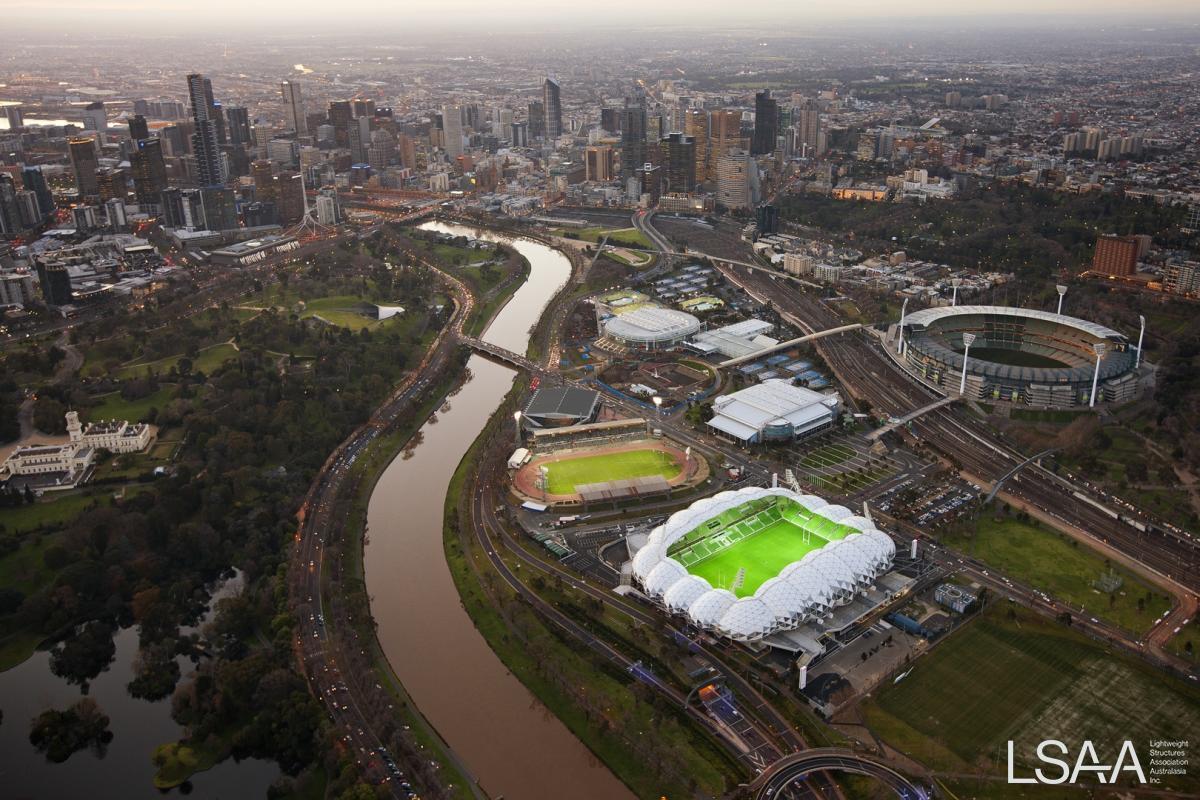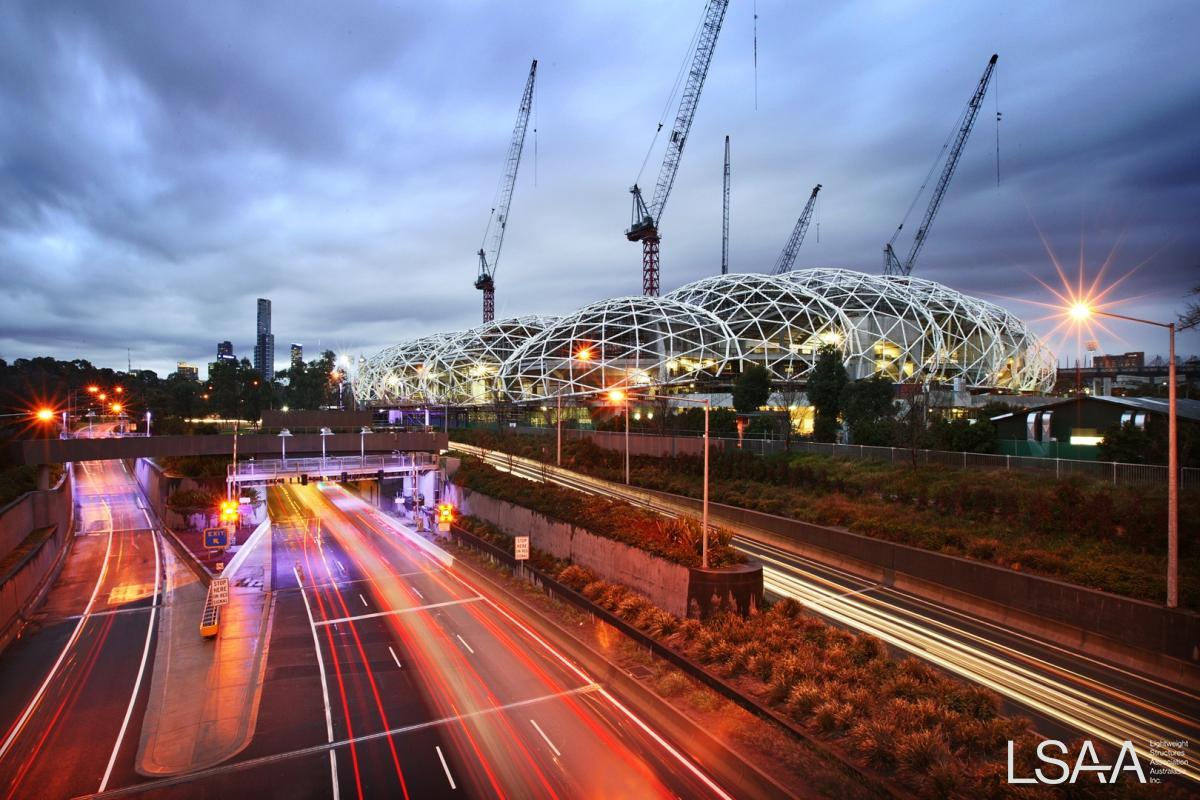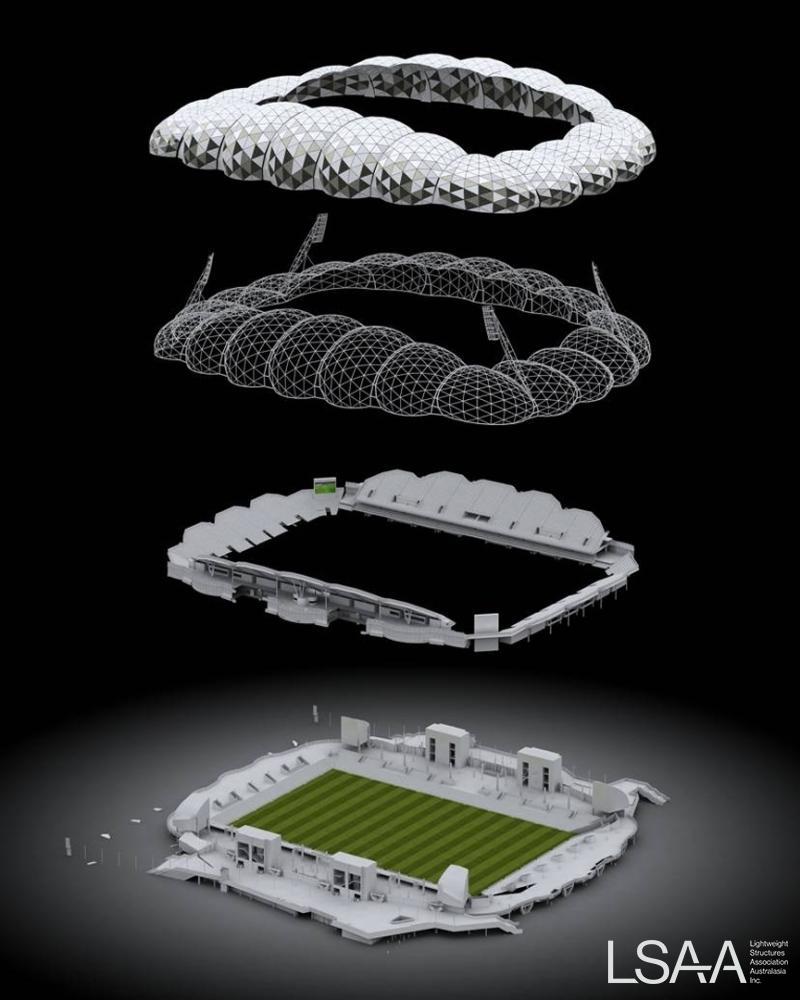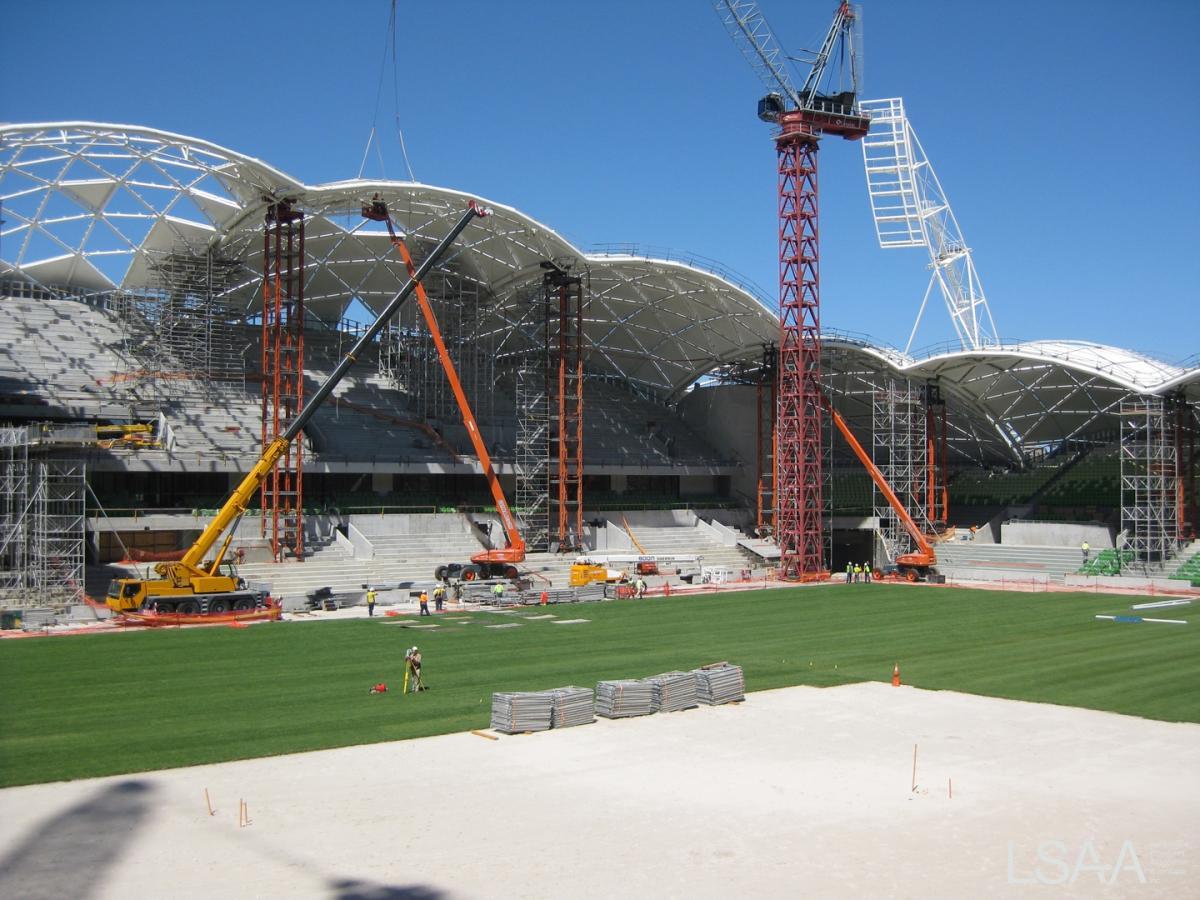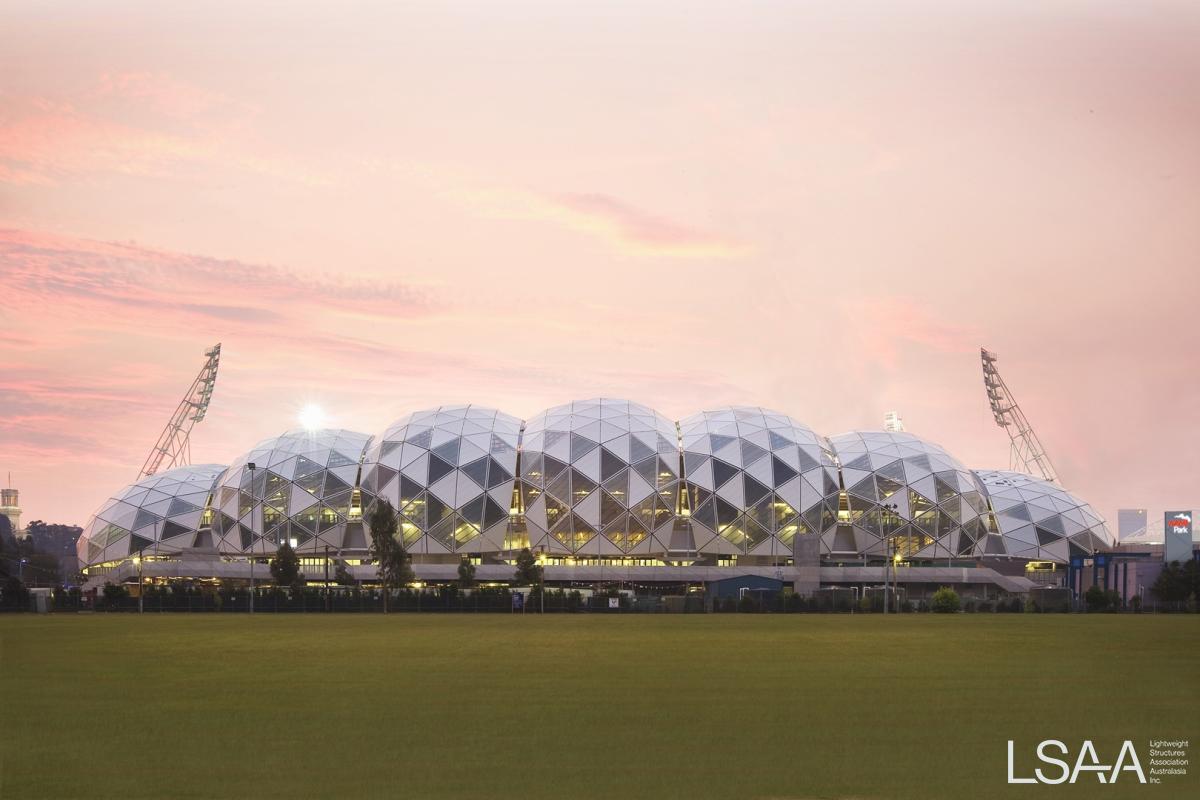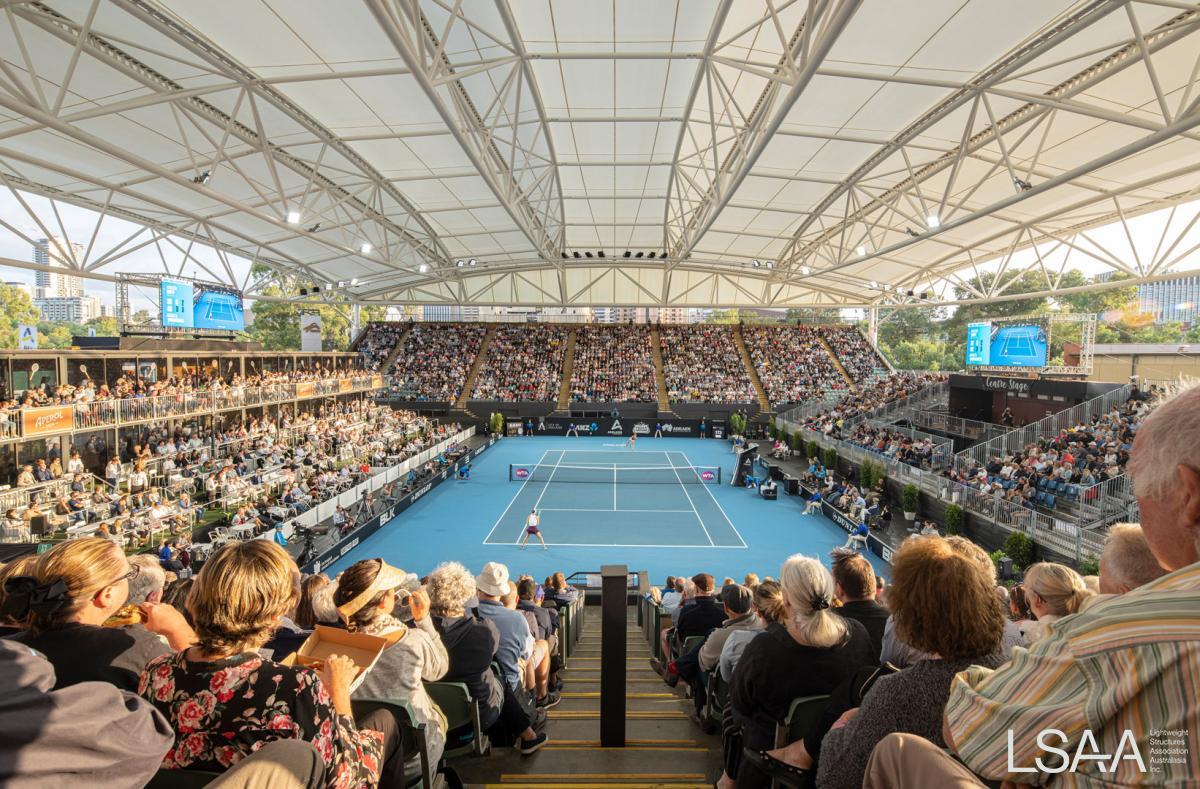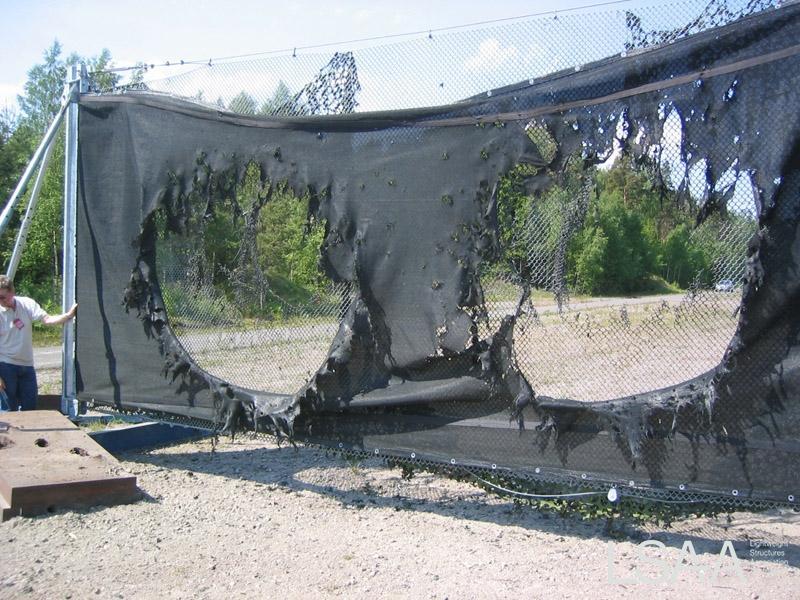LSAA 2018 Design Awards HIGH COMMENDATION - Category 6 Collaboration (6431)
Application: Mixed fabric PTFE and EPTFE Tensile Membrane Roof over the 60,000 seat Perth Optus Stadium.
PROJECT DESCRIPTION:
The crowning cap of the New Perth Stadium is the “halo” roof that appears to float above the main seating bowl and façade. The use of architectural membrane materials created an ultra lightweight roof, enabling a lightweight steel frame to be constructed that compliments the minimal form of the roof.
The roof structure is a continuous fabric roof free from movement joints and integrated with lighting, PA and other systems. The translucent roof was enhanced by the use of 2 fabrics – a PTFE and an EPTFE fabric – with contrasting light transmissions creating a visually exciting texture to the Halo internally.
The Optus Stadium is the brand new 60,000 seat sports stadium in Perth.
Two of the LSAA member companies - Arup and MakMax - have been involved in the design and construction of the roof structure.
The Arup design team attended the cracking one day cricket game between Australia and England for the first major event at Optus Stadium. The feature of the stadium is the lightweight cantilevering roof that has a clean fabric membrane soffit and those huge speakers pack a punch. Unfortunately we lost the day only by a few runs but the atmosphere was great.
First Day-Night Cricket Test at the Rennovated Adelaide Oval
The first day-night cricket test was held at the recently renovated Adelaide Oval.
A swinging pink ball was a factor in the very close and low scoring game which Australia managed to win.
Another factor in the success of the inaugral day-night test was the Adelaide Oval with its recently completed new stadiums.
This type of stadia are the kinds of iconic structures that our members are passionate about.
Here are some images that I took in July 2015 - unfortunately not during the test.
The Adelaide Oval is a world class cricket facility that has been the focus of a $535 million redevelopment which was completed in 2014.
The slider shows some images from a visit in July 2015.
Photo Credits: Peter Kneen
A link to view details (non-engineering) of the stadiums for the 2010 World Cup in South Africa:
http://www.smh.com.au/world-cup-2010/stadiums
Stadium profiles
Credits: The following article is adapted from
http://www.mediaclubsouthafrica.com/index.php?
option=com_content&view=article&id=
93:World+Cup+stadiums&catid=39:2010_bg&Itemid=59
The 2010 Fifa World Cup will be played out in 10 newly built or upgraded stadiums, in nine South African cities.
Five are existing stadiums, all of which have been upgraded, with the showpiece Soccer City in Johannesburg having undergone a major upgrade. The remaining five have been built from scratch - and completed on schedule.
The stadiums are:
Soccer City Stadium, Johannesburg
Ellis Park Stadium, Johannesburg
Cape Town Stadium, Cape Town
Loftus Versfeld Stadium, Pretoria
Durban Stadium, Durban
Nelson Mandela Bay Stadium, Port Elizabeth
Royal Bafokeng Stadium, Rustenburg
Free State Stadium, Bloemfontein
Mbombela Stadium, Nelspruit
Peter Mokaba Stadium, Polokwane
Demolition and groundwork began in 2006, with construction of all the major facilities starting in February 2007. South Africa’s construction industry, which has substantial experience in large-scale infrastructure development, was consulted about the stadium timelines - and it was agreed that the dates were realistic.
Structural Design of the Arch and Roof of Wembley Stadium
Kourosh Kayvani, PhD, FIEAust, CPEng
Aurecon, Sydney, Australia
ROOF DESCRIPTION
The aim of the new Wembley Stadium was to design and build a state-of-the-art national stadium, unlike any other in the world. The new stadium, with its elegant exposed steel structure arch, is an international icon as was the old stadium with its twin towers which was built in 1923.
The design brief required the roof not to cover the playing field which lead to one unique aspect of the roof in that it partially retracts over the seats to allow the daylight to reach all points of the pitch and thus a shadow-free playing field.
The retractable roof is formed by seven separate independently driven roof panels totalling 15,000 sqm that move in a parallel motion to the south as they "open" and stack on the top of one another when in a fully "open" position.
With the retracting roof panels all moving to the south, the roof design exploits the opportunity to have a tall, structurally efficient structure on the north side to support the north and south roofs. The solution was to have an elegant and structurally efficient arch which spans the entire width of the stadium's seating bowl (Figure 1).
Email for complete paper.
Entrant: Tensys Engineering Pty Ltd
Location: Robina, Qld. Client: The State of Qld. Major Sport Facilities Authority
Architect: Populous (formerly HOK SVE) Struct. Eng.: SKM Specialist: Tensys Engineering Pty Ltd
Others: Beenleigh Steel Fabrications Pty Ltd Builder: Watpac Limited Fabricator: Hightex GmBh
This project was entered in the LSAA 2009 Design Awards, Category 3 #3066
Skilled Park, located in the suburb of Robina on the Gold Coast, was officially opened in March 2008 and is the home ground of NRL club Jetstar Gold Coast Titans and new football club Gold Coast United Football Club who joined the A-League in 2009.
The multi-purpose sporting and entertainment stadium was constructed over a two-year period and includes seating for 27,400 spectators.
Designed to be suitable for all rectangular field sports including Rugby League, Rugby Union and Football, the stadium includes 100 open corporate boxes
The LSAA 2007 Conference held at the Gold Coast included a site visit to the nearby Robina Stadium which was under construction. The stage of construction was the installation of the tensioned fabric roof panels.
The following are some images taken during that visit.
Entrant: Structurflex Ltd - Engineering Fabrication Installation
Location: Sandy - Salt Lake City Utah USA
Client: Salt Lake County - Utah & Real Salt Lake
Architect: Rossetti Architects
Struct. Eng.: Wade Design Engineers & Wayne Rendely PE
Builder: Turner Construction
Fabricator: Structurflex
This project was entered in the LSAA 2009 Design Awards, Category 3 #3002
No further details have been entered to date.
Entrant: MakMax Australia - Designer
Location: Prince Alfred Park - North End Lake - Port Elizabeth South Africa
Client: Nelson Mandela Metropolitan Municipality
Architect: GMP Architects
Struct. Eng.: Schlaich Bergermann & Partners
Others: MakMax (Installation)
Builder: Grinaker / Interbeton JV
Fabricator: MakMax Australia
This project was entered in the LSAA 2009 Design Awards, Category 3 (Large Structures, #3001)
This project was entered in the LSAA 2011 Design Awards (Cat 4, 4002)
PROJECT DESCRIPTION
The Carrara Stadium was originally built in the late 1980’s and played host to a number of events however the venue has traditionally been a football ground. The decision to redevelop the site came as a welcome change to many sporting fans. The redevelopment is also in line with the Queensland government’s bid for the 2014 Commonwealth Games.
The newly named and revamped Metricon Stadium is built to accommodate a Australian Rules football oval, world standard cricket oval, provision to allow future installation of an athletics field and international standard soccer field including all the associated corporate, media and player facilities. The Queensland Government funded project secures a future for sport of all kinds in the region, opens the possibility to world class soccer coming to the region as well as other major national and international sporting events.
Chepauk Stadium, Stage One - Entered in the LSAA 2011 Design Awards (Cat 4)
This project was ambitious from the beginning; a large scale elevated cover over three grandstand seating structures presented a few structural challenges.
The purpose as with many tensile membrane projects was a combination of shade and weather cover. Each seating section required these basic needs met while maintaining a uniform style and aesthetic appeal through out. Our client, The Tamil Nadu Cricket Association, requested minimal connections to the supporting grandstand structure, leaving more space beneath for spectator seating.
The project was designed to create a unique feature to the venue. Often large scale tension membrane roofing contribute a large amount to the look and feel of a venue, it’s a prominent feature and one that needs to be eye-catching and unique.
LSAA 2011 Design Awards Entry (Cat 4, Adelaide Oval Western Grandstand Redevelopment
APPLICATION OF PROJECT: Structural design of lightweight diagrid grandstand roof
PROJECT DESCRIPTION
The Adelaide Oval Western Grandstand Redevelopment comprises the partial demolition and reconstruction of the existing heritage listed western members grandstand into a new A$116m 14,000 seat grandstand. The iconic grandstand was opened for the 2010 Ashes Second Test Match to rave reviews. The diagrid roof forms the centrepiece of the new grandstand achieving structural spans up to 55m with arched 219CHS sections leading to an elegant and exceptionally light (55kg/m2) roof solution to provide the required cover to the grandstand patrons with unobstructed views and designed to withstand 180kph design wind speeds.
Project Entry in LSAA 2011 Design Awards (Cat 6, 6983)
APPLICATION OF PROJECT
AAMI Park is Melbourne’s first purpose built venue for football (soccer), rugby league and rugby union. The 30,000-plus seat stadium offers a world class arena and playing surface for all three codes with an unparalleled spectator experience in terms of sightlines, atmosphere and amenity
PROJECT DESCRIPTION
AAMI Park, with its iconic bio-frame roof, fills a gap in Melbourne’s renowned suite of sporting facilities and increases the city’s ability to attract national and international events.
Home to the Victory, Hearts, Storm, Rebels and Melbourne Football Club teams, the stadium also features a sports medicine centre, elite training facility and administration complex, making it a true sports campus for Melbourne.


